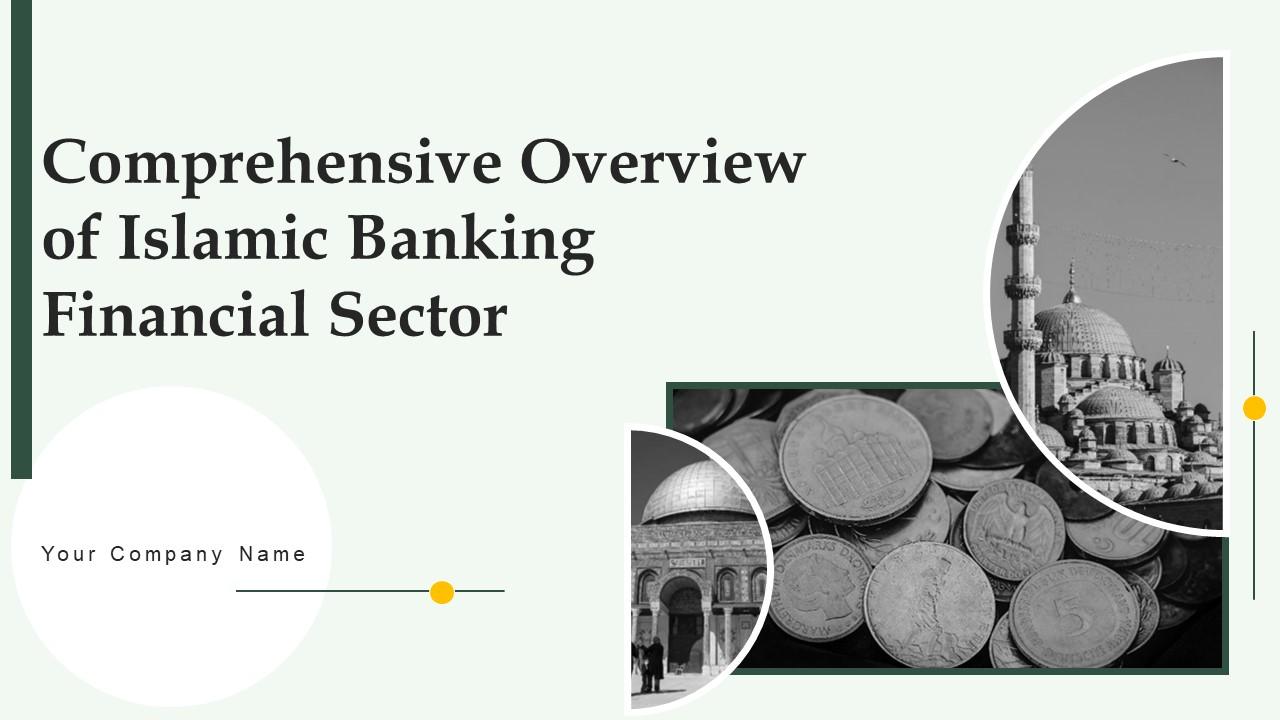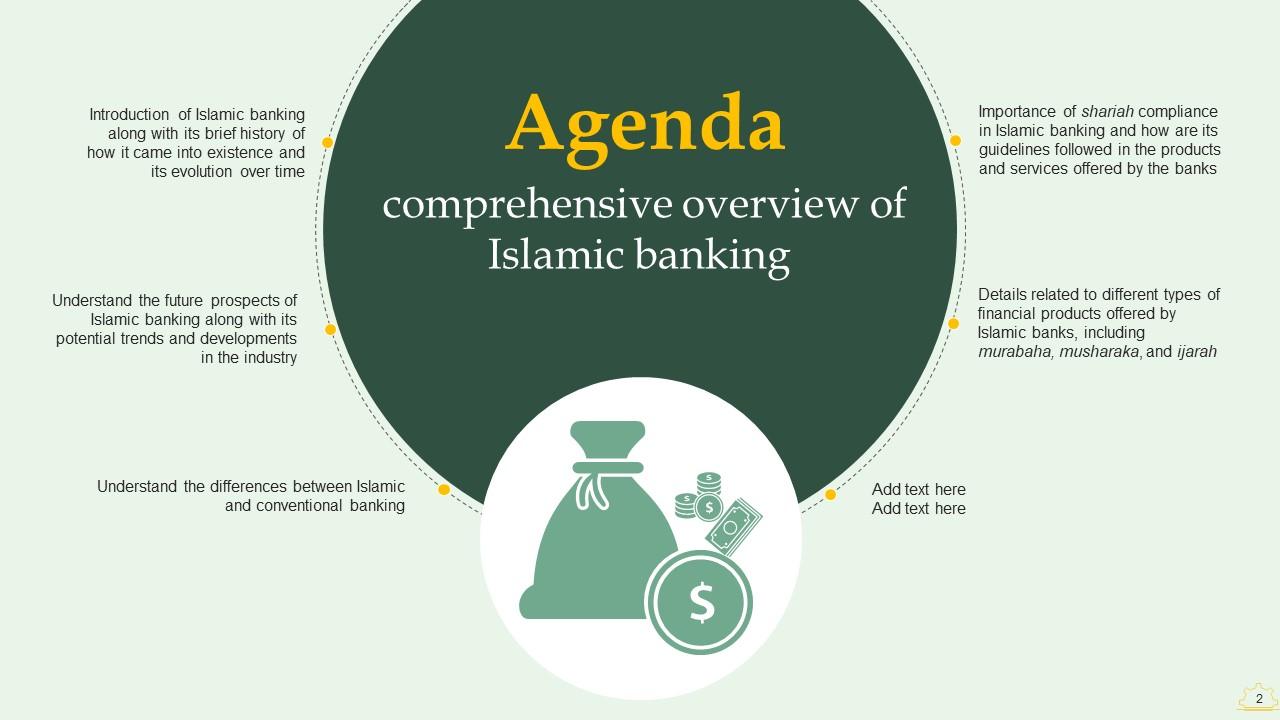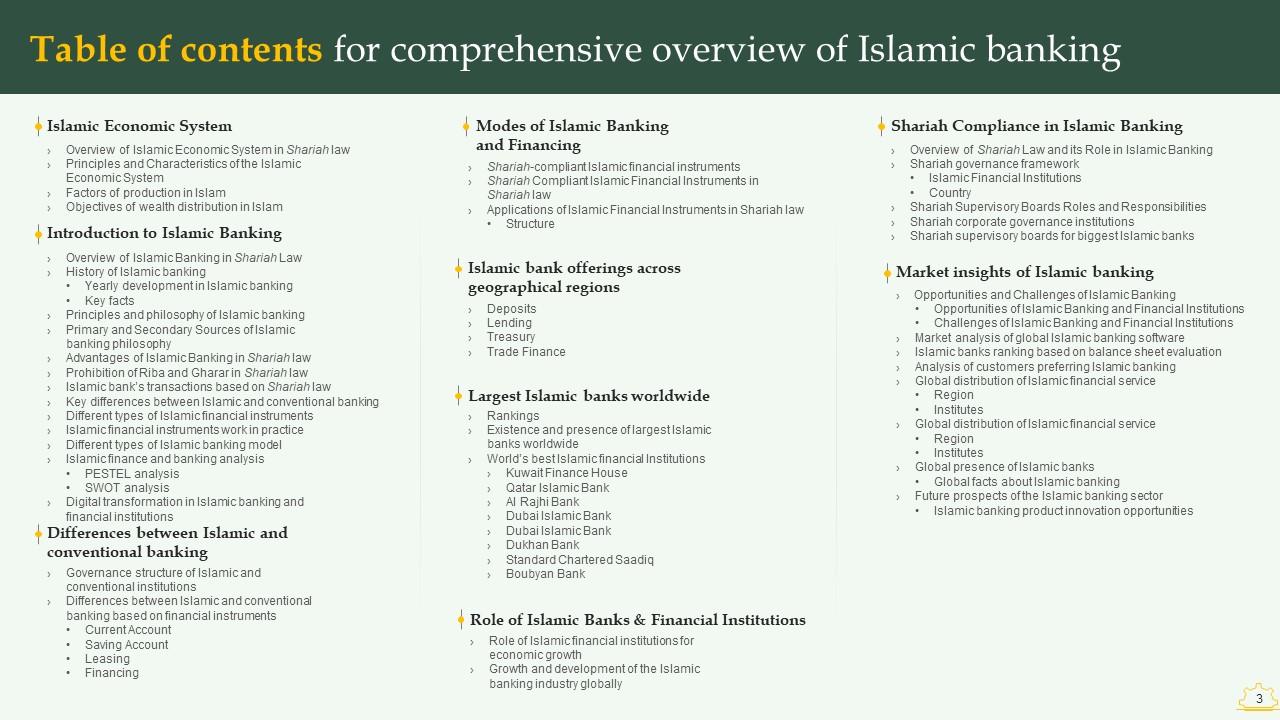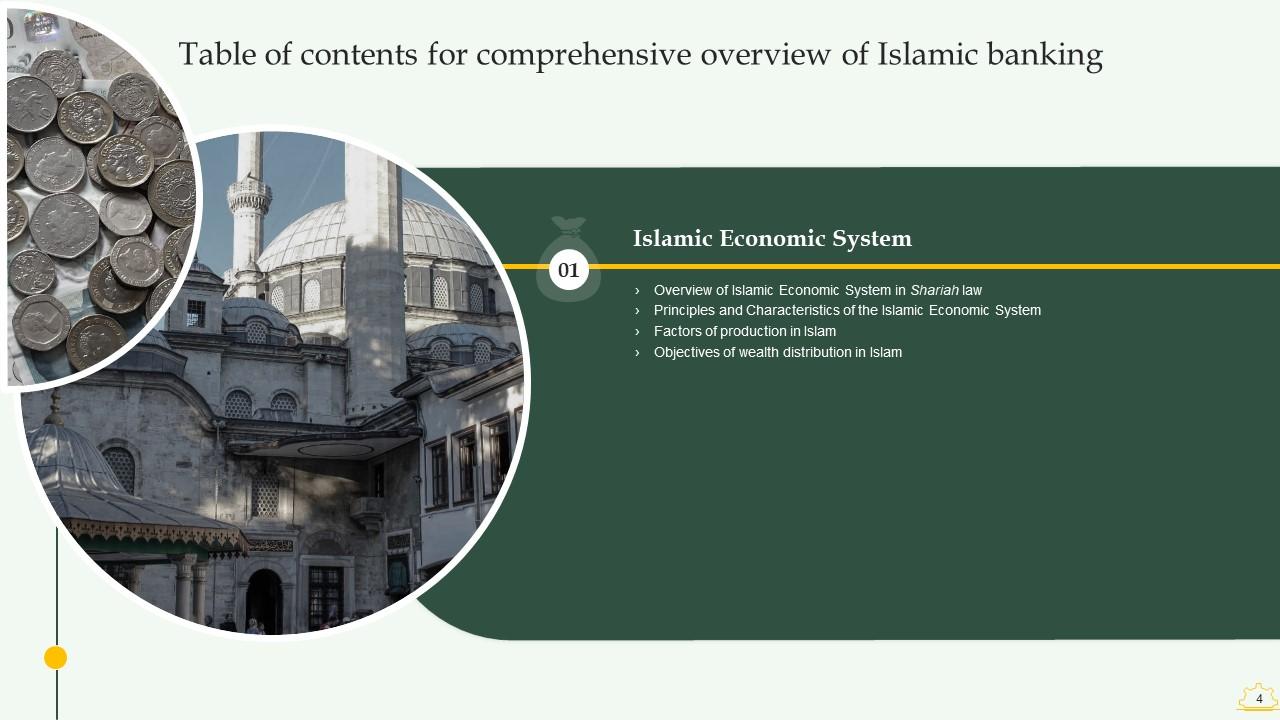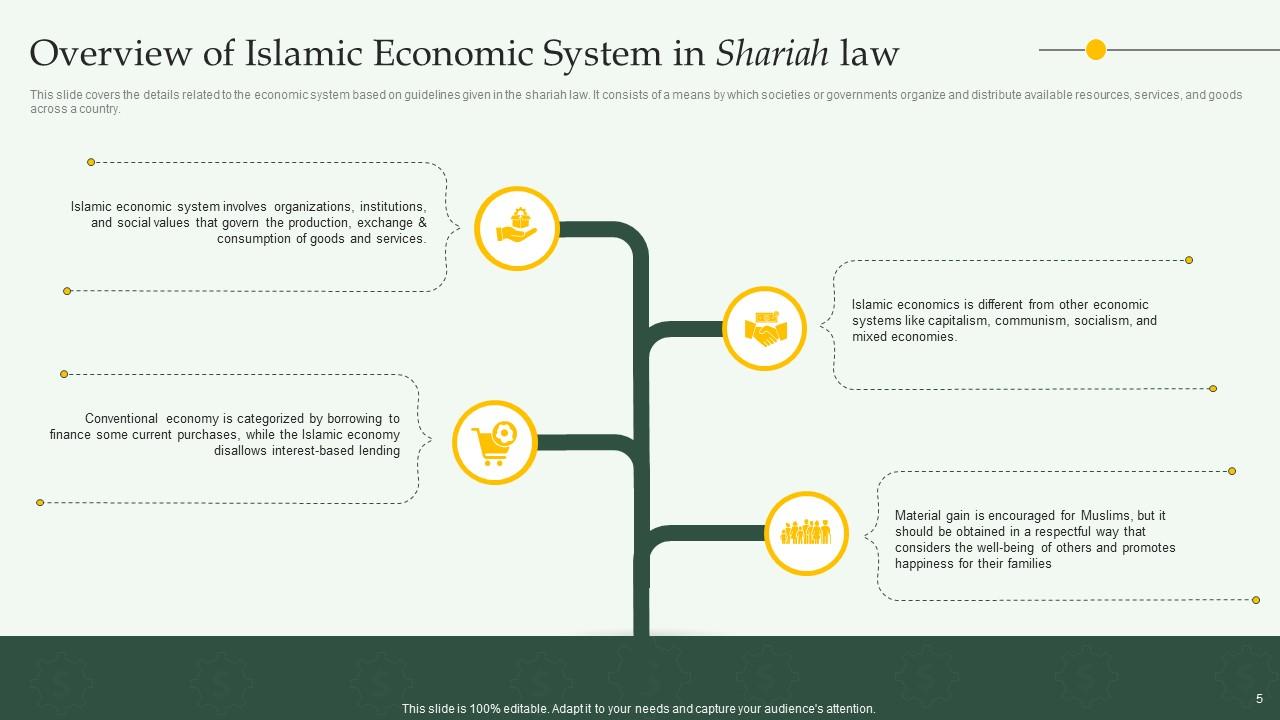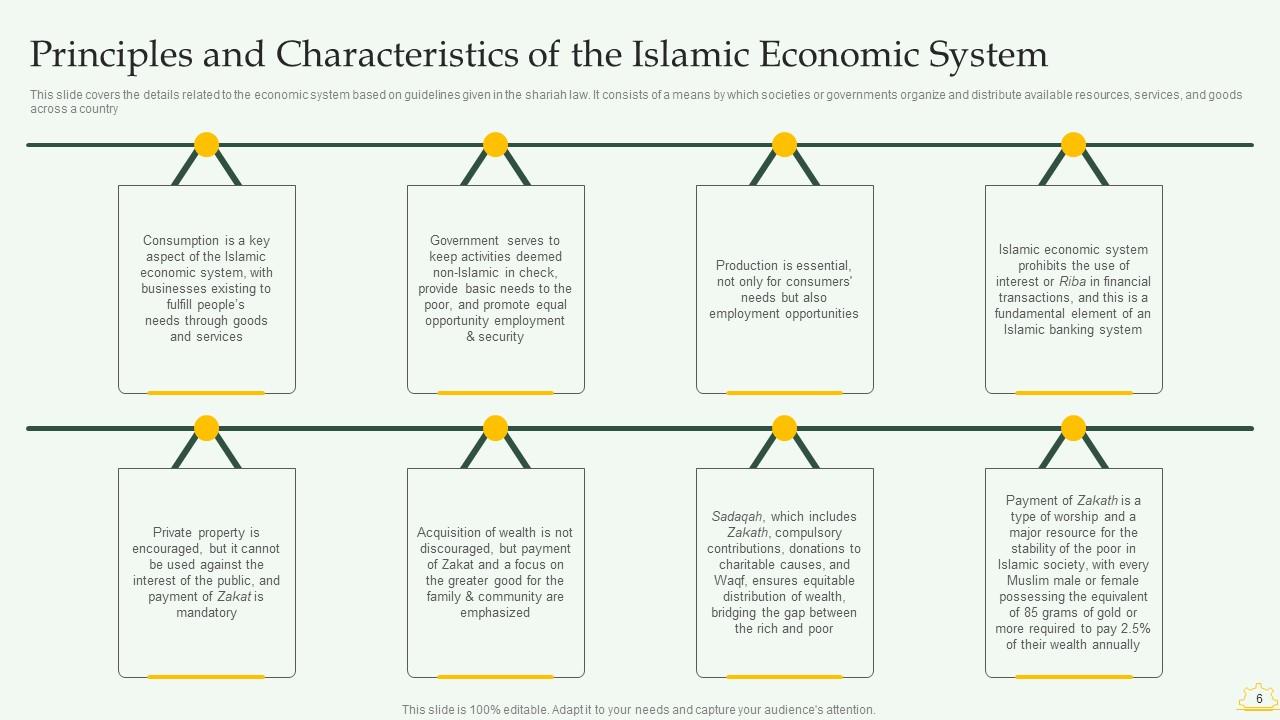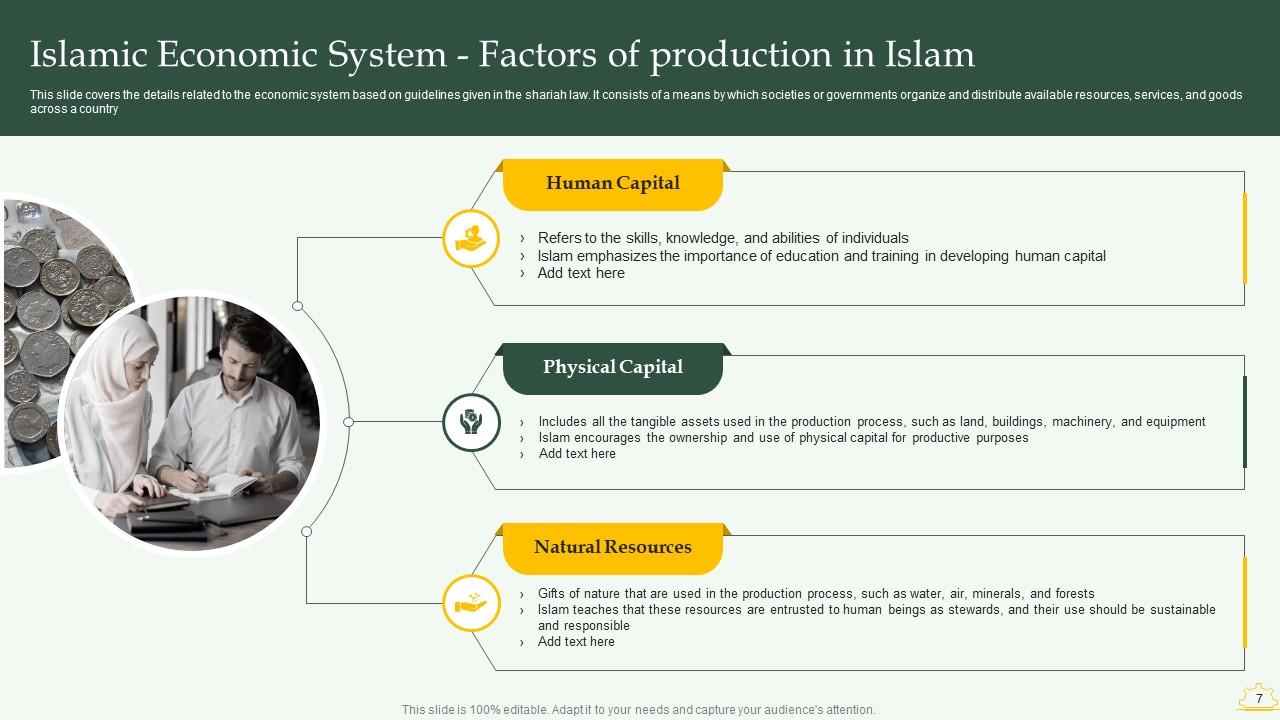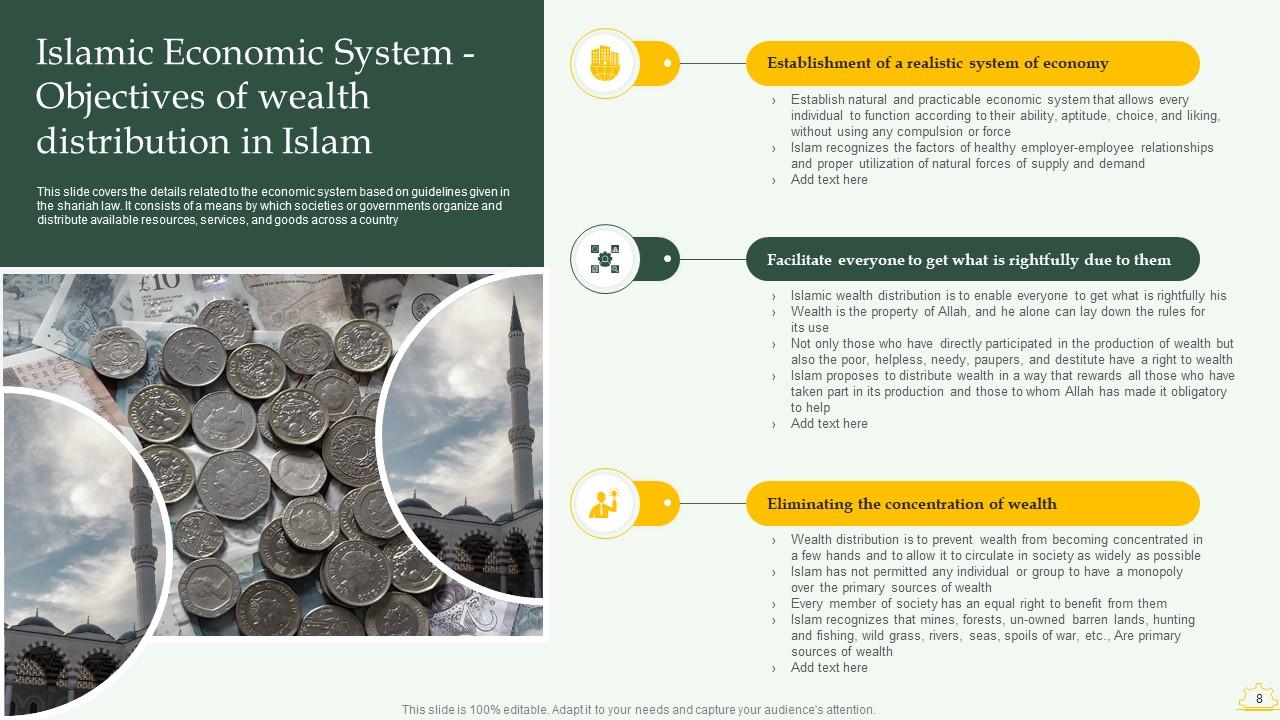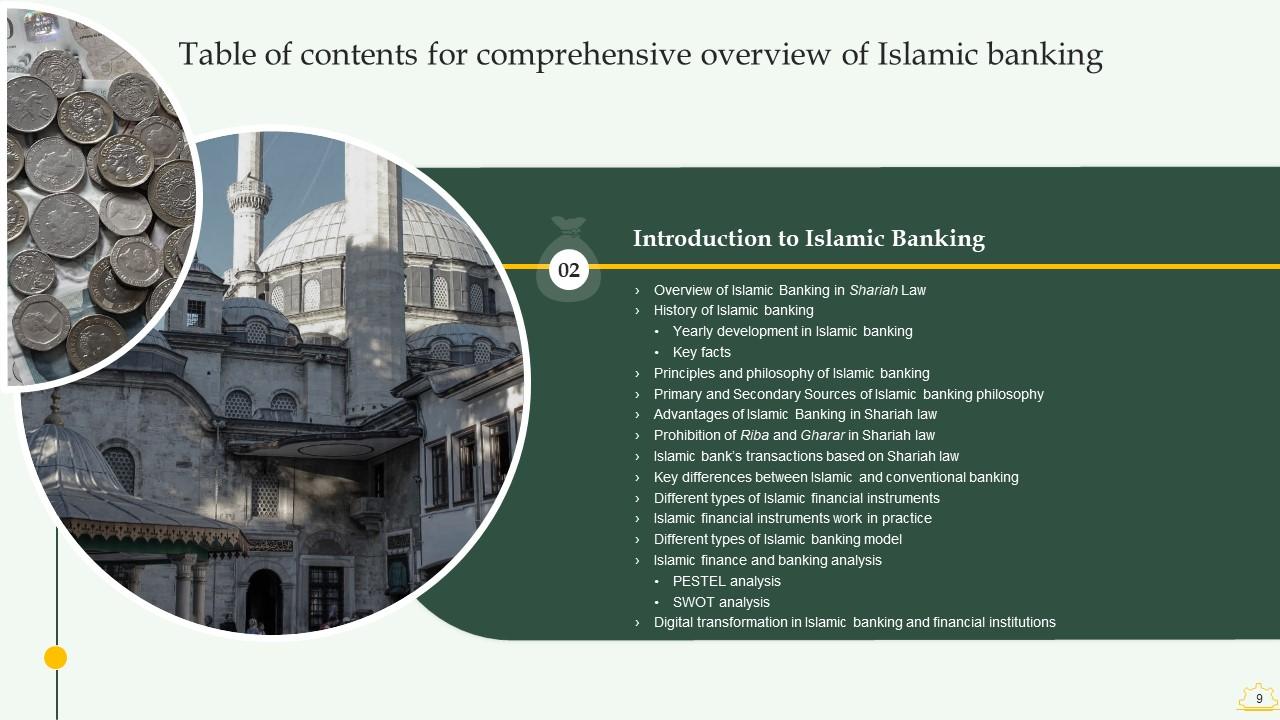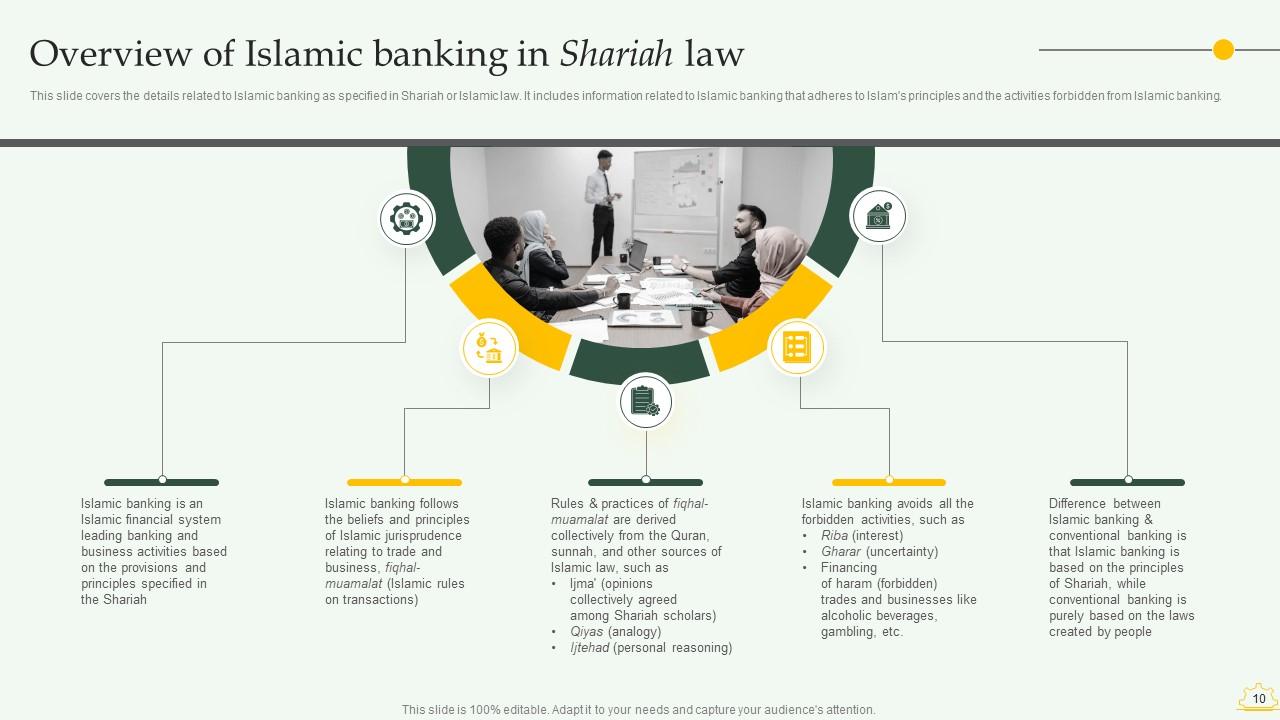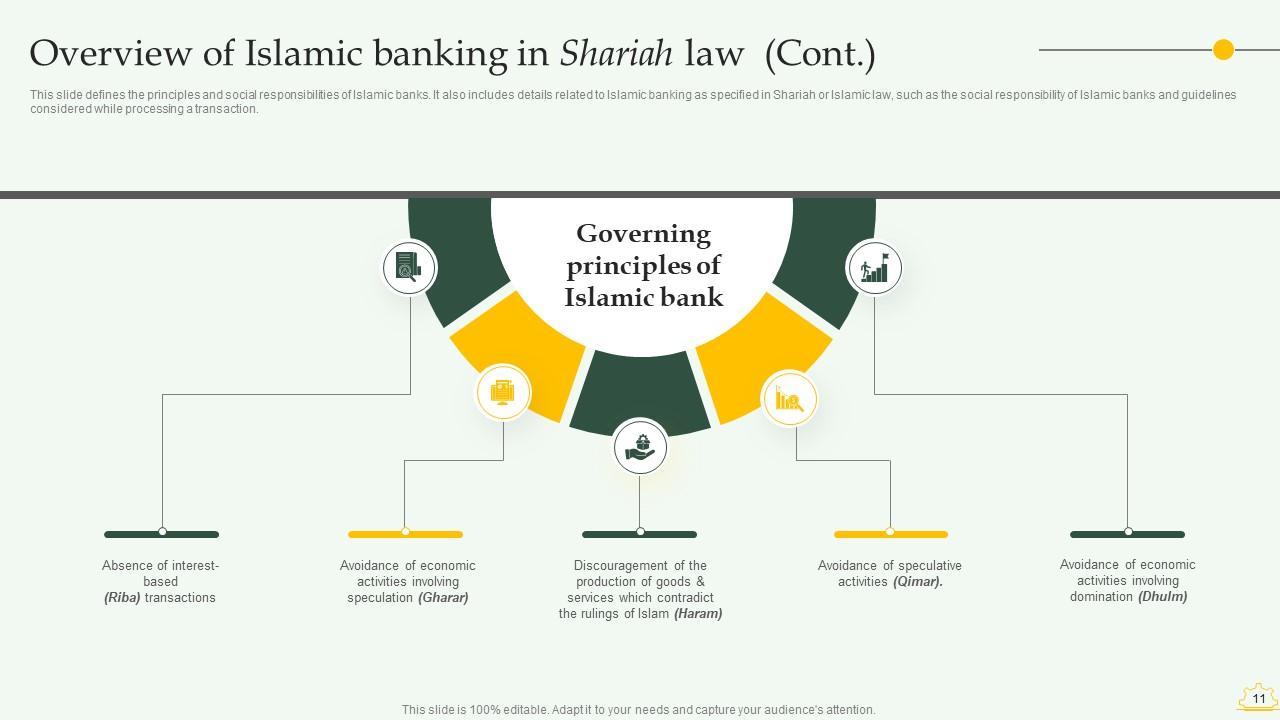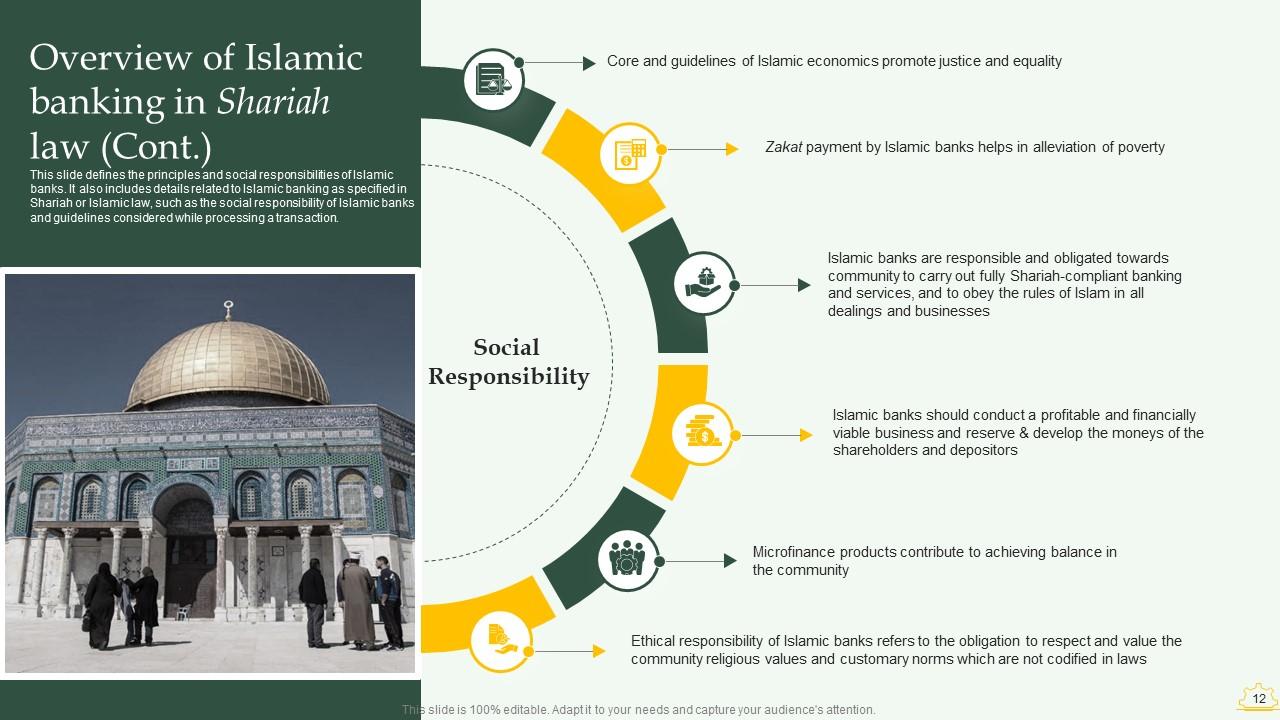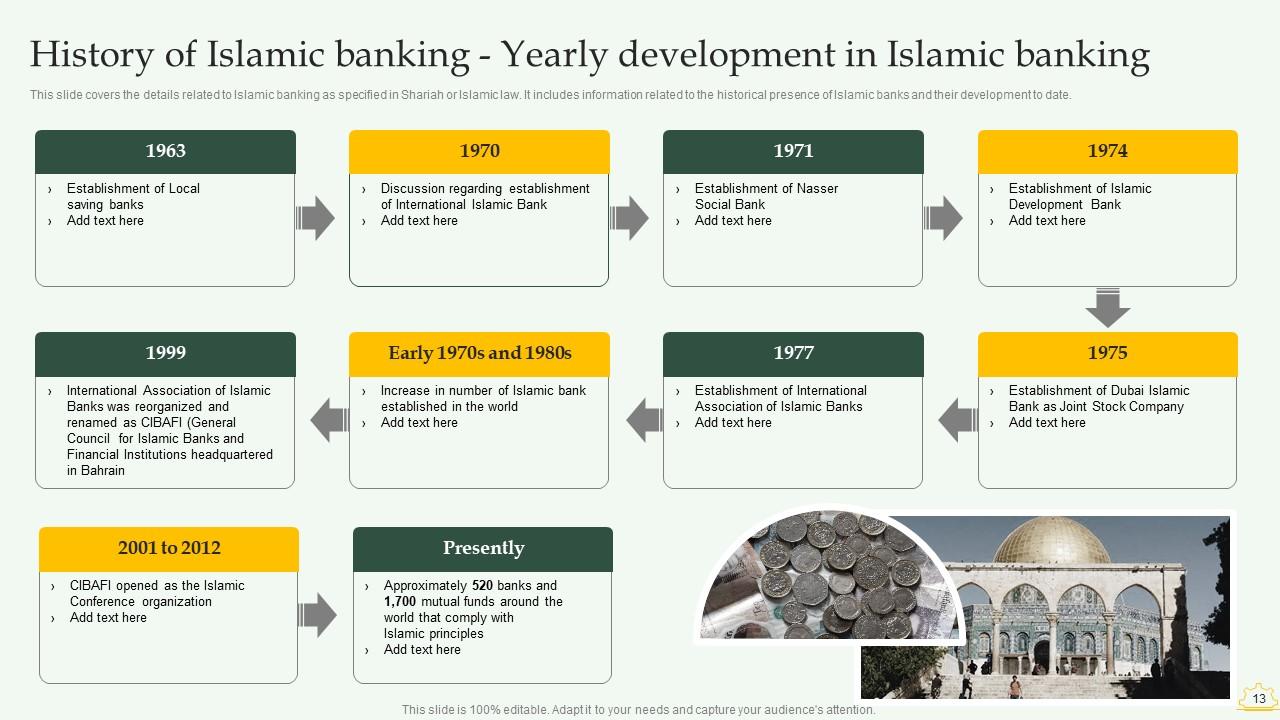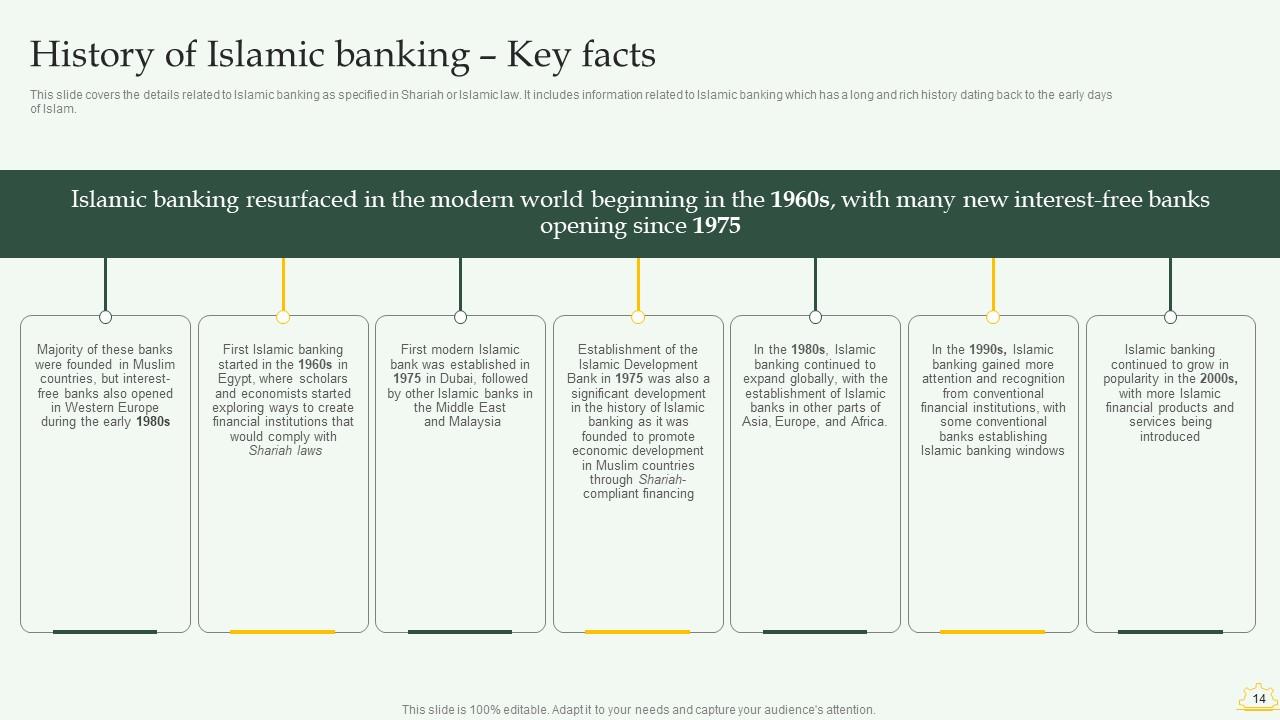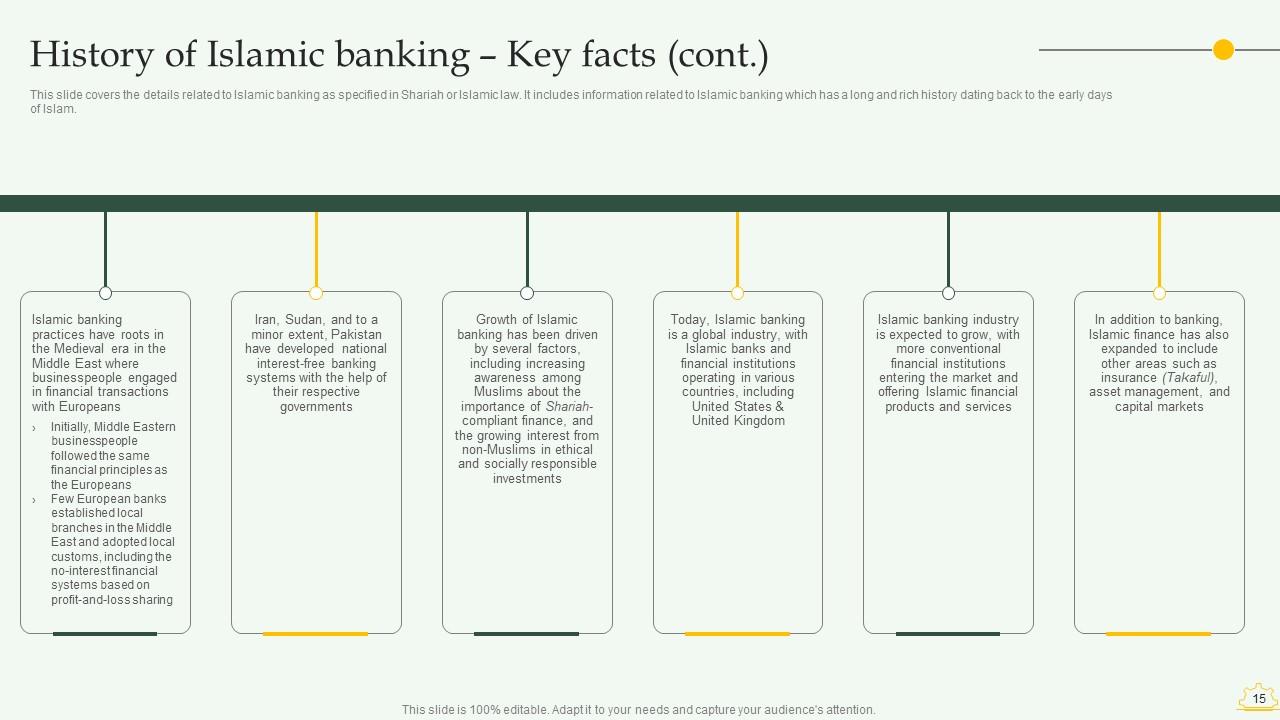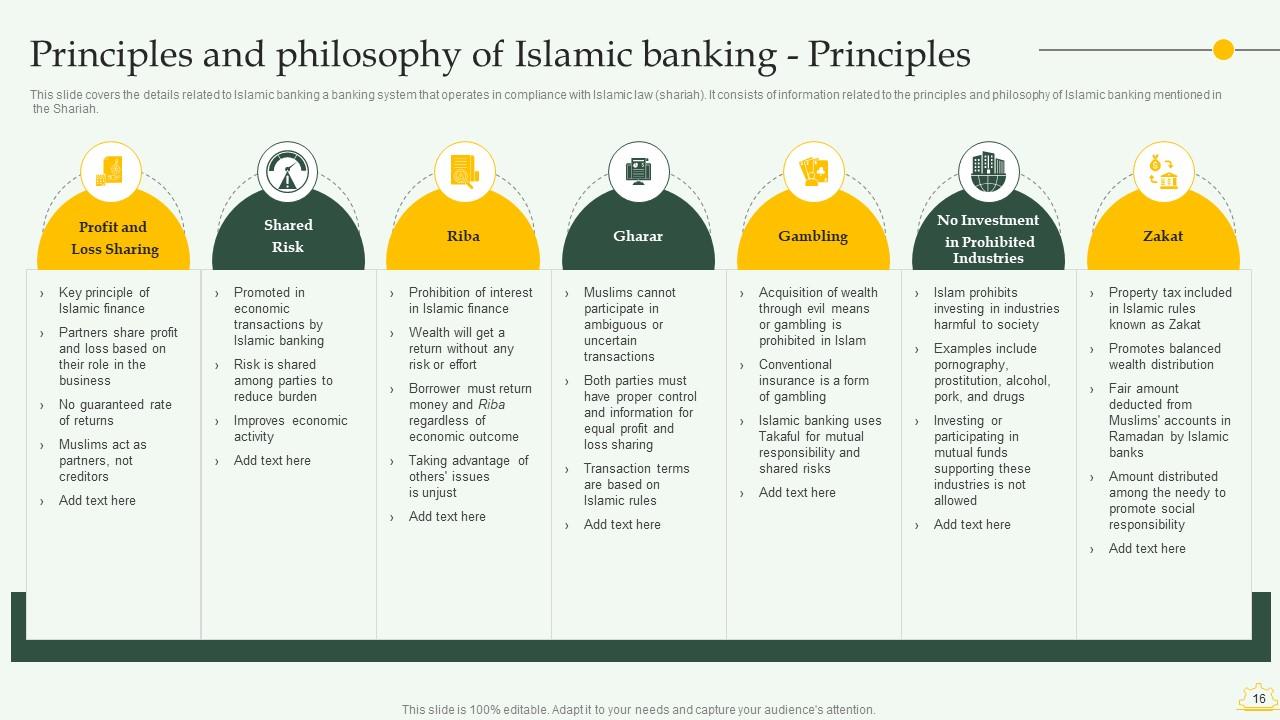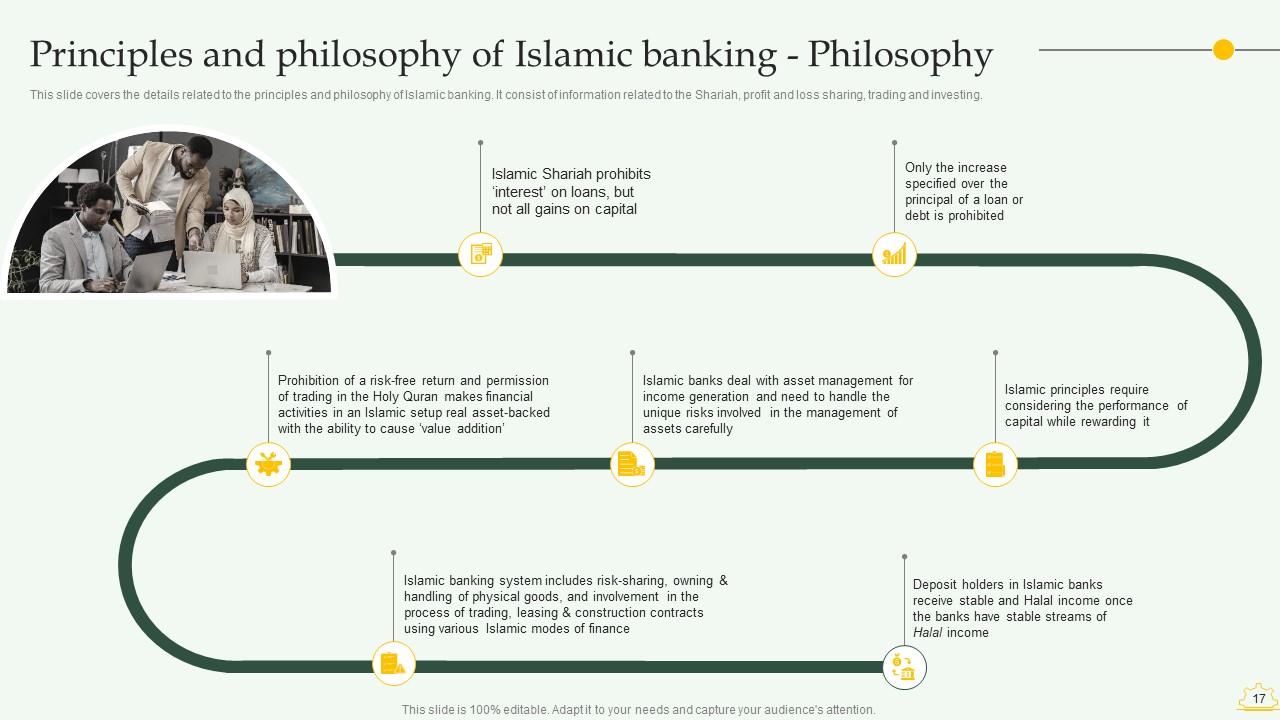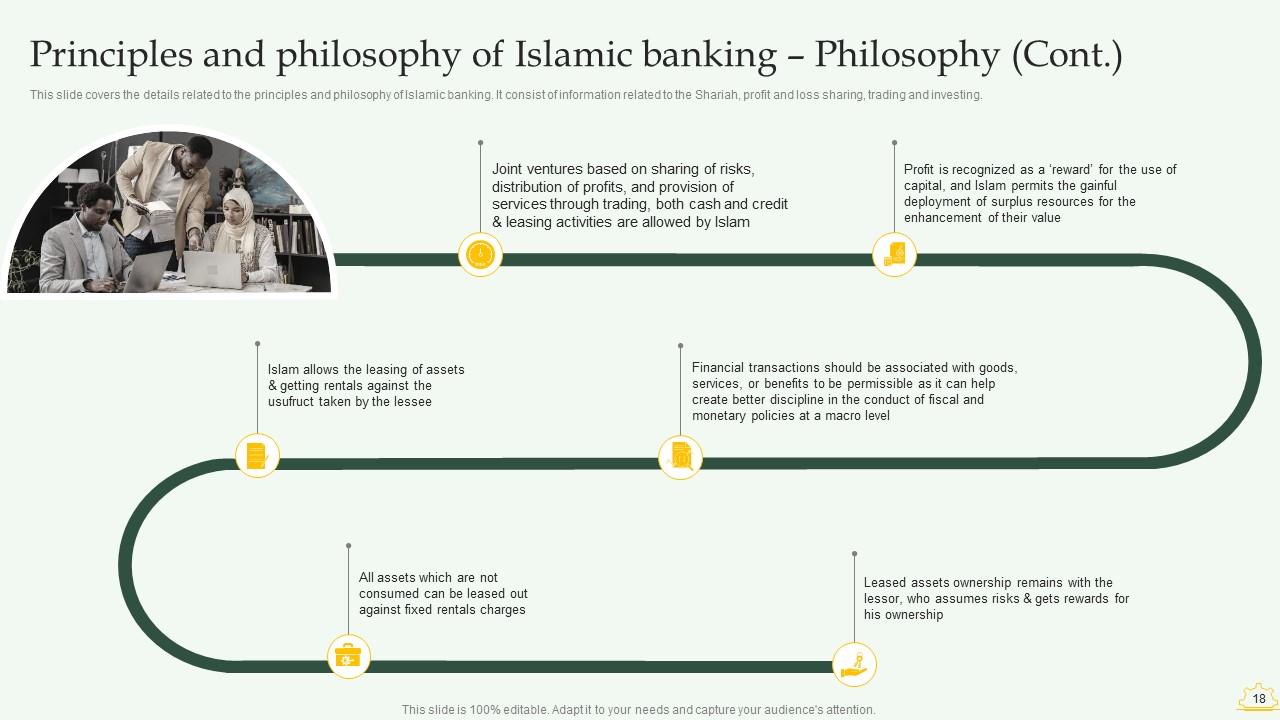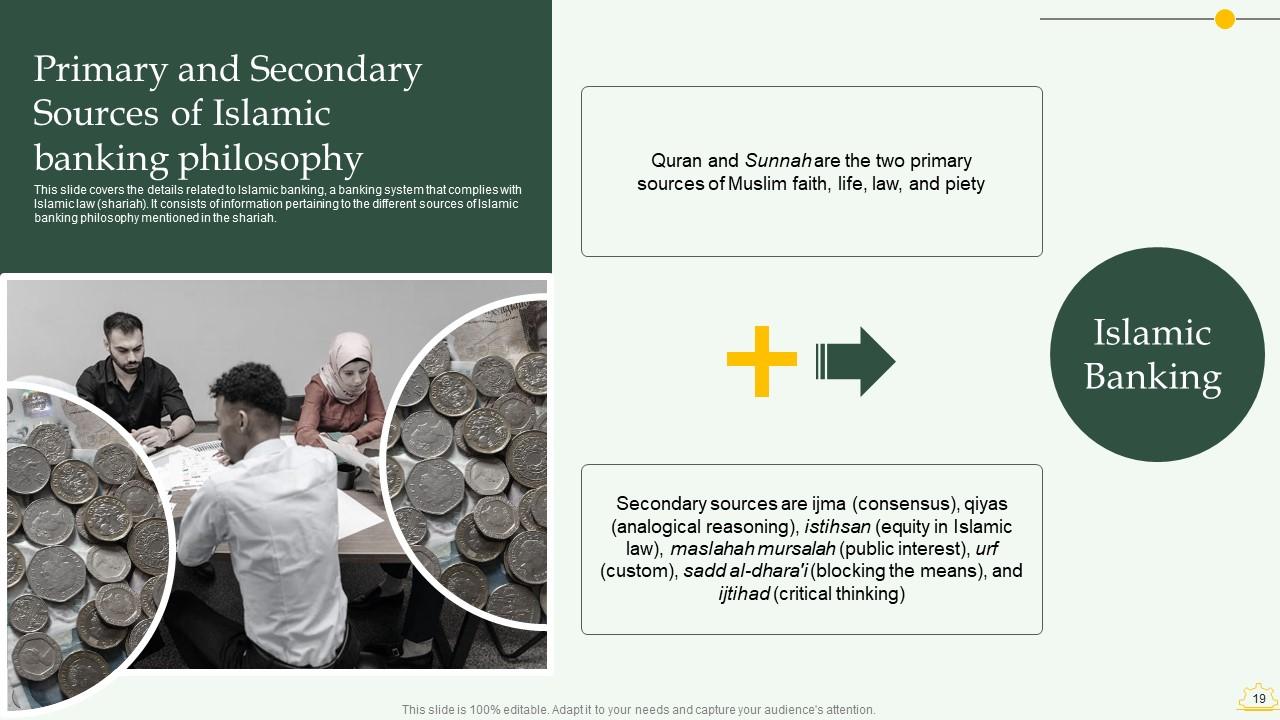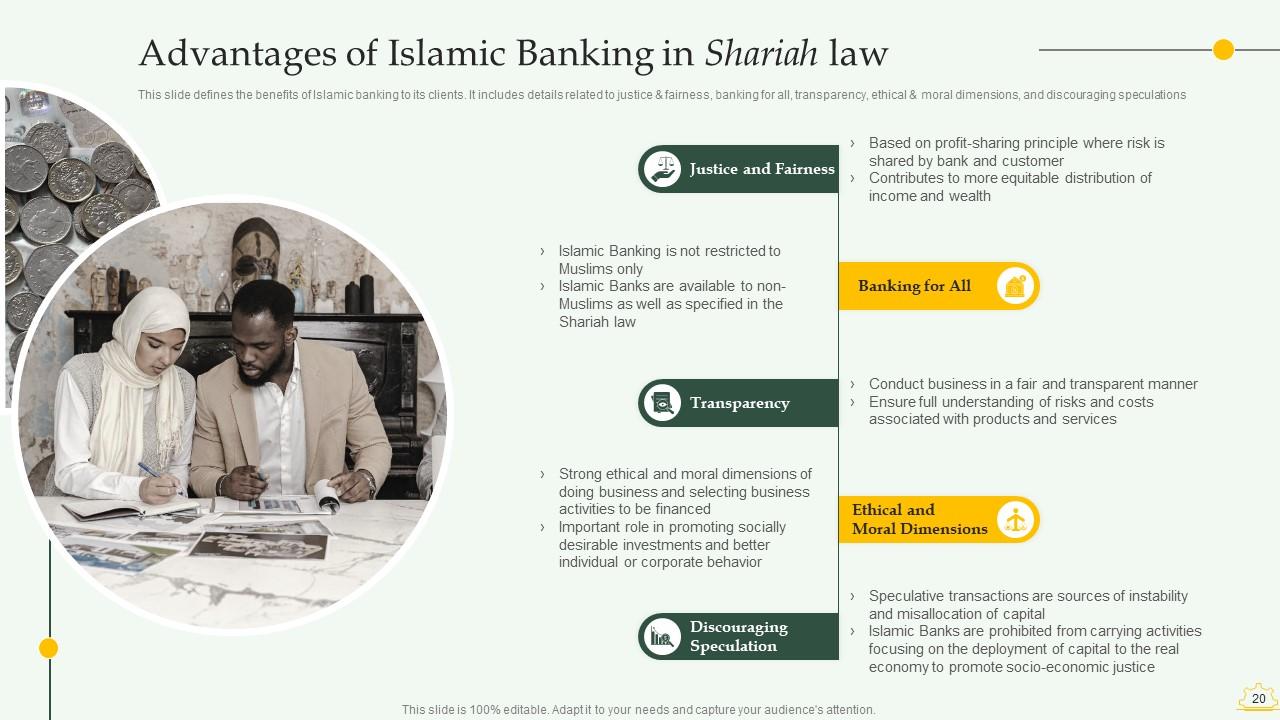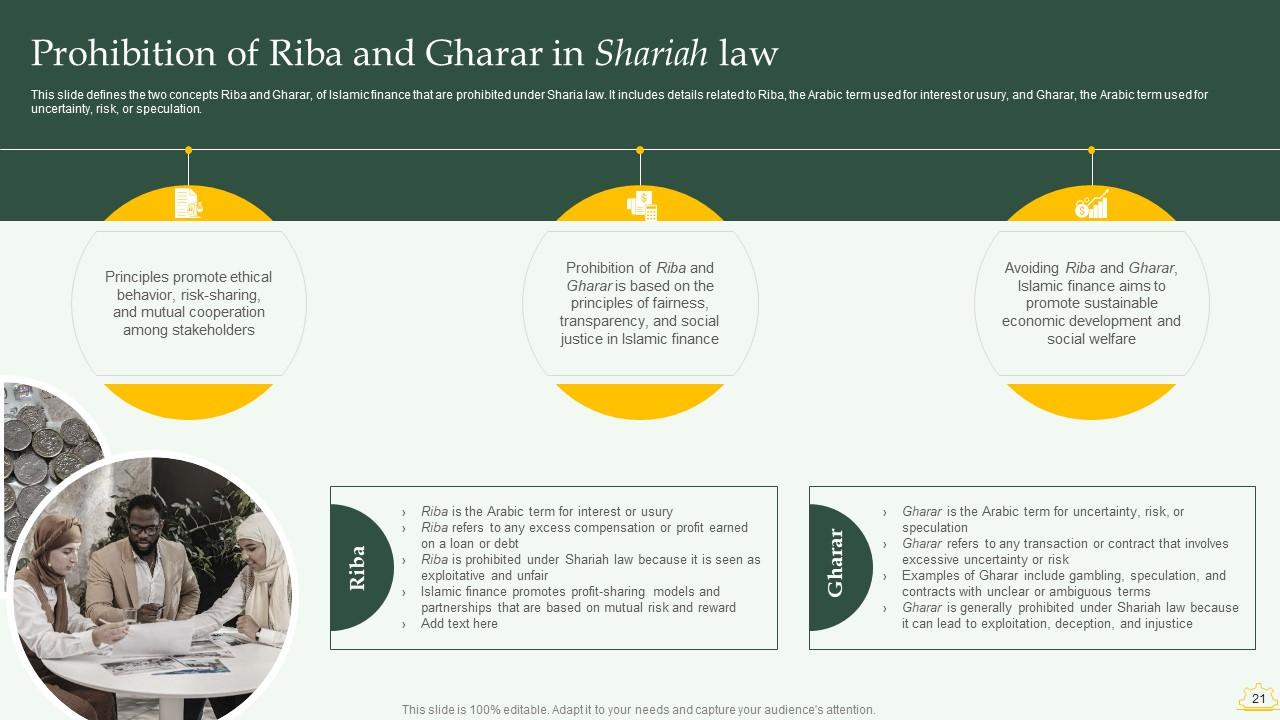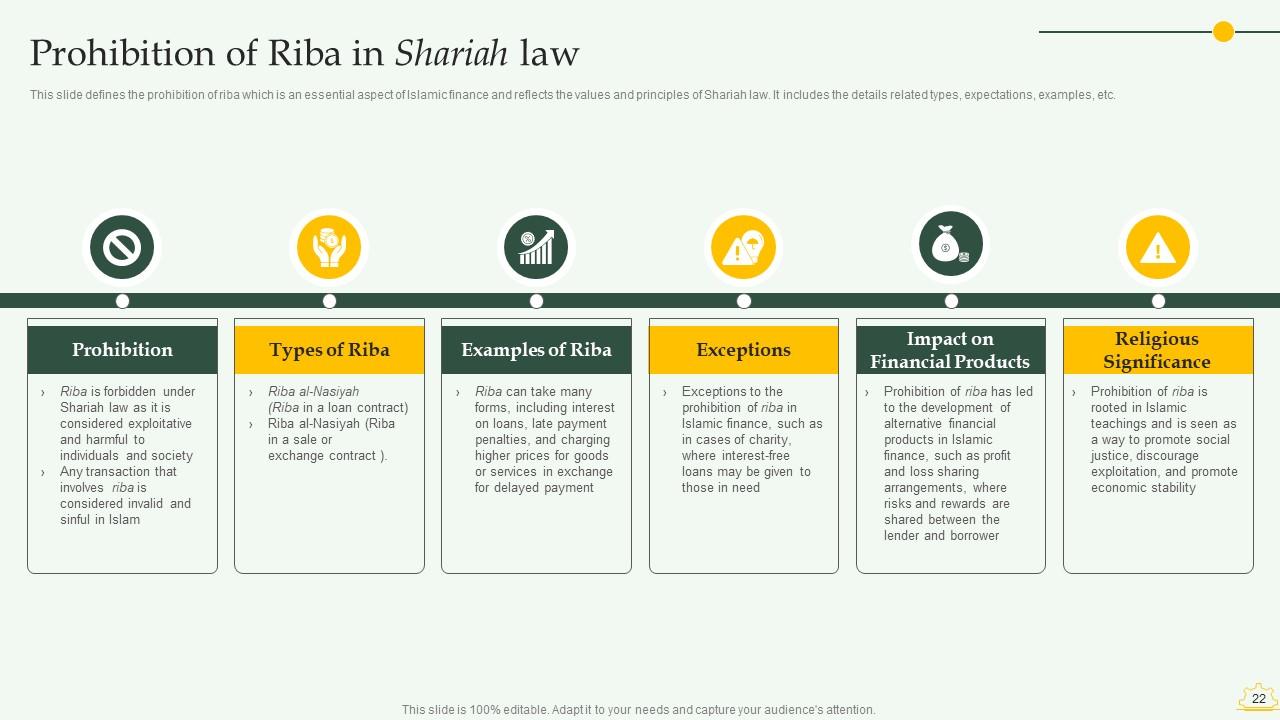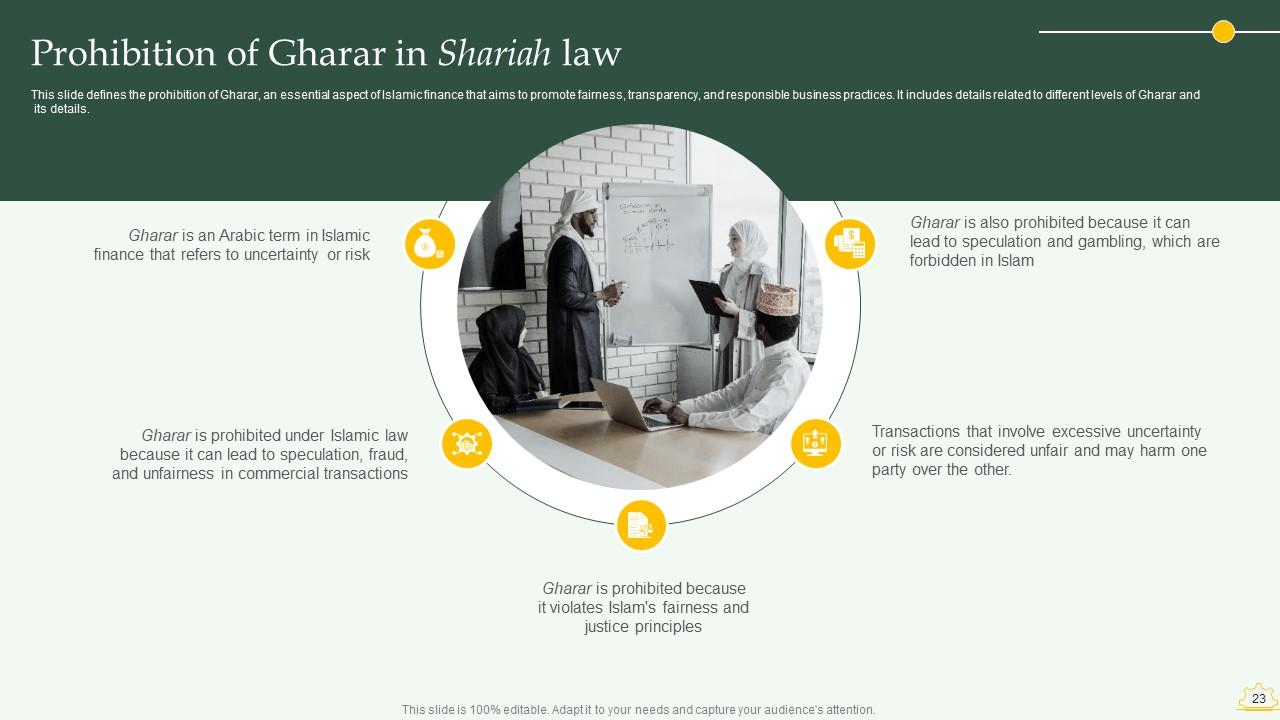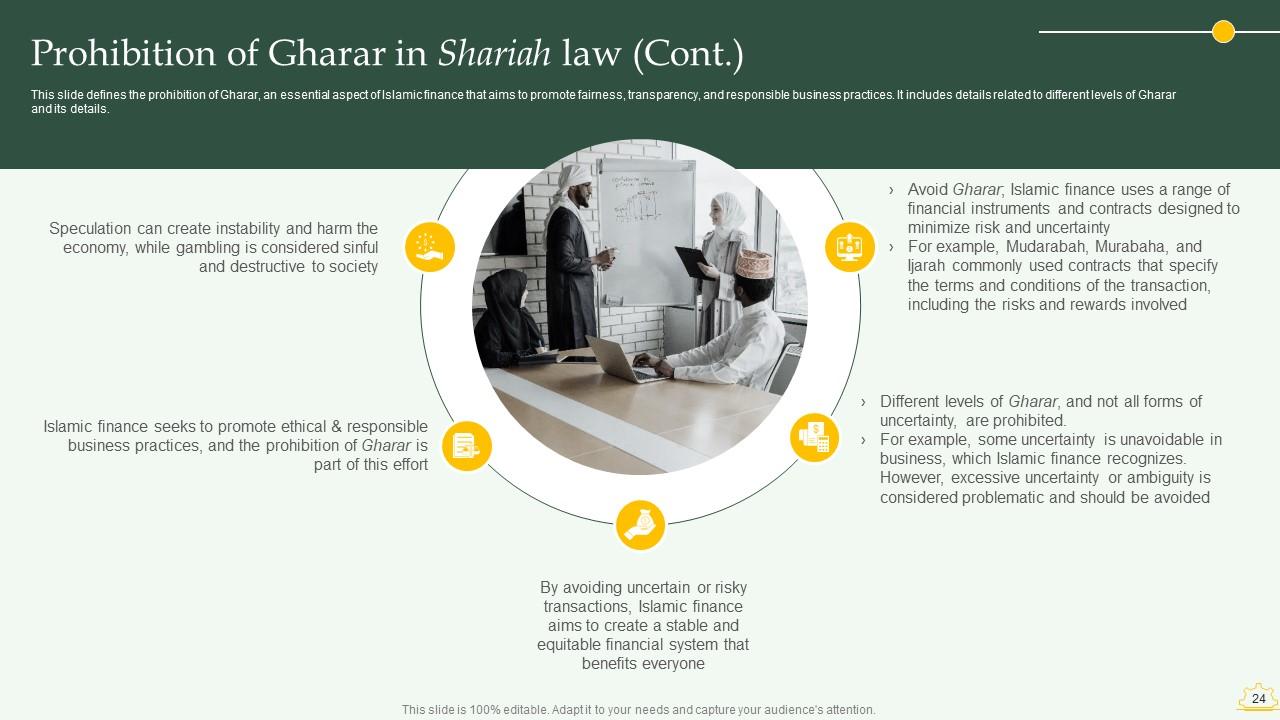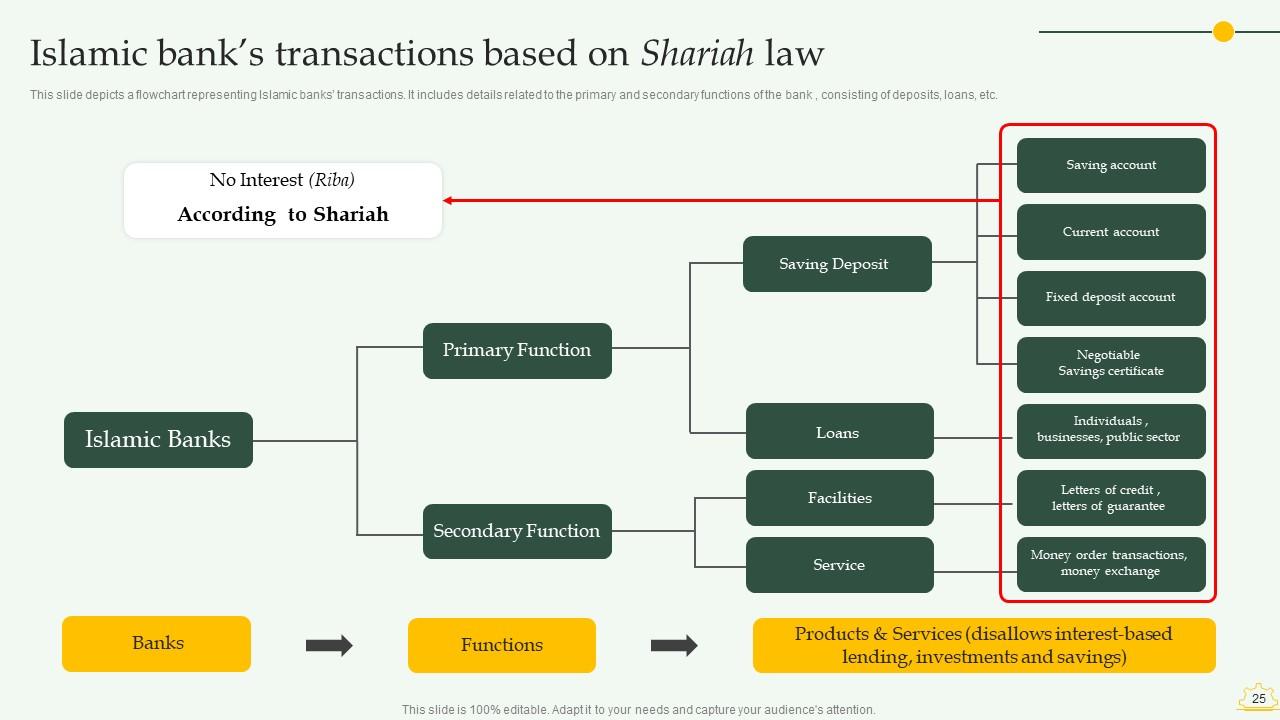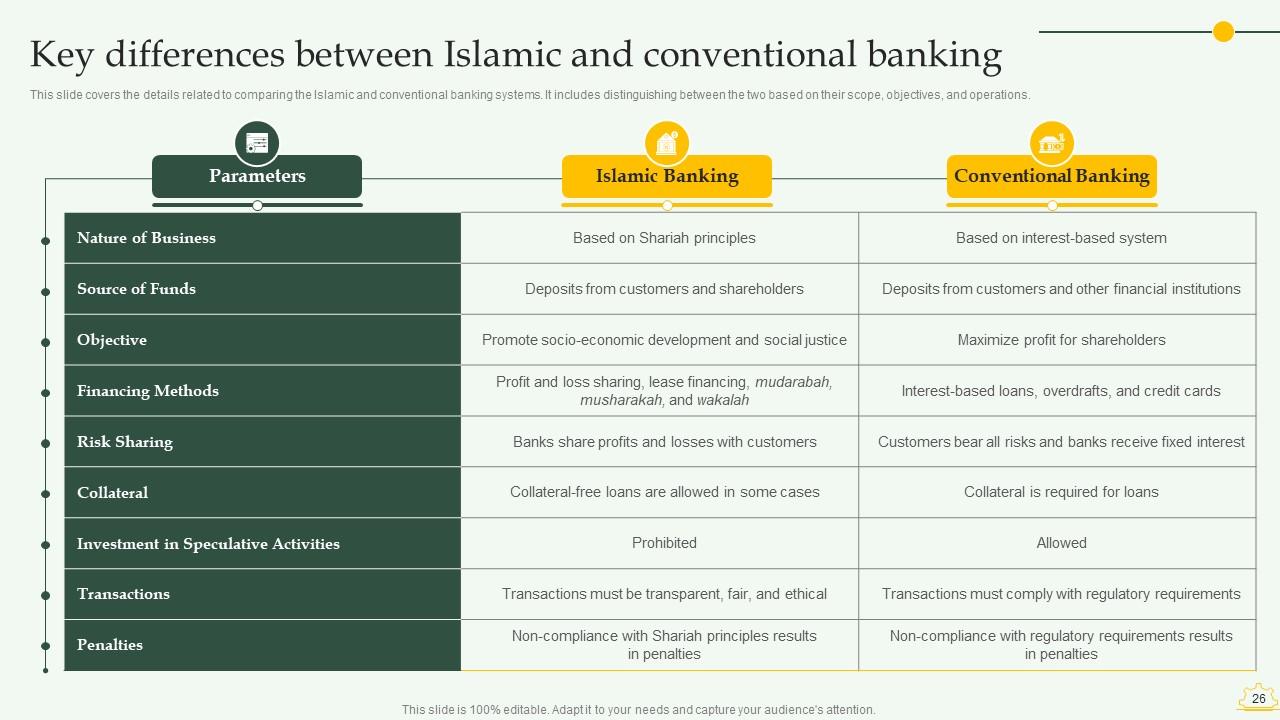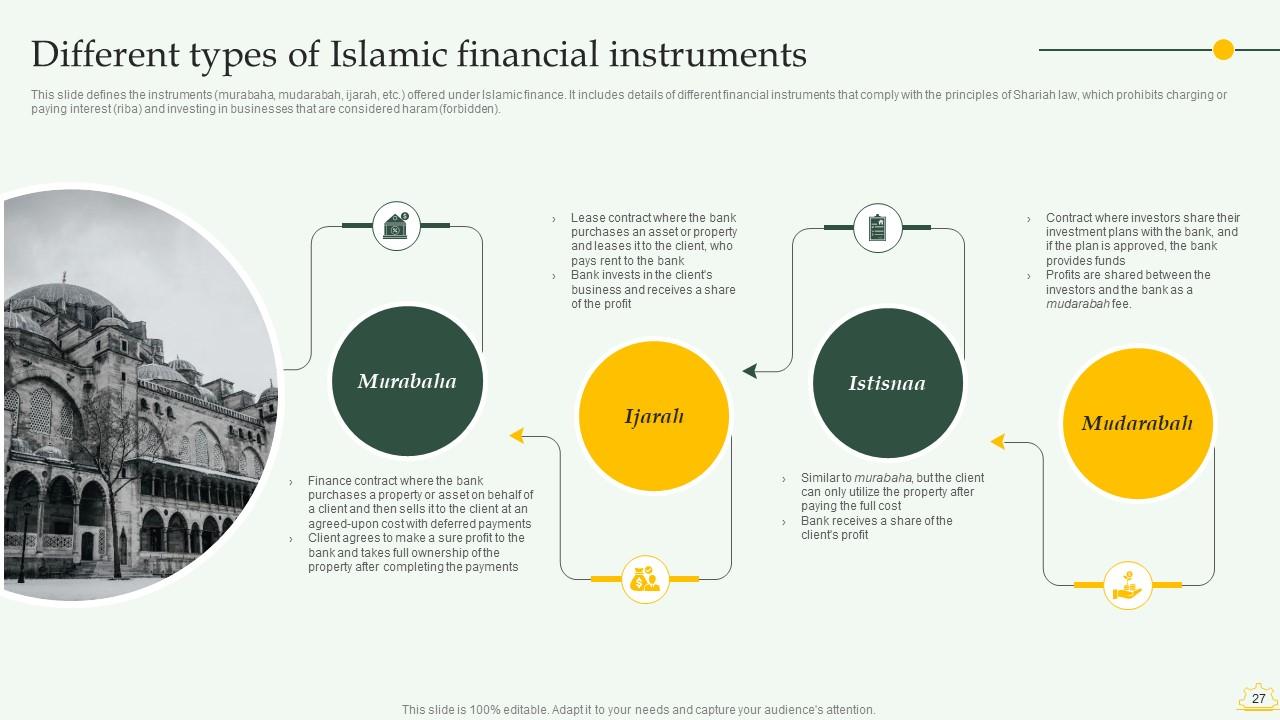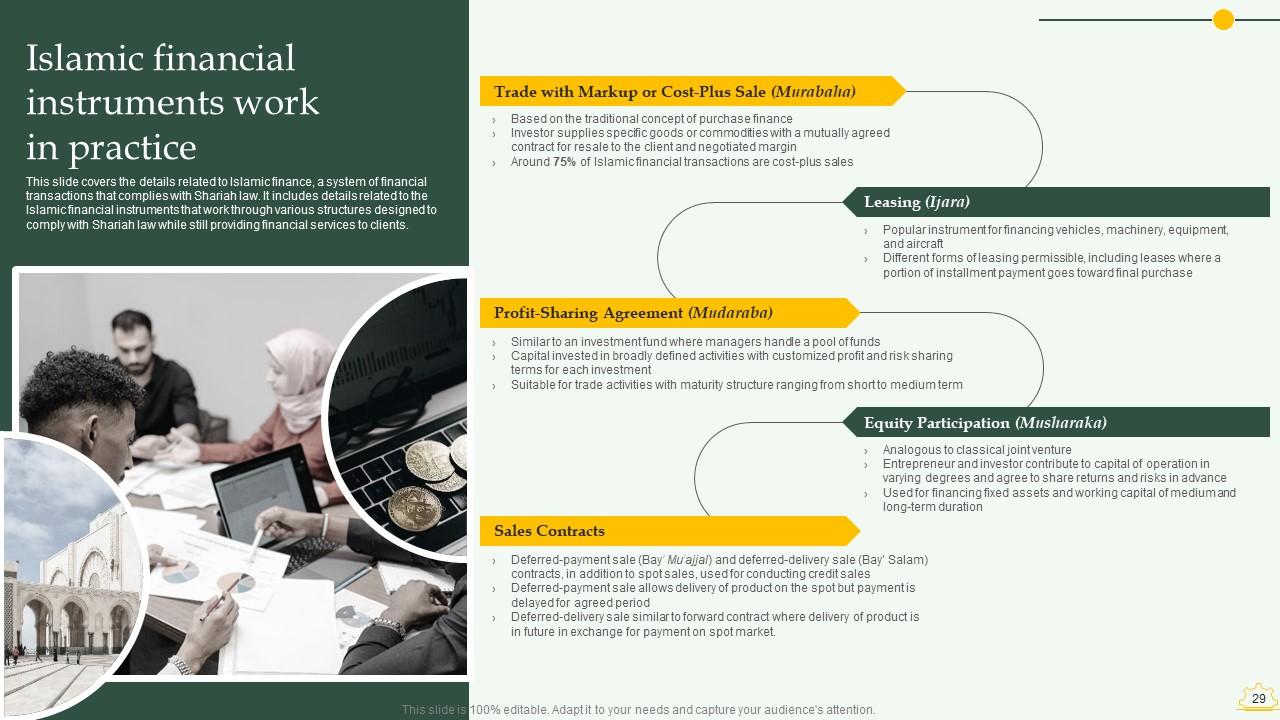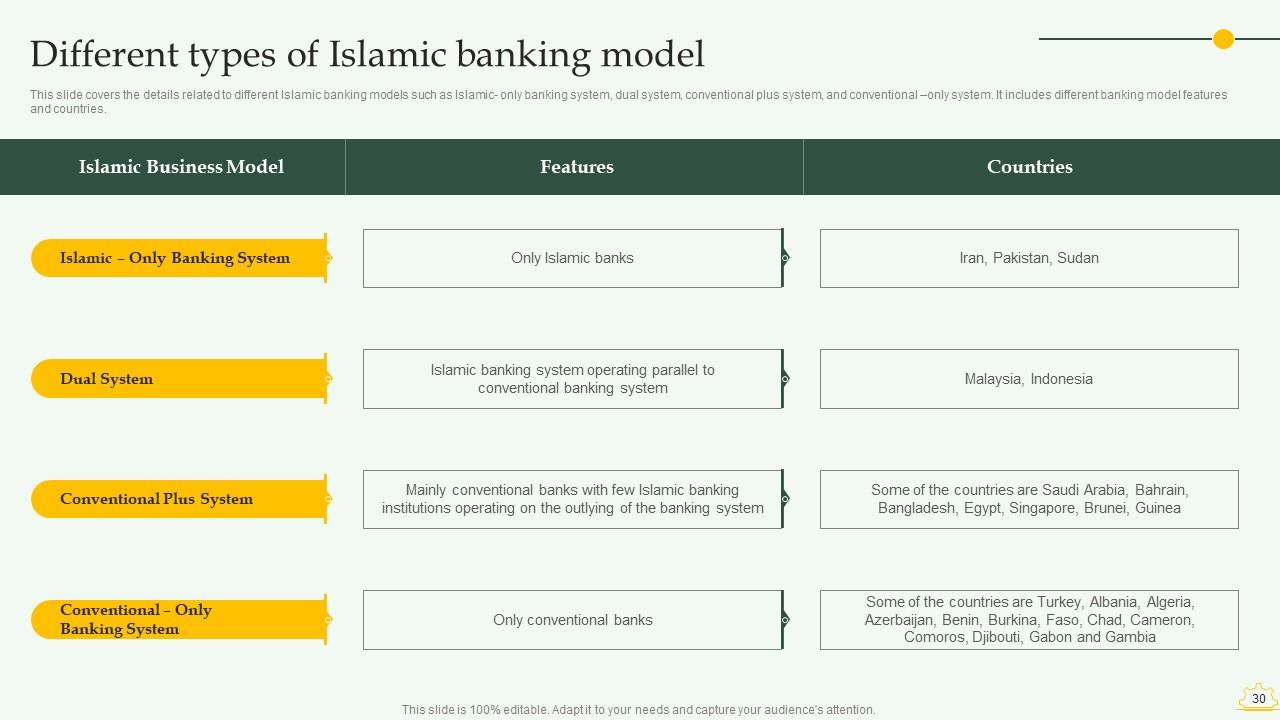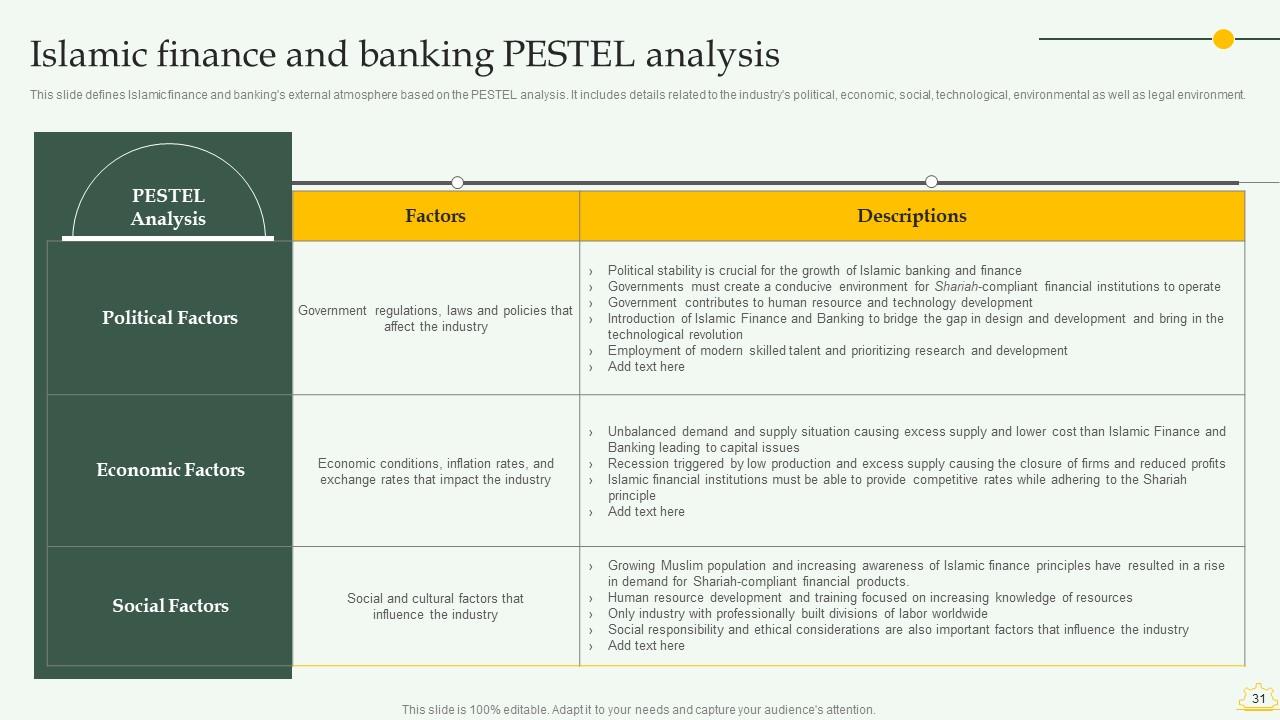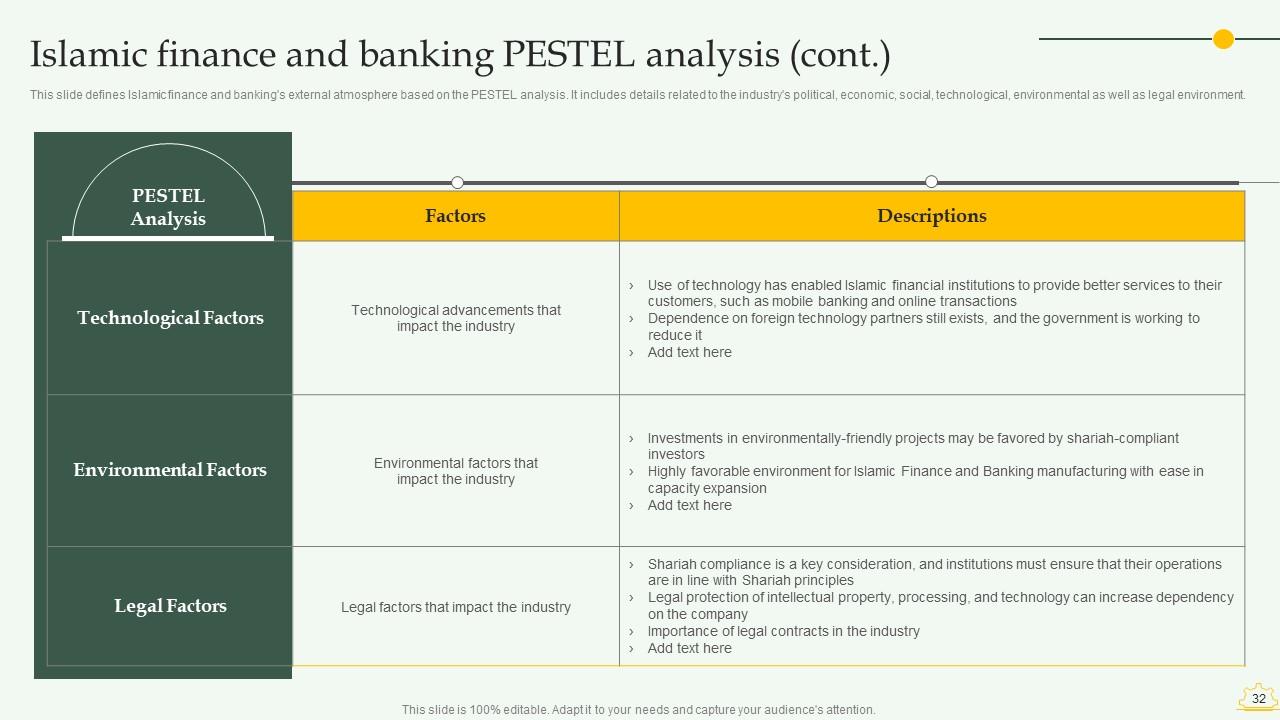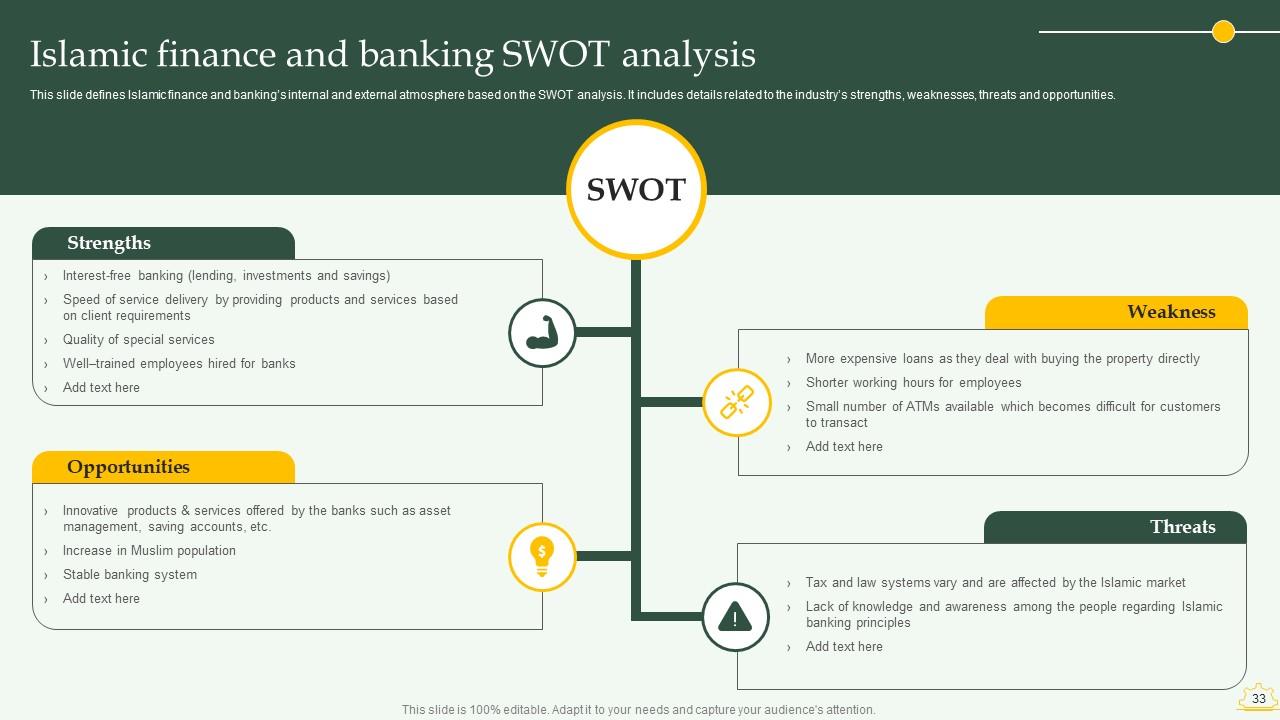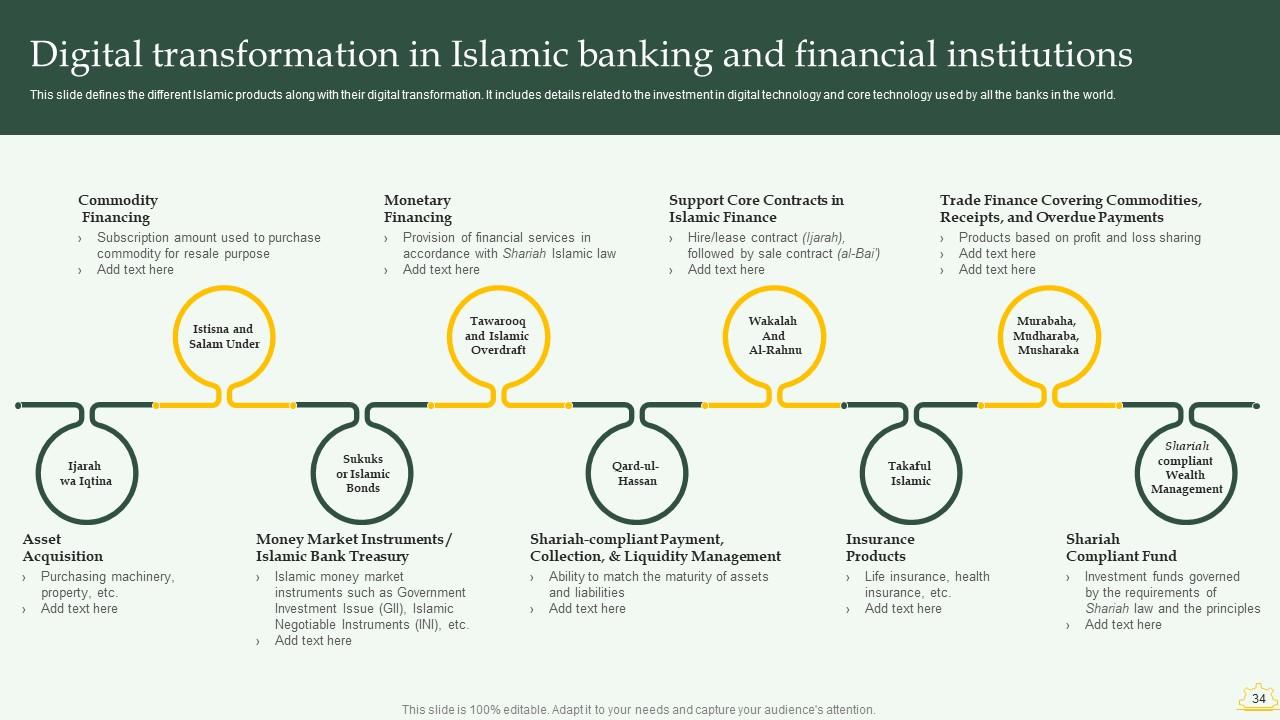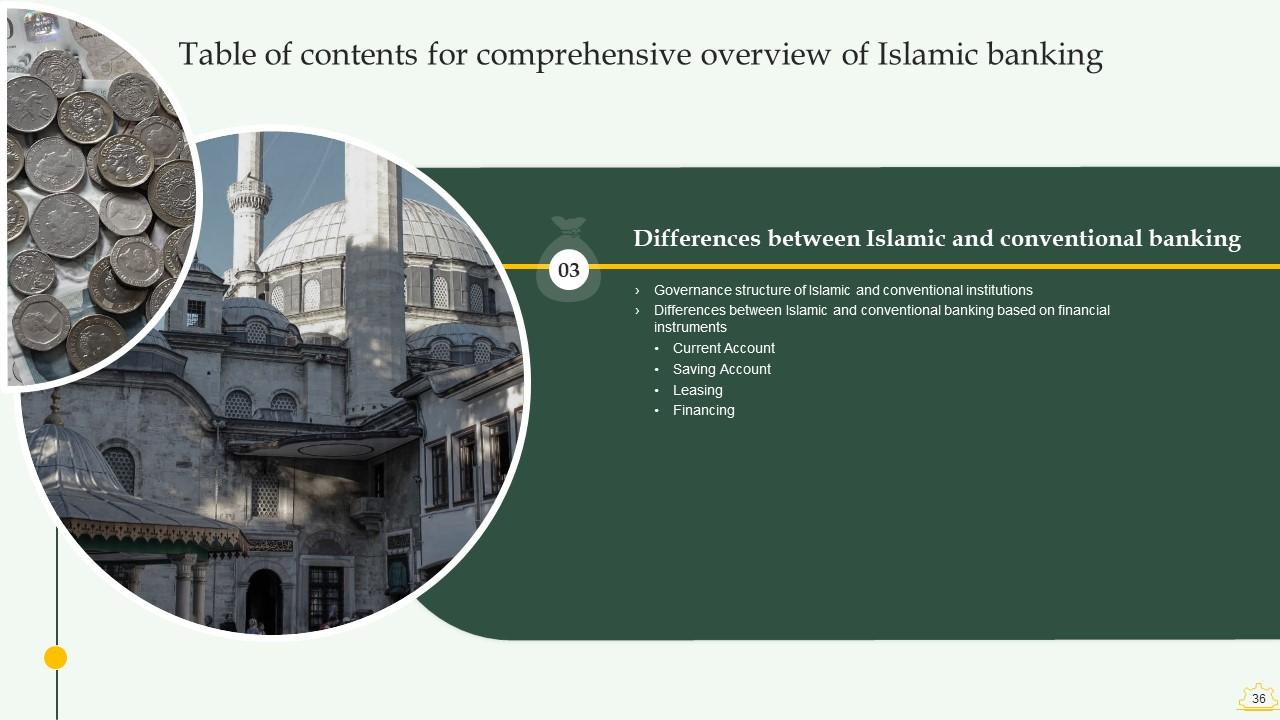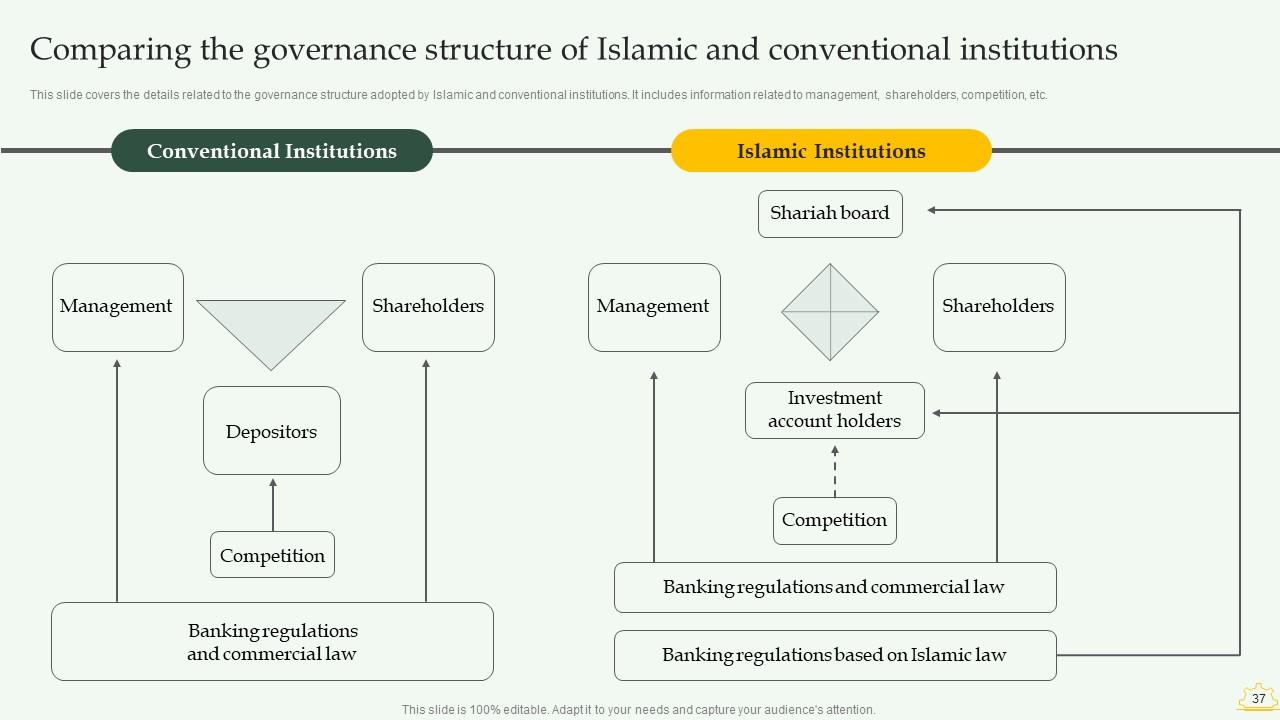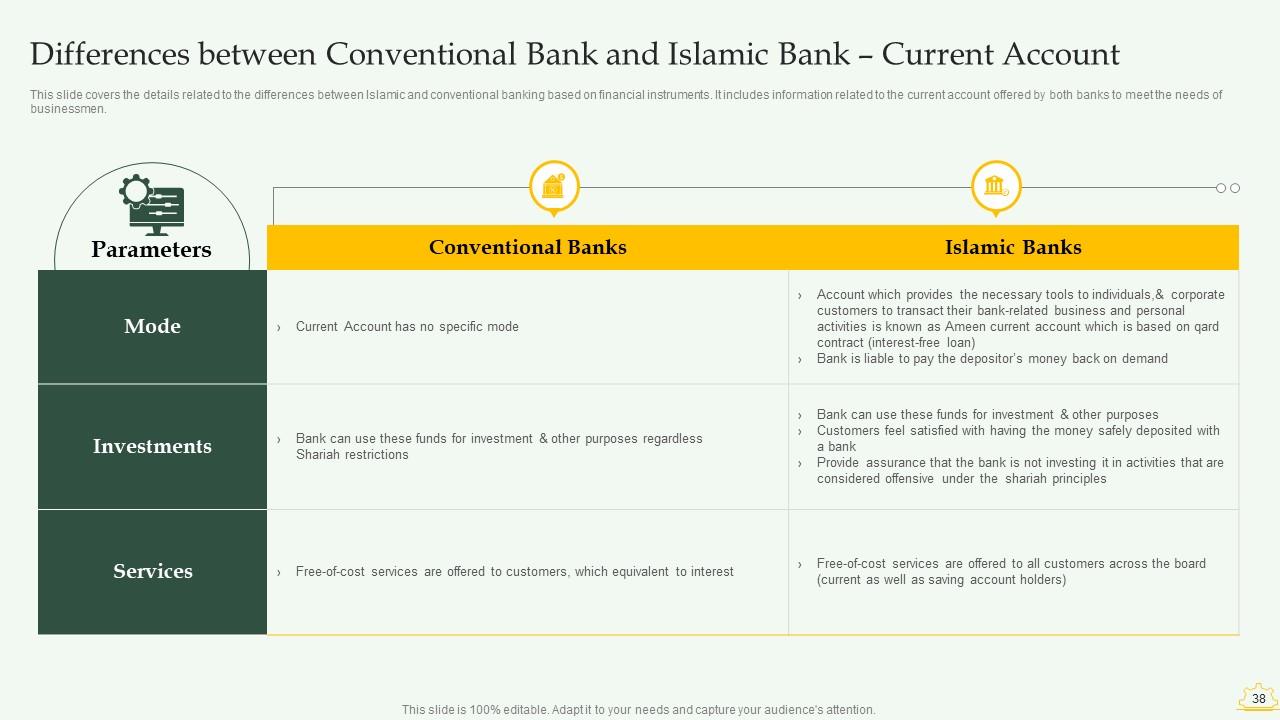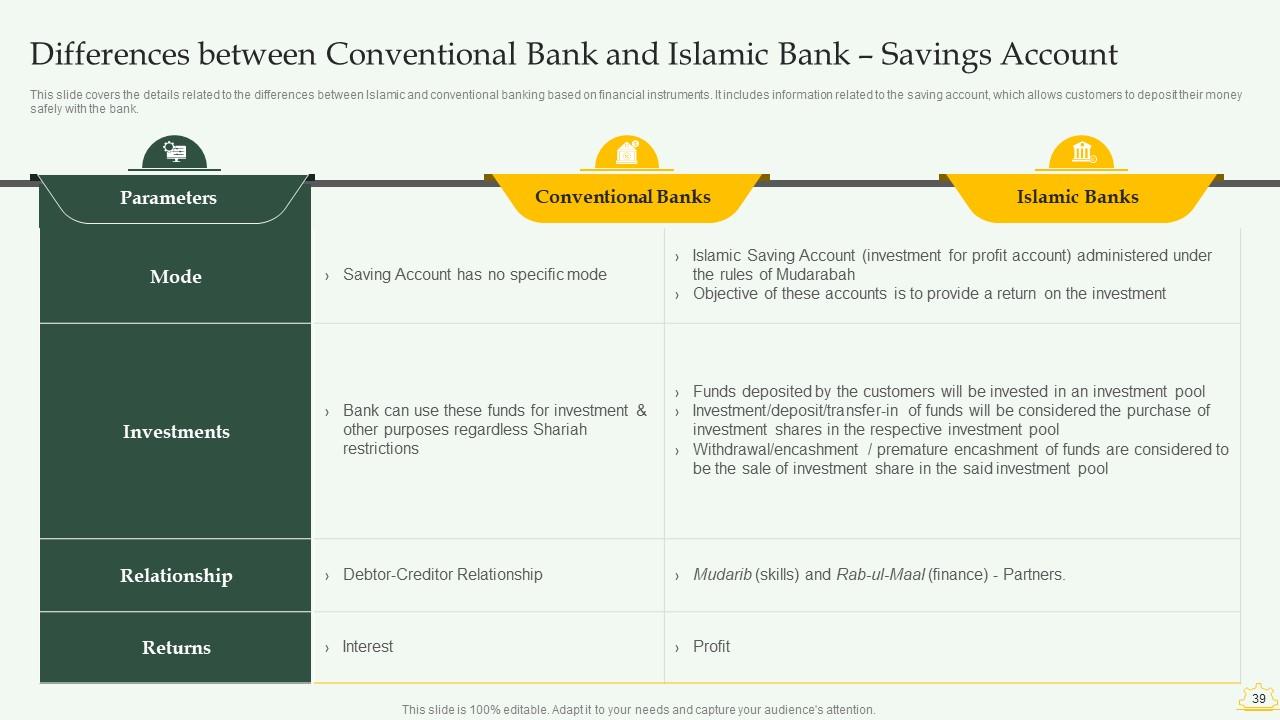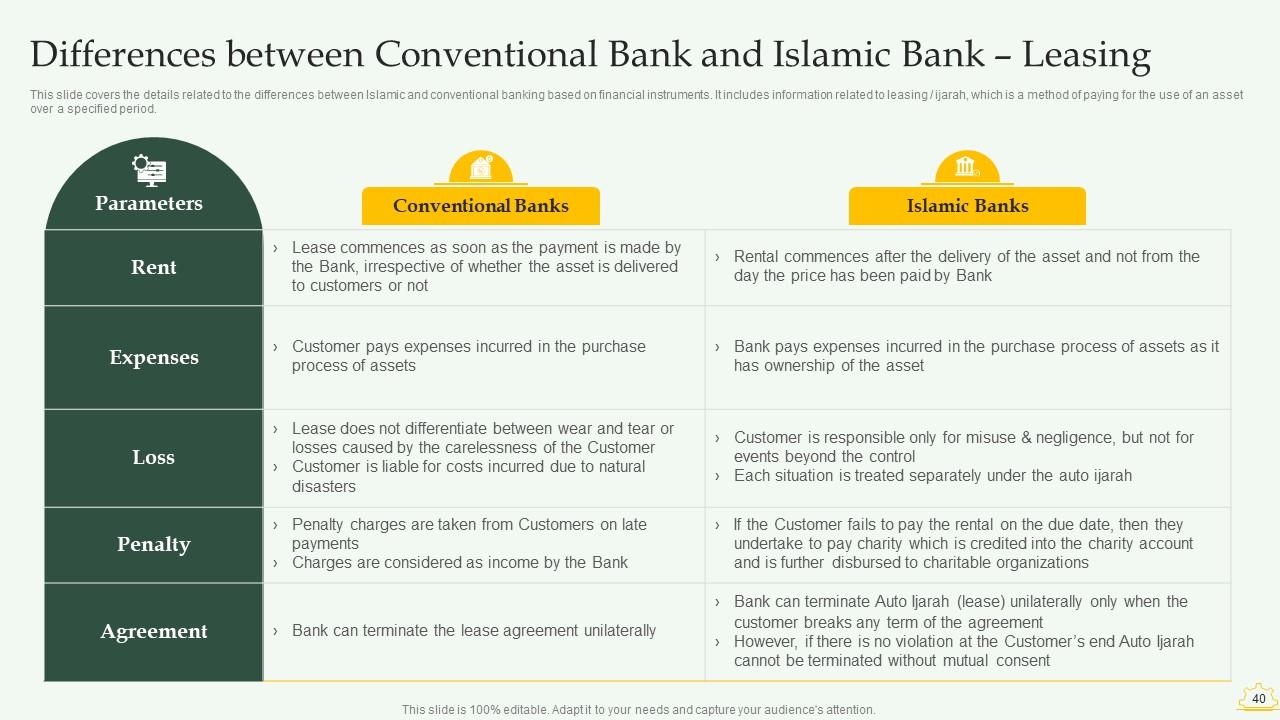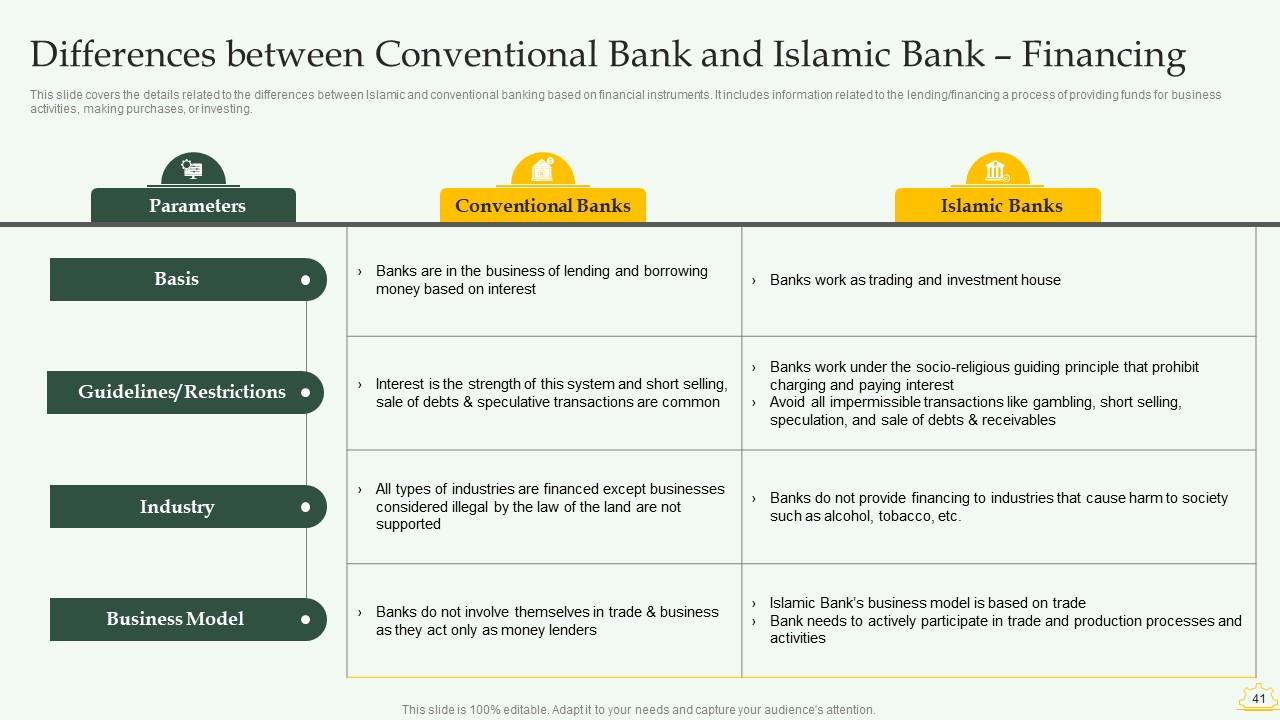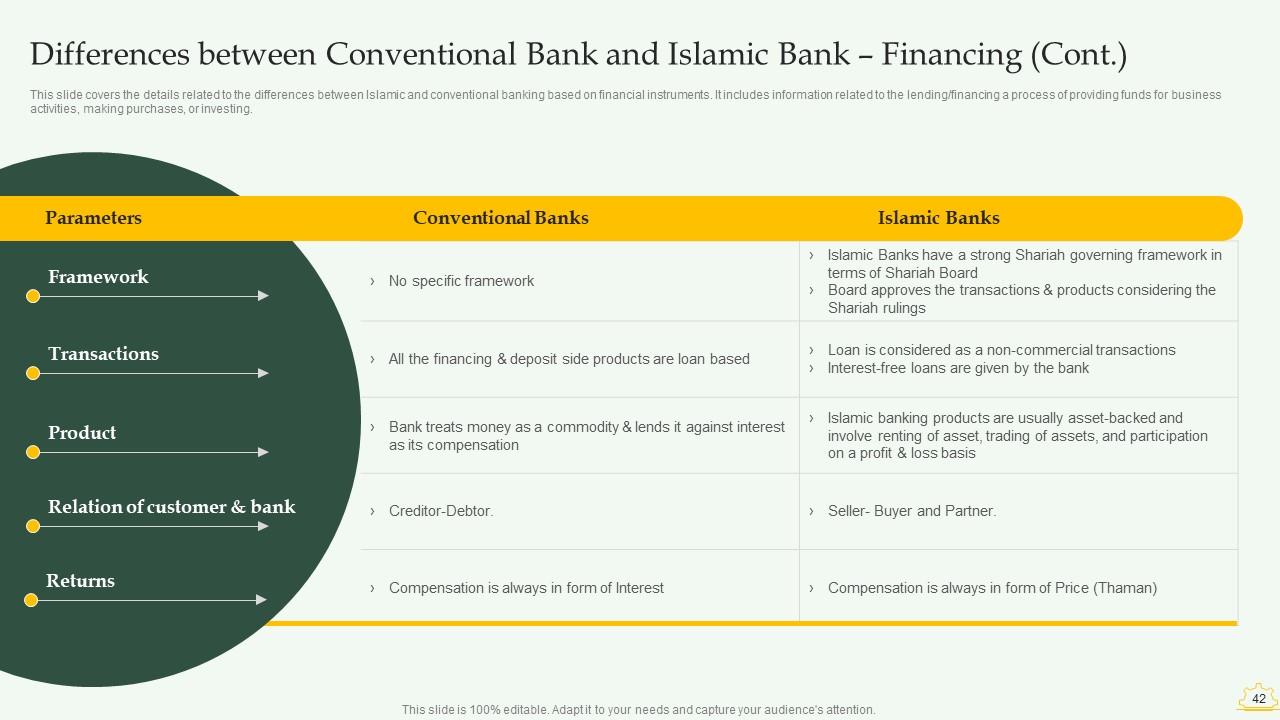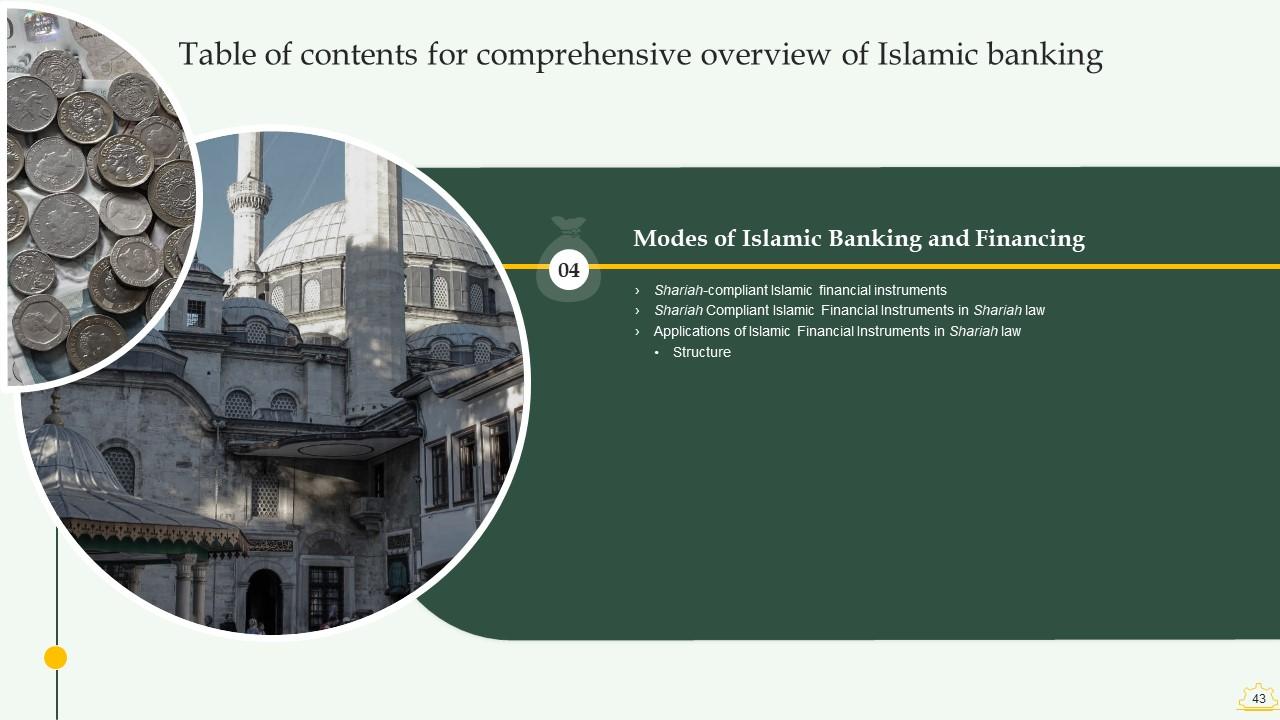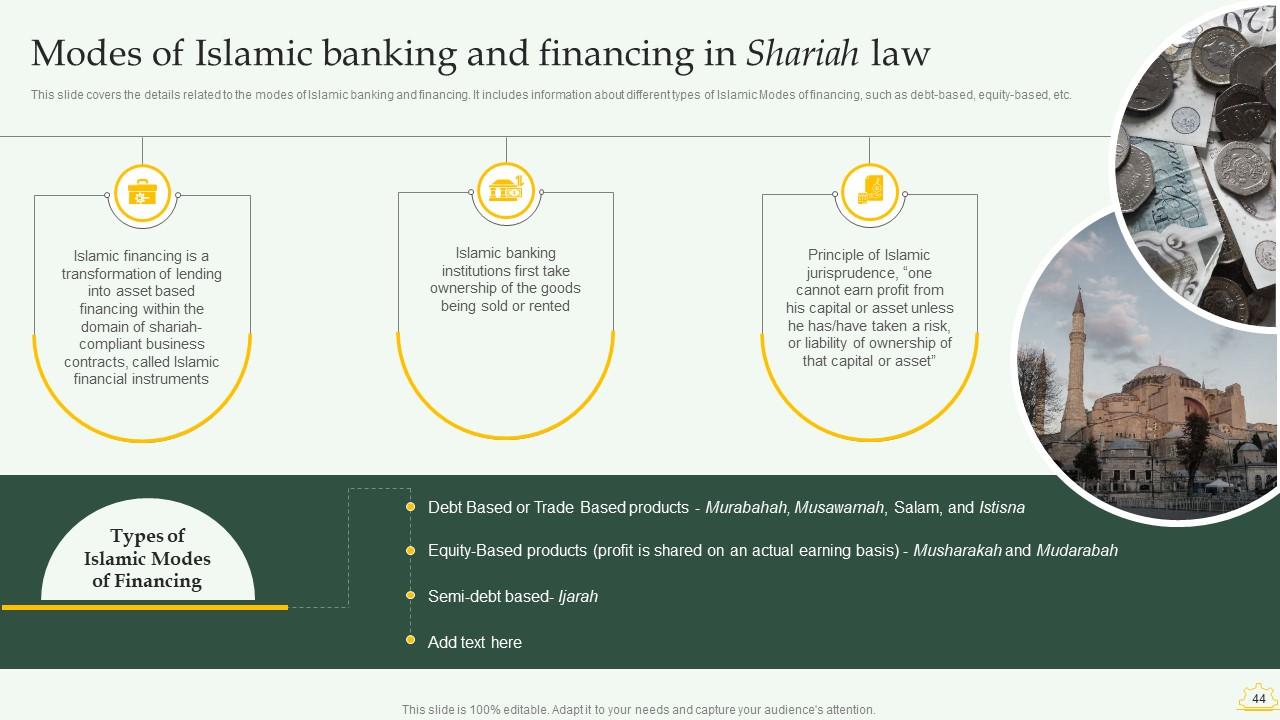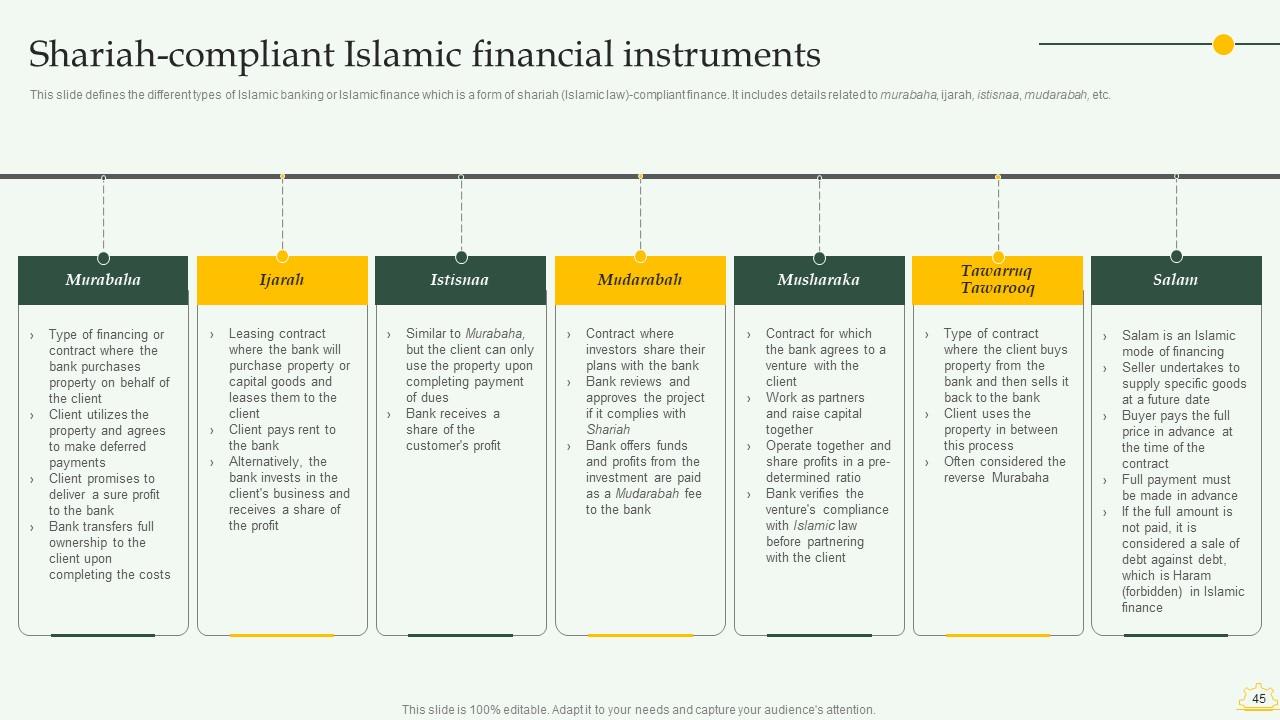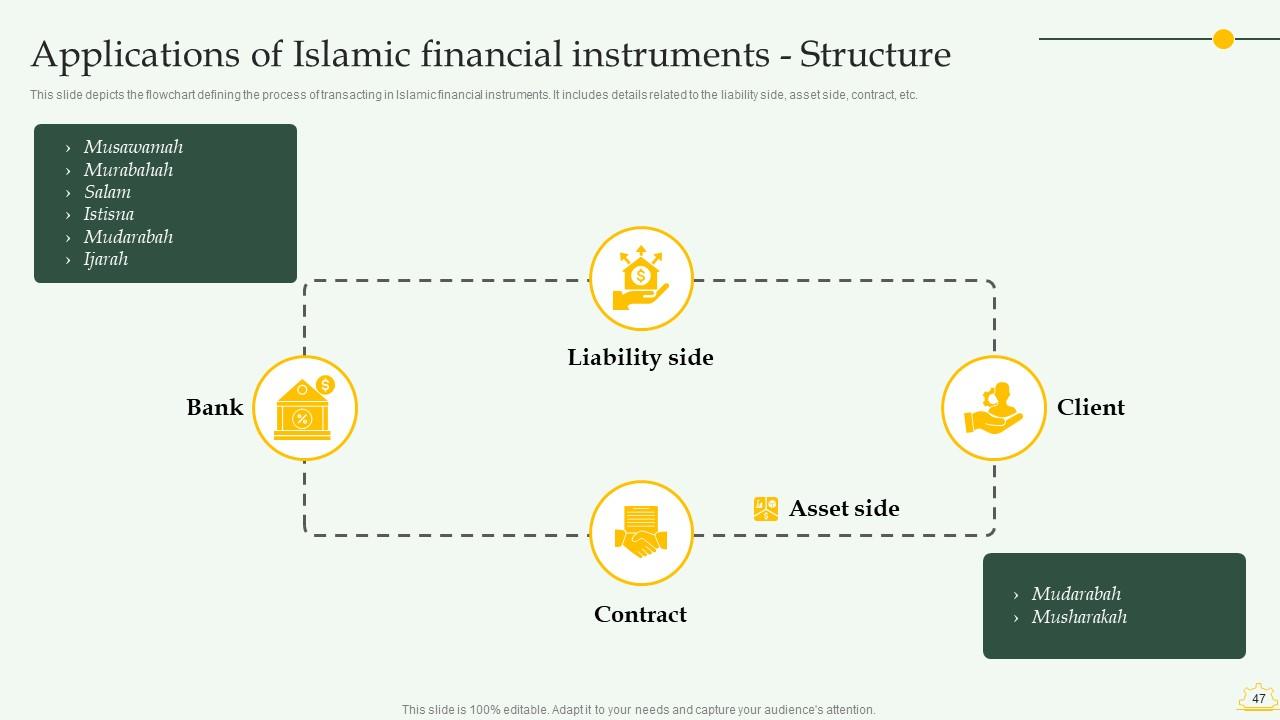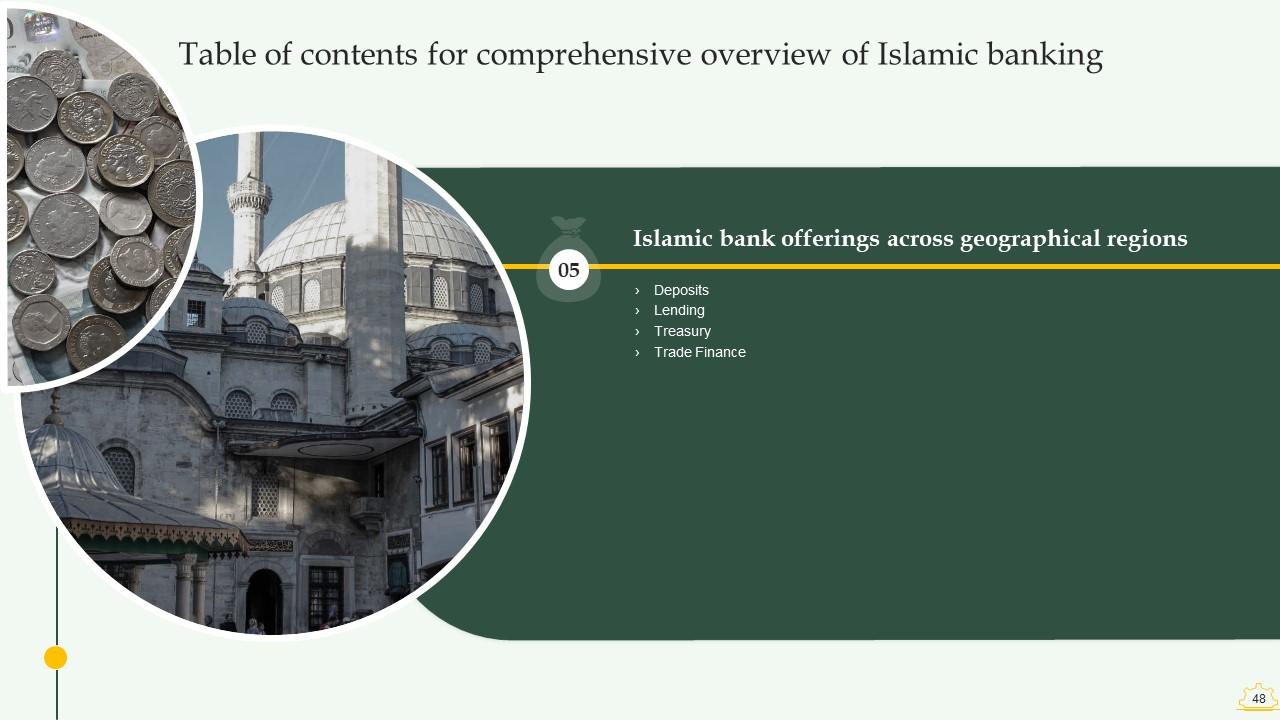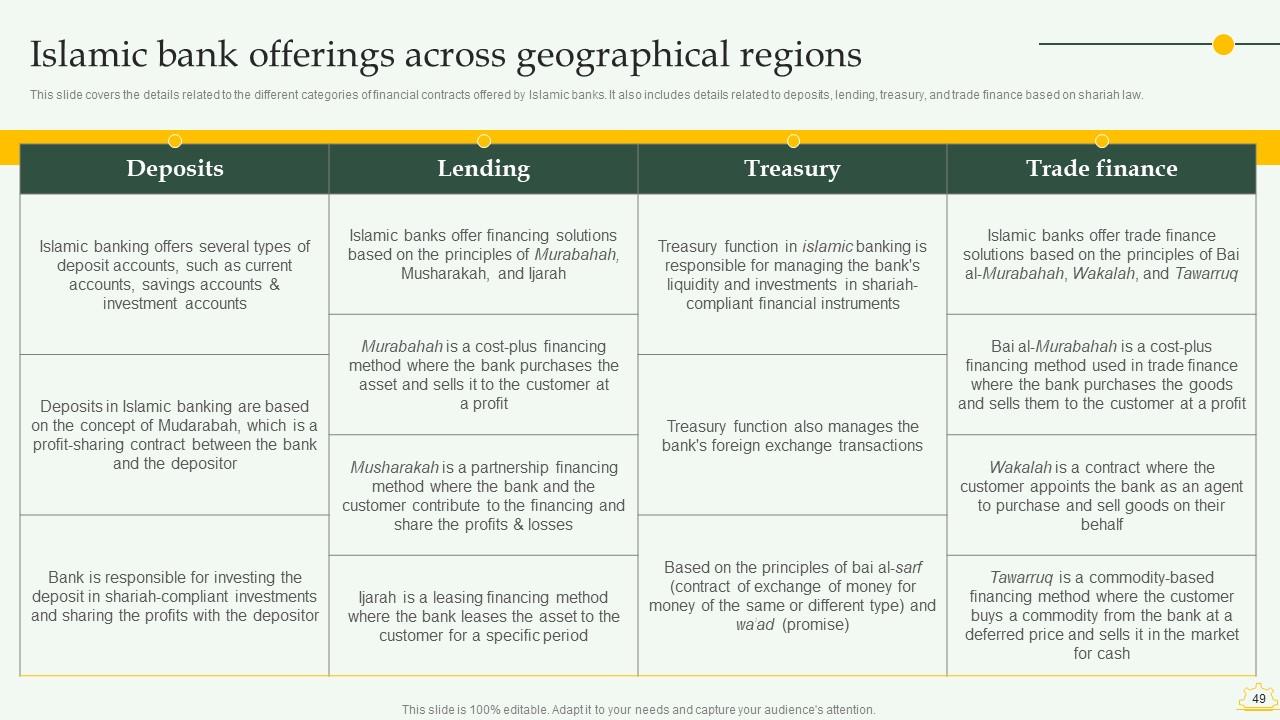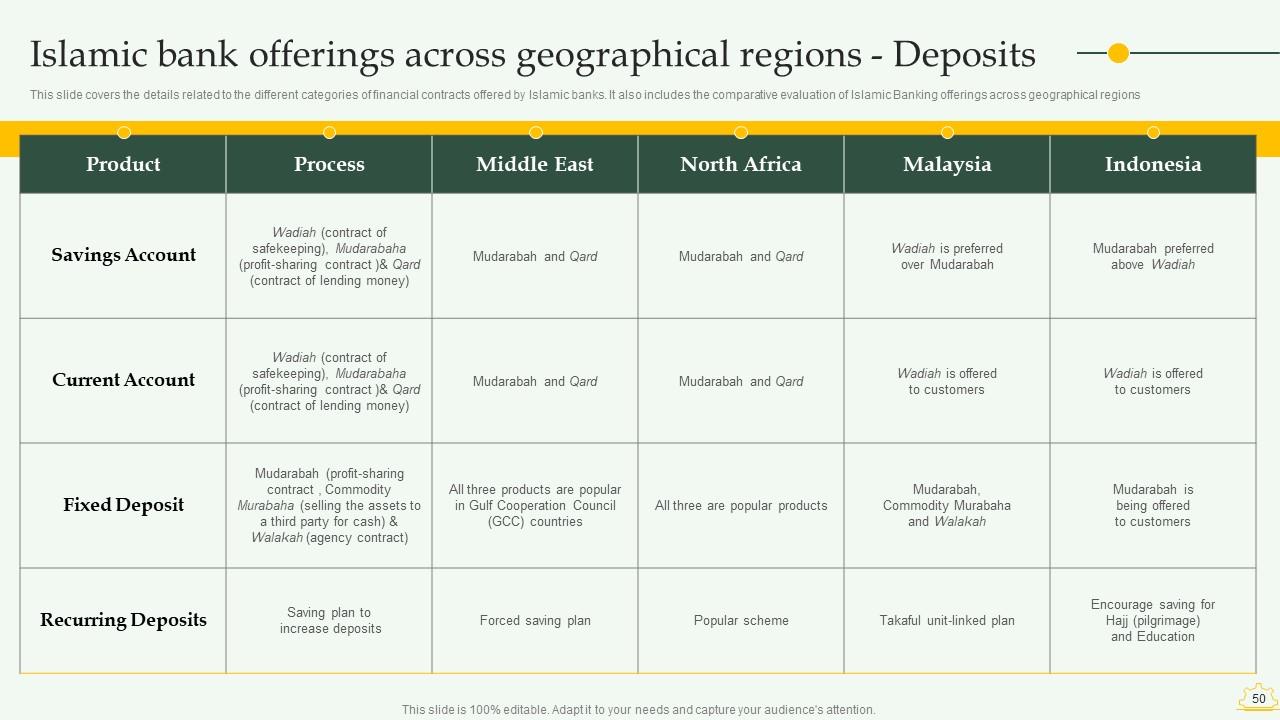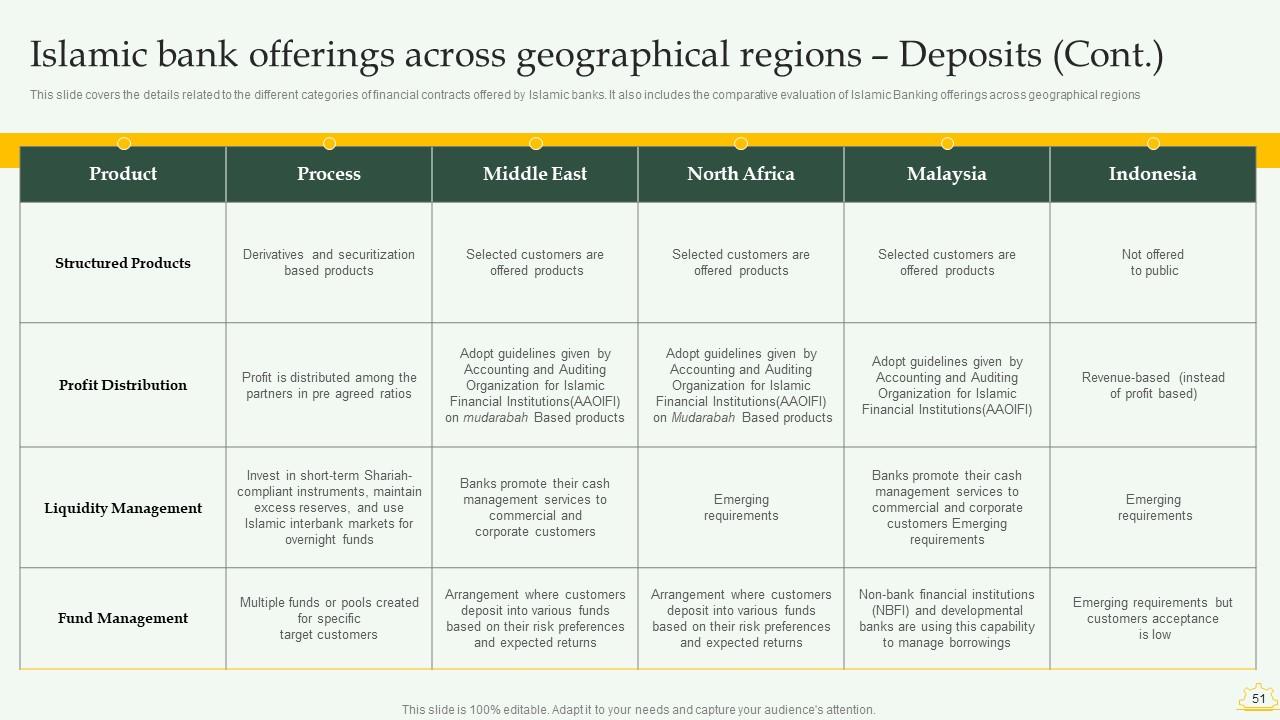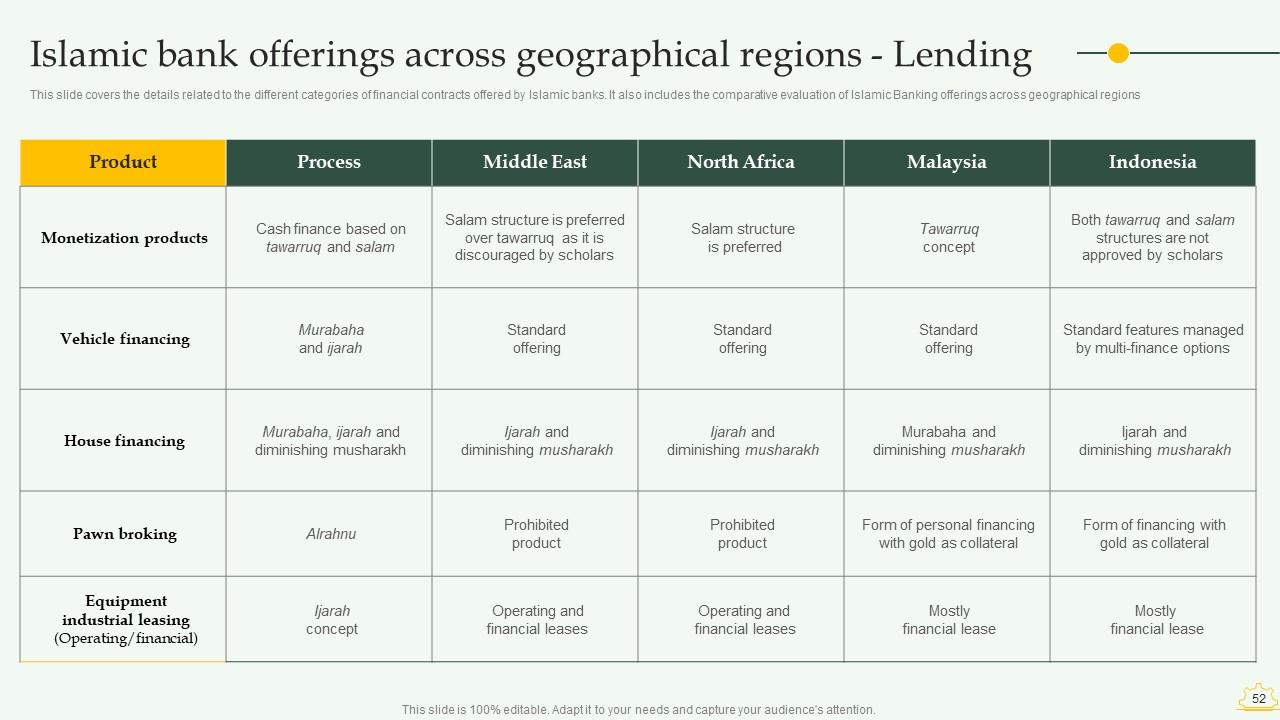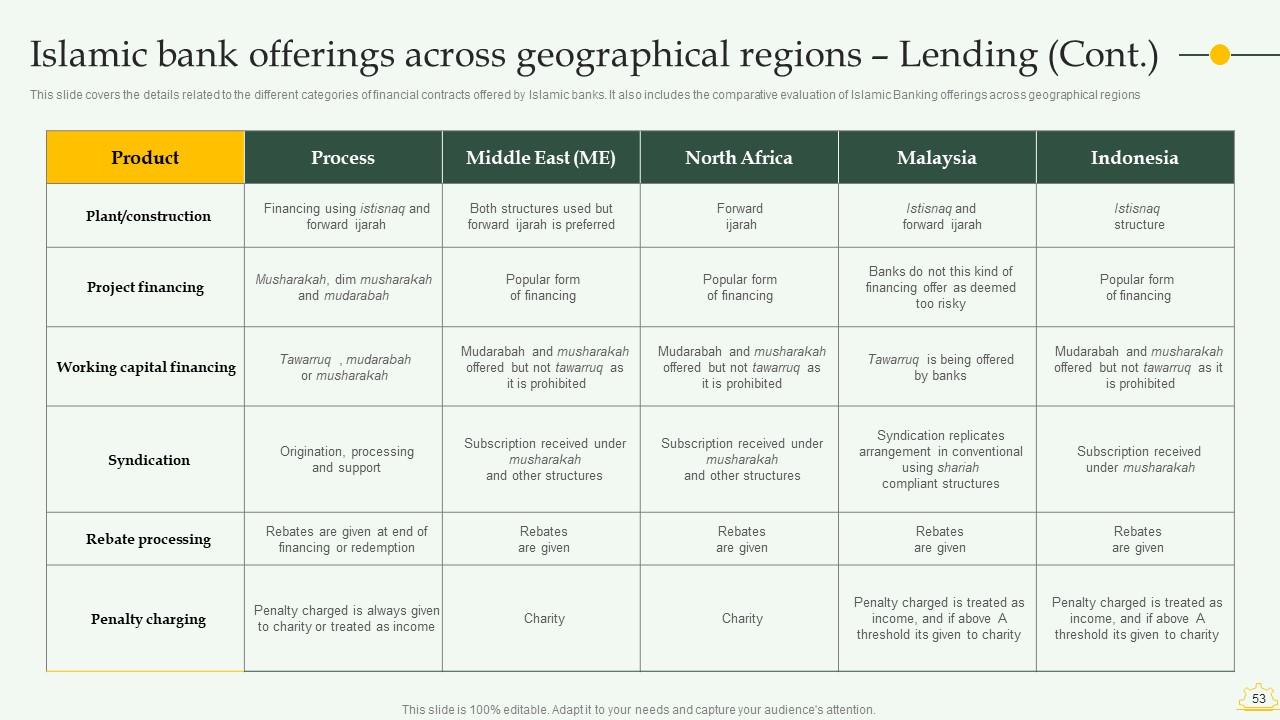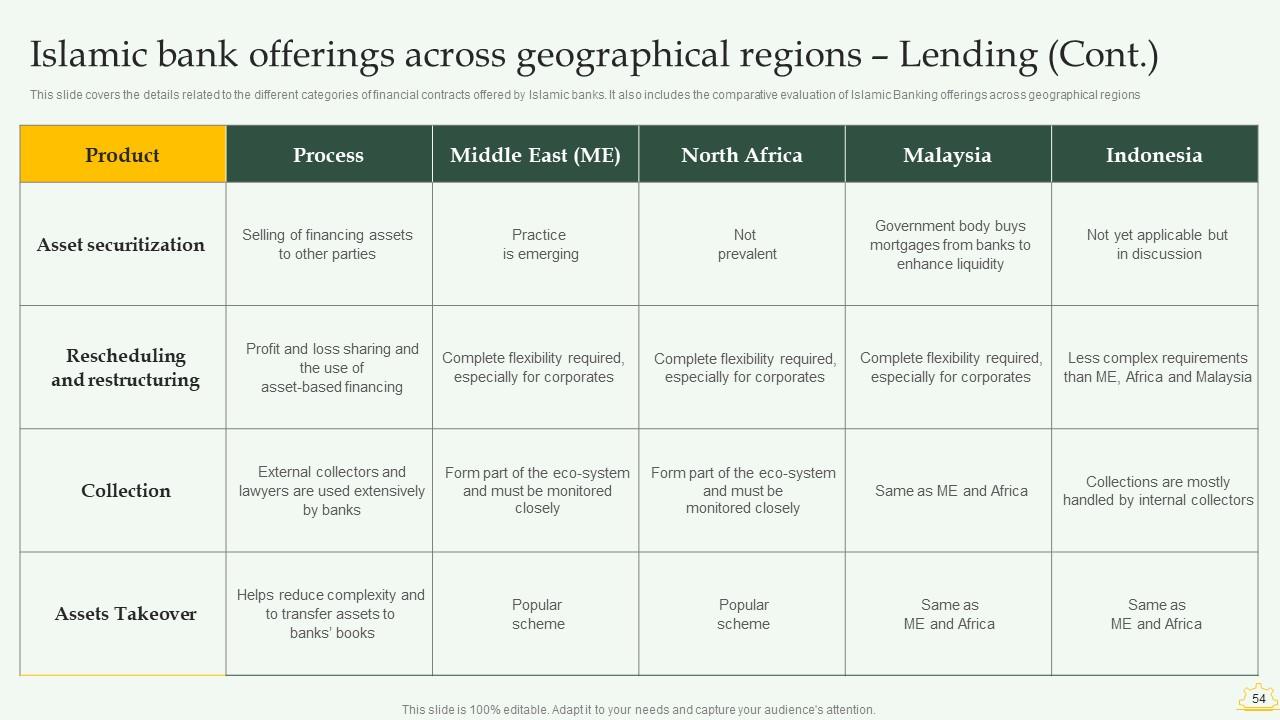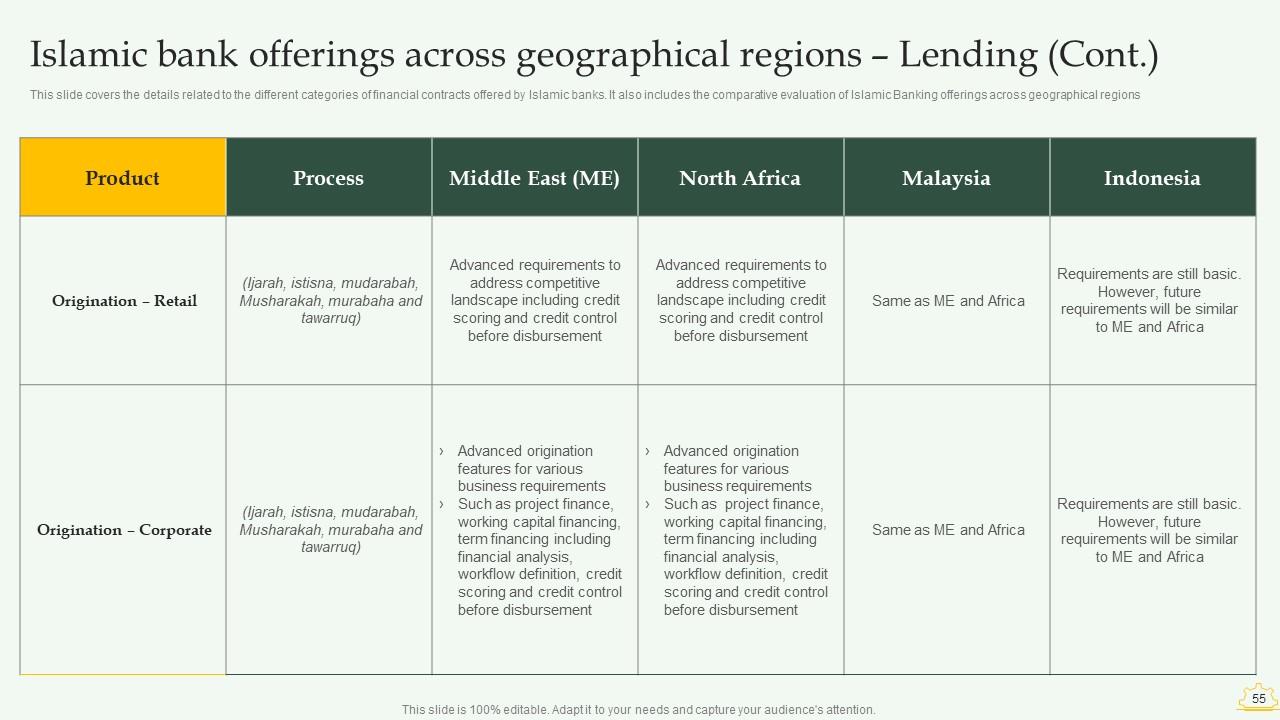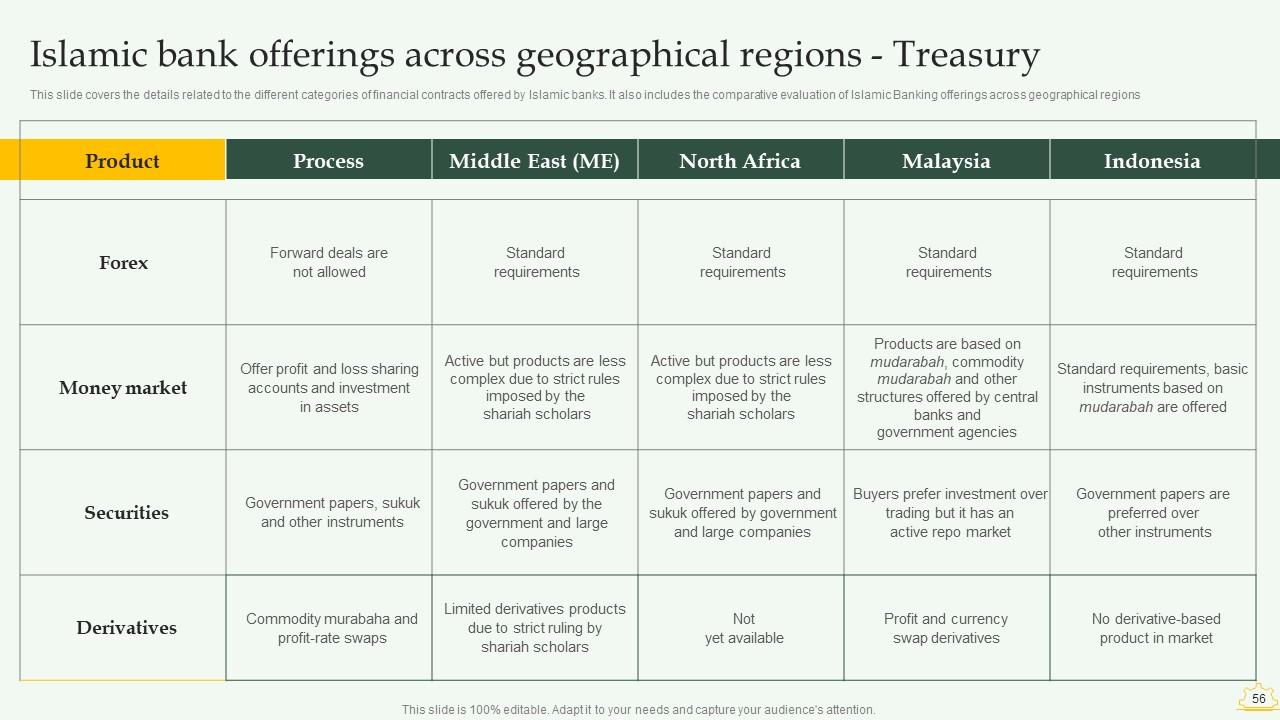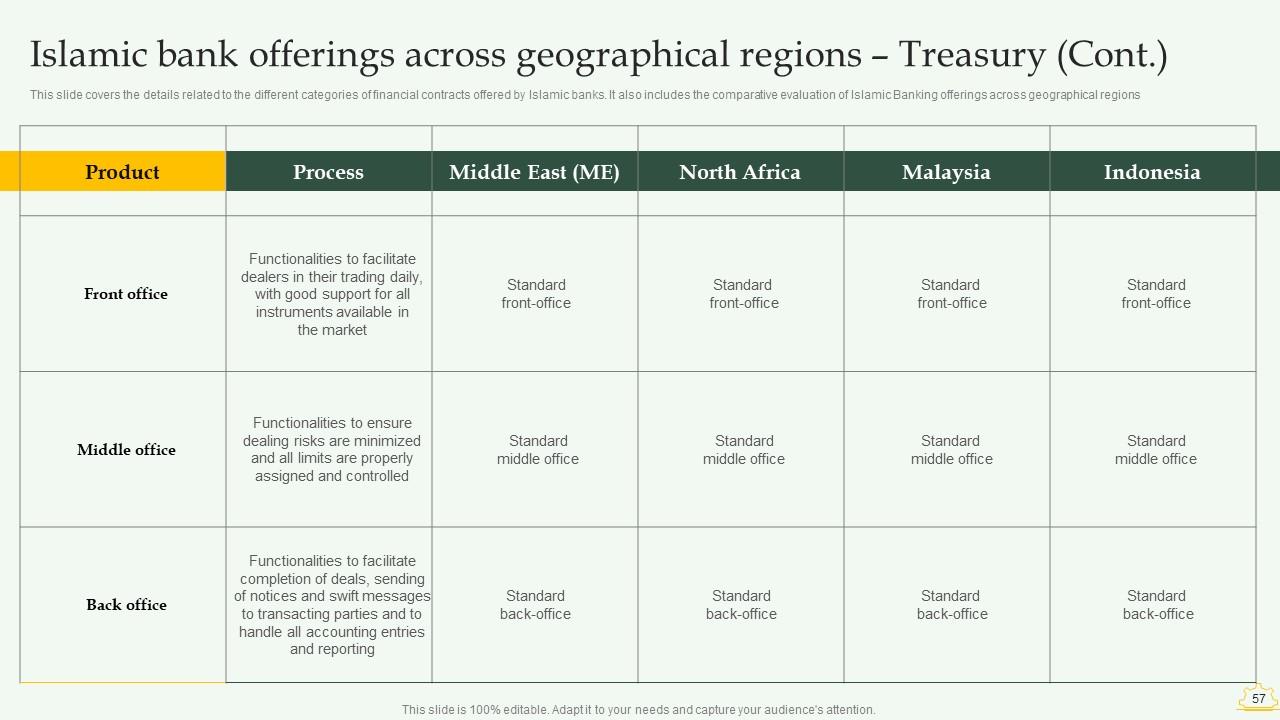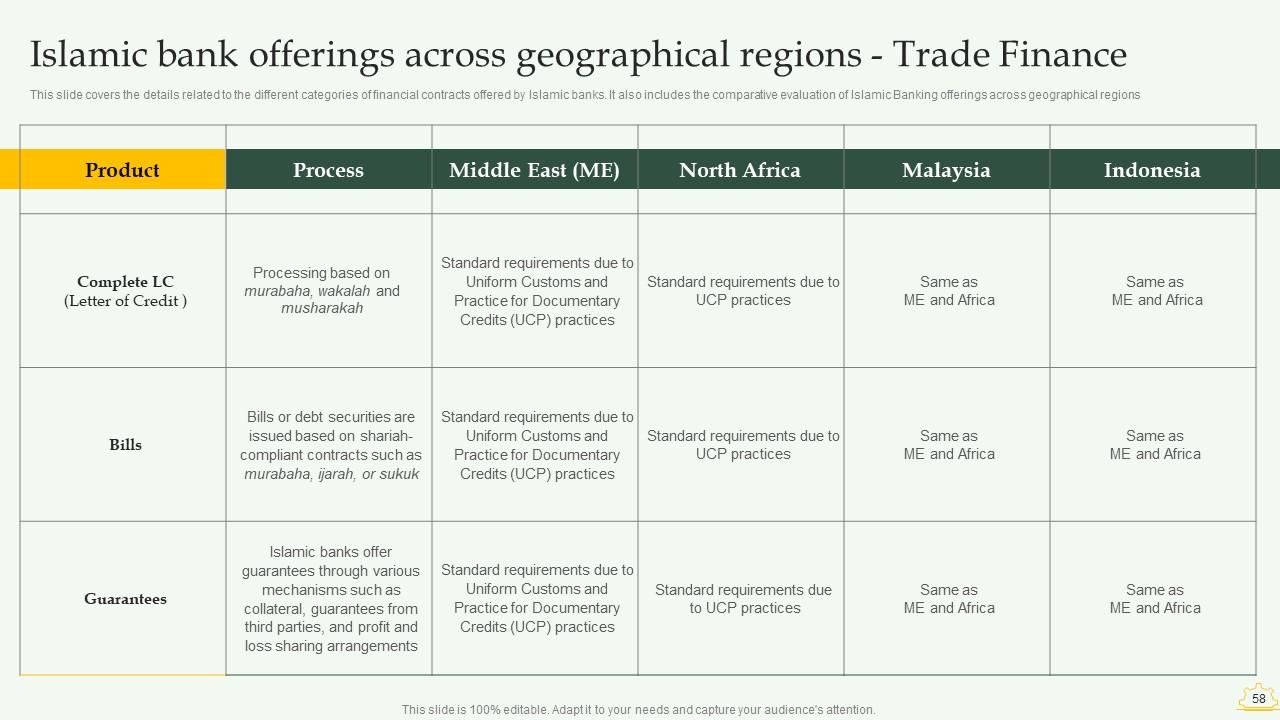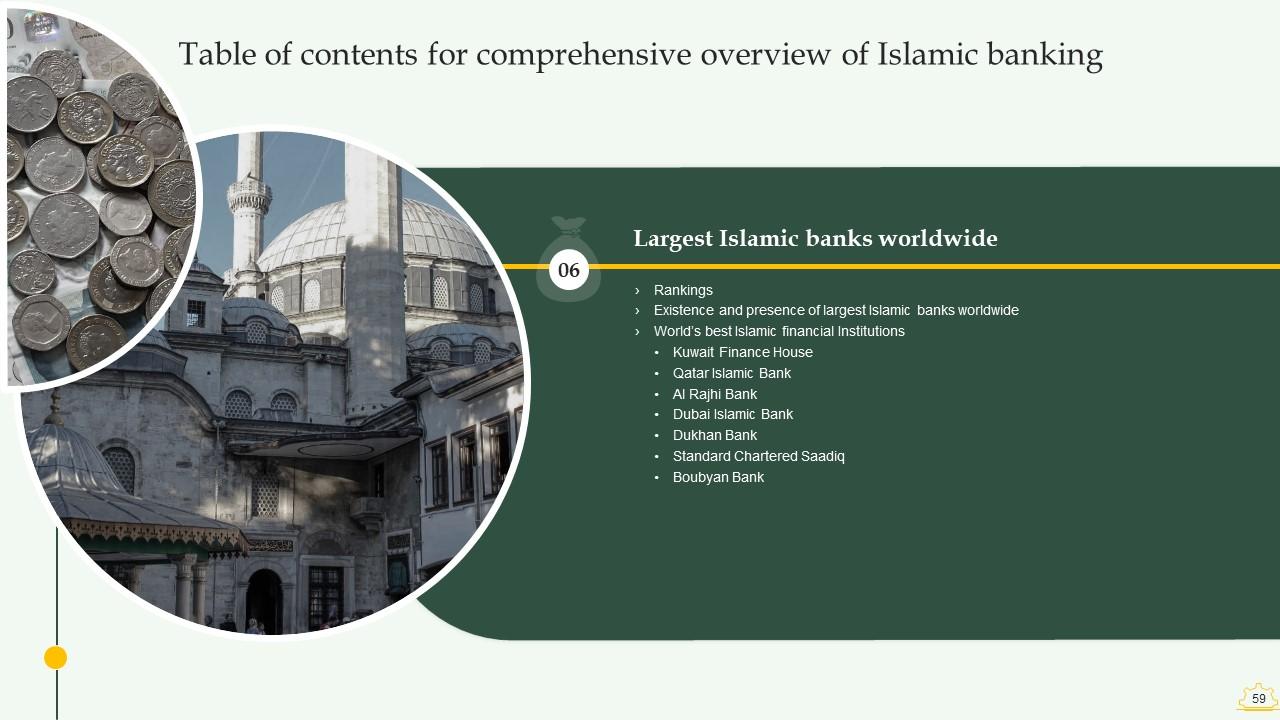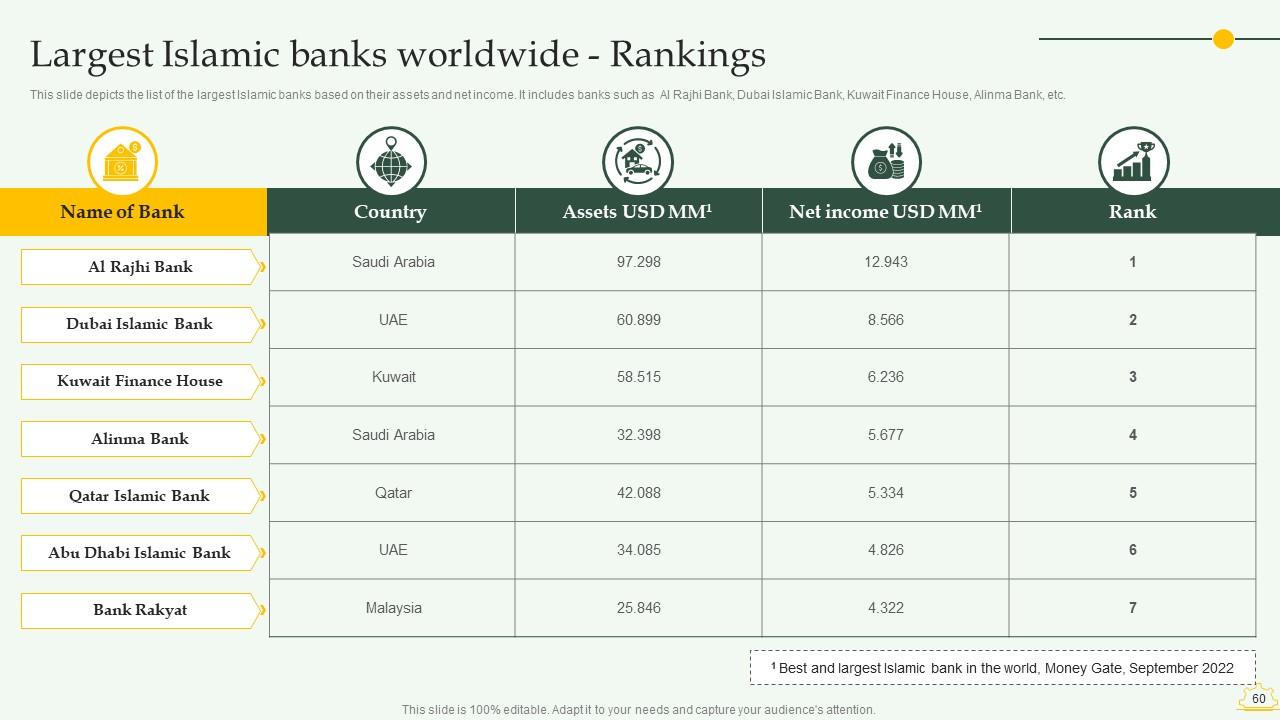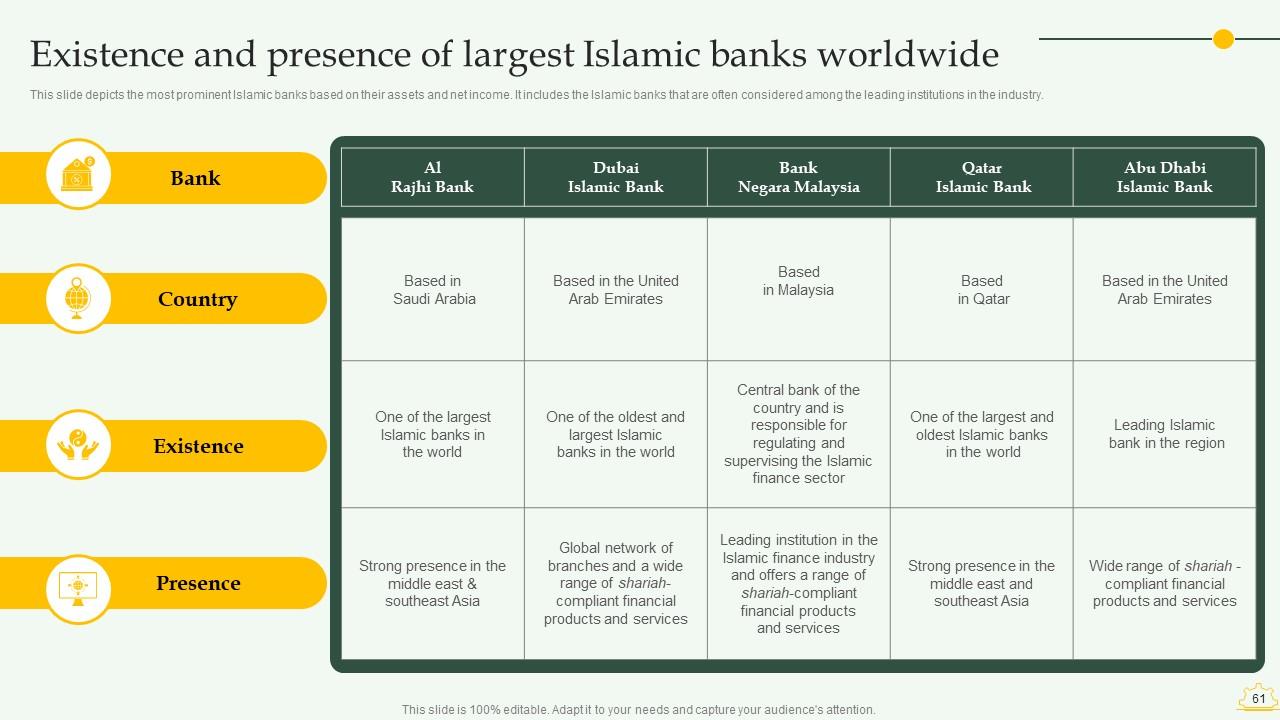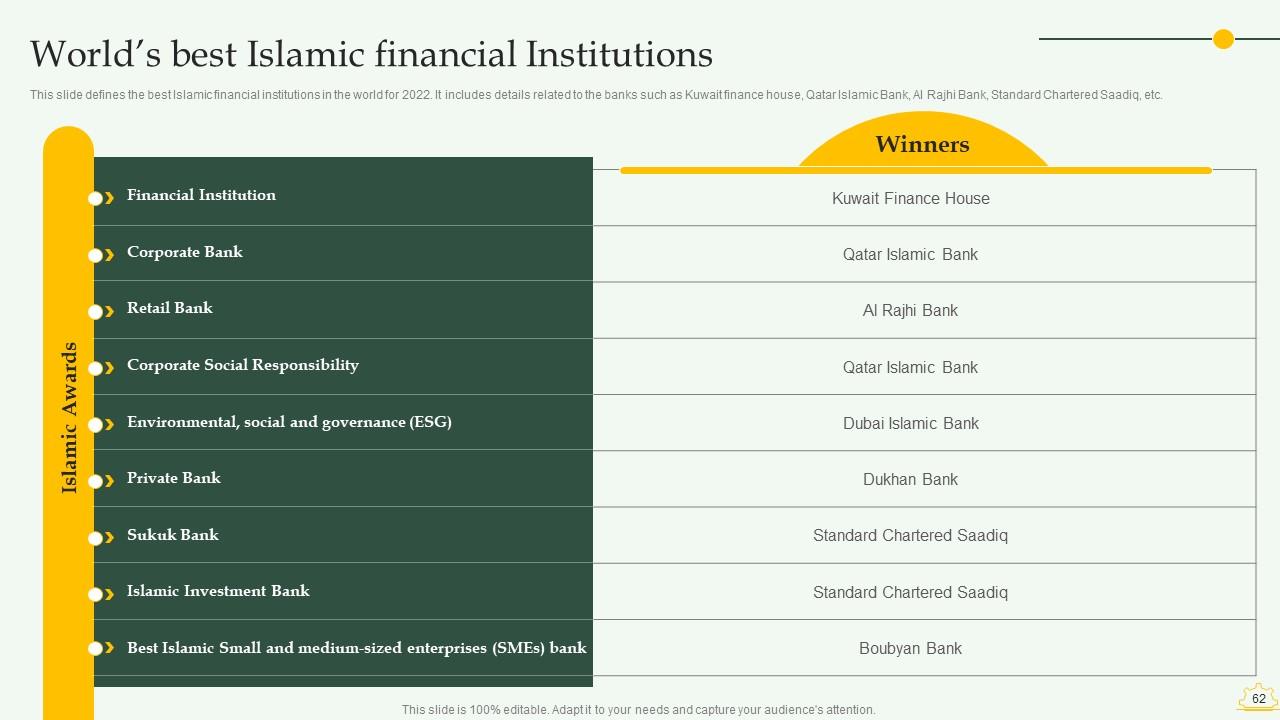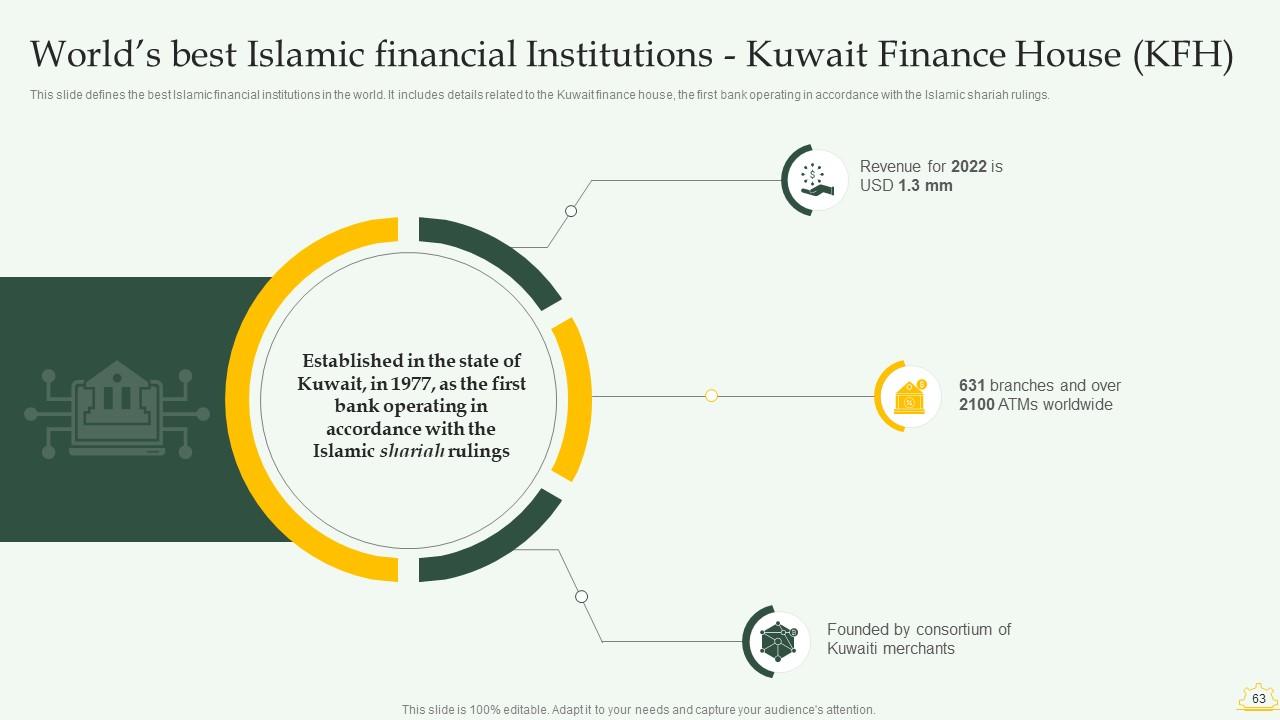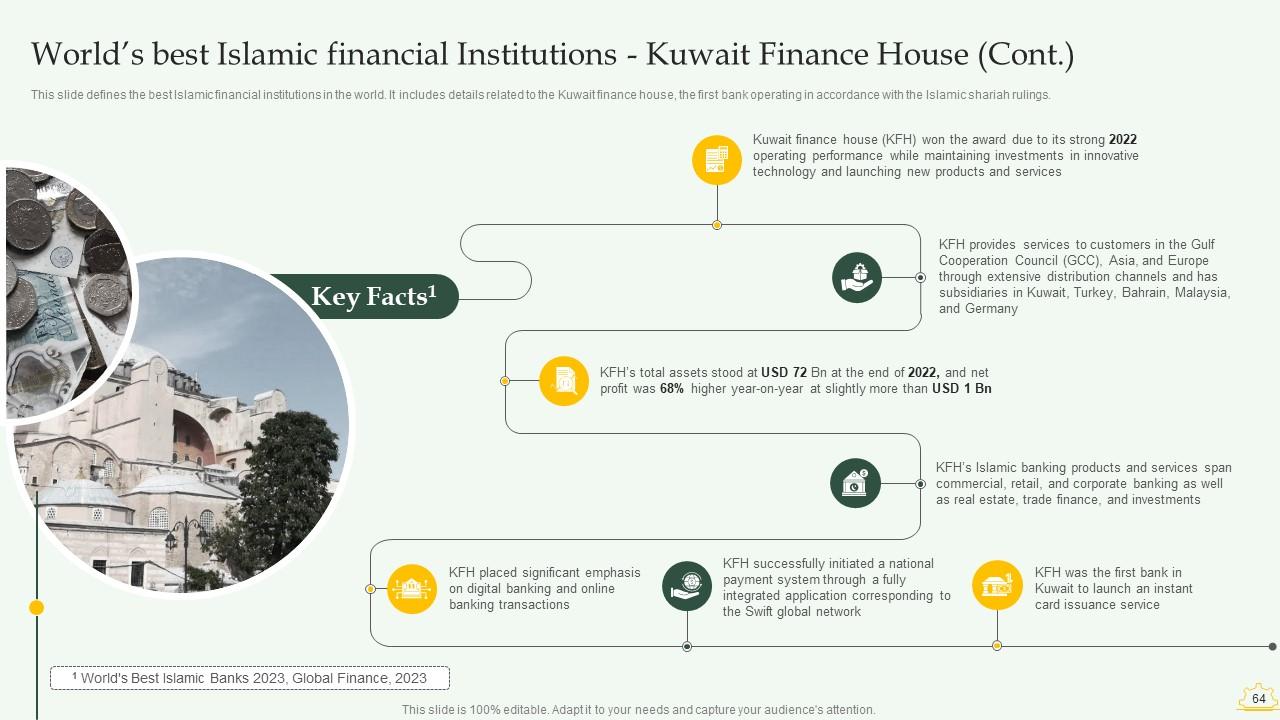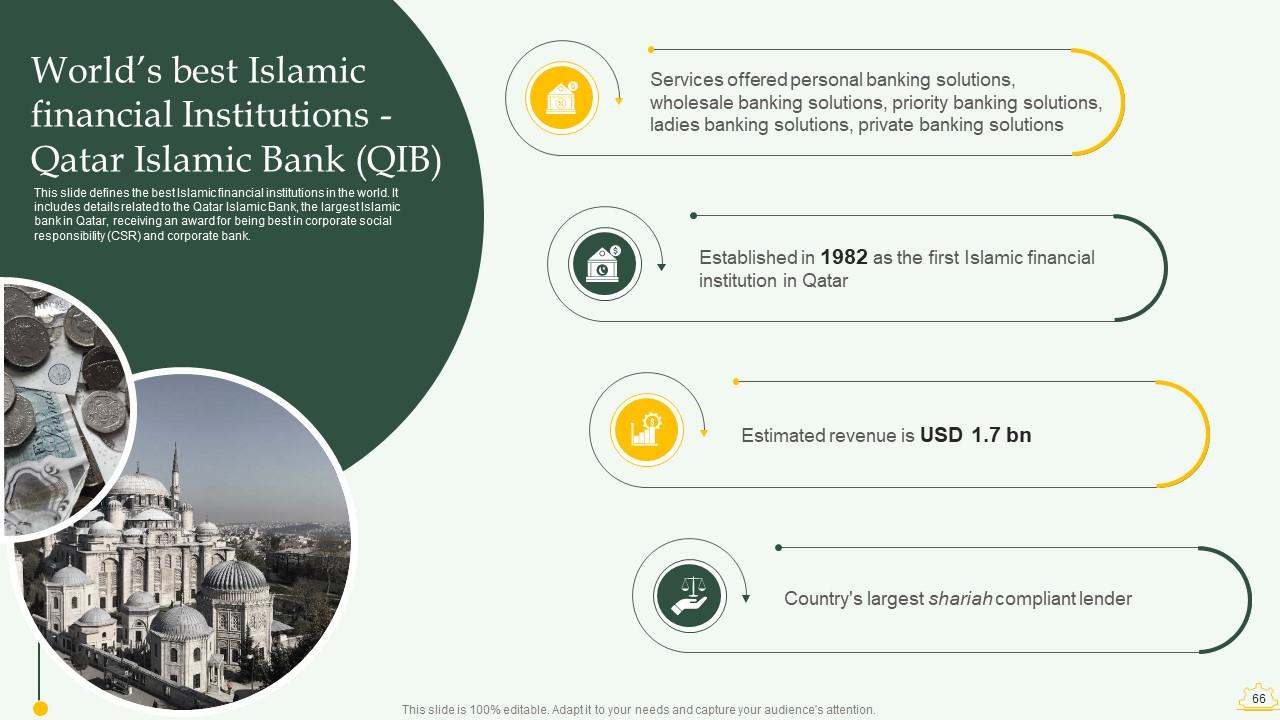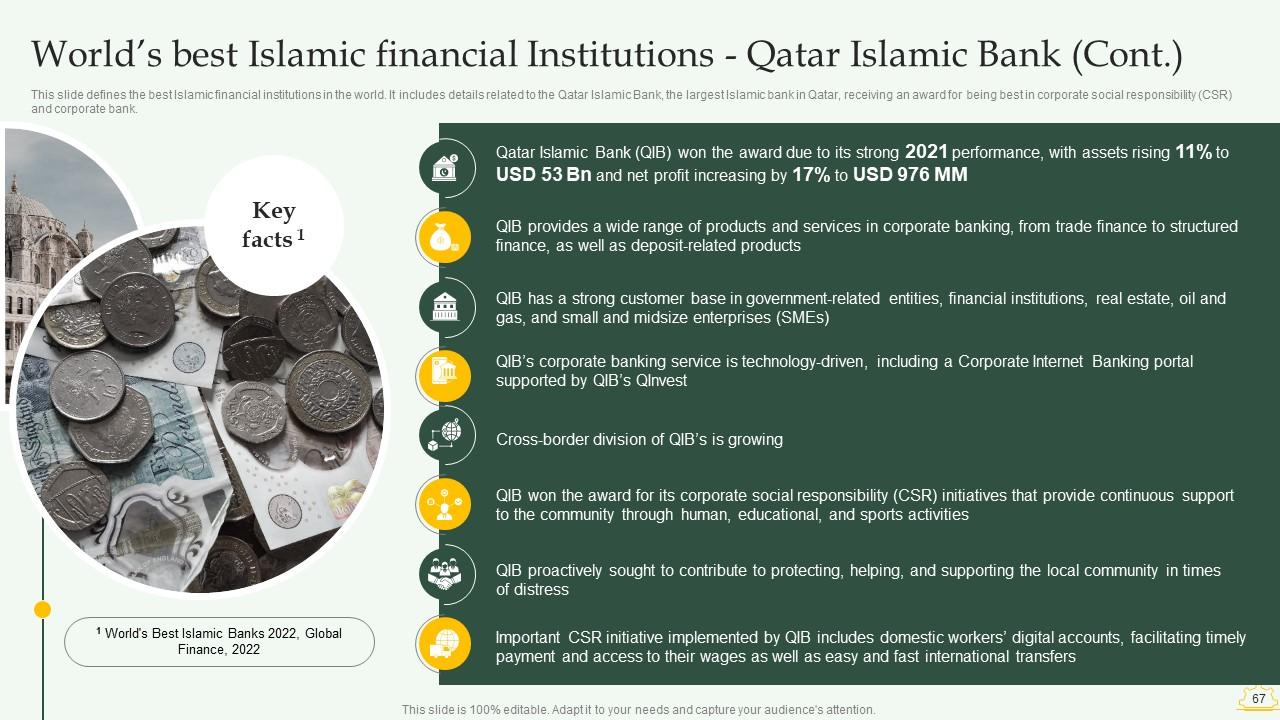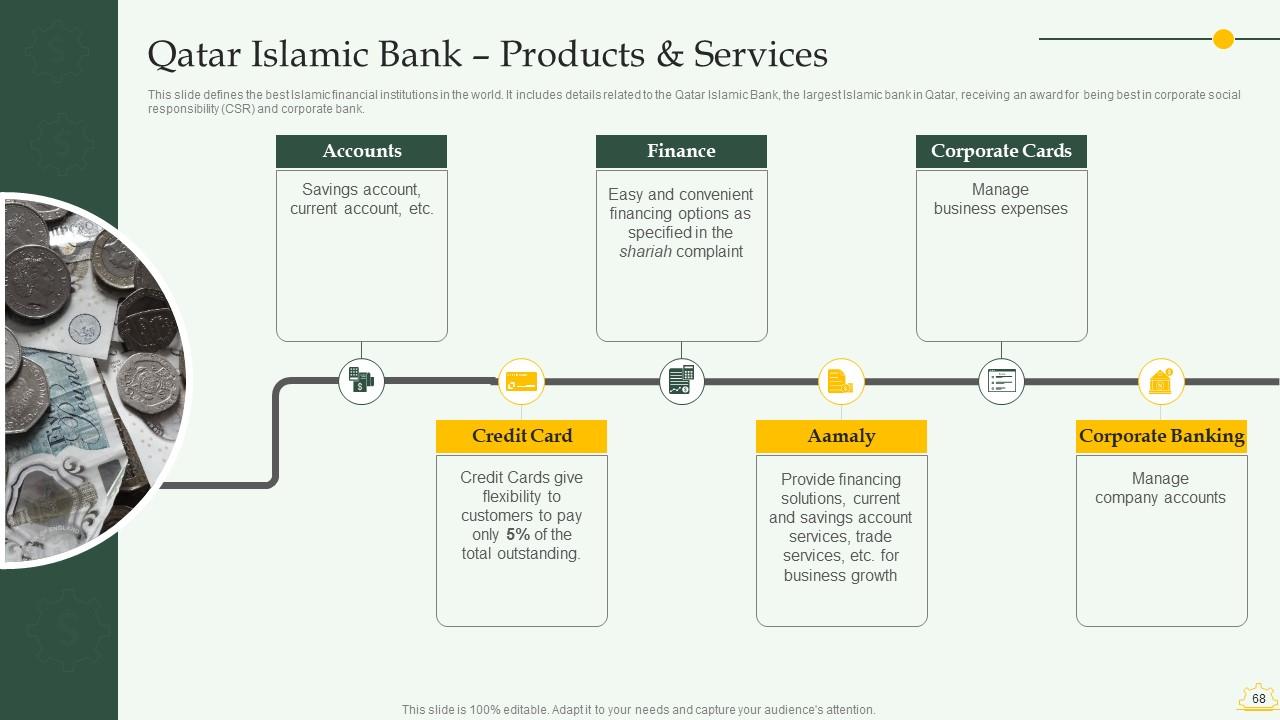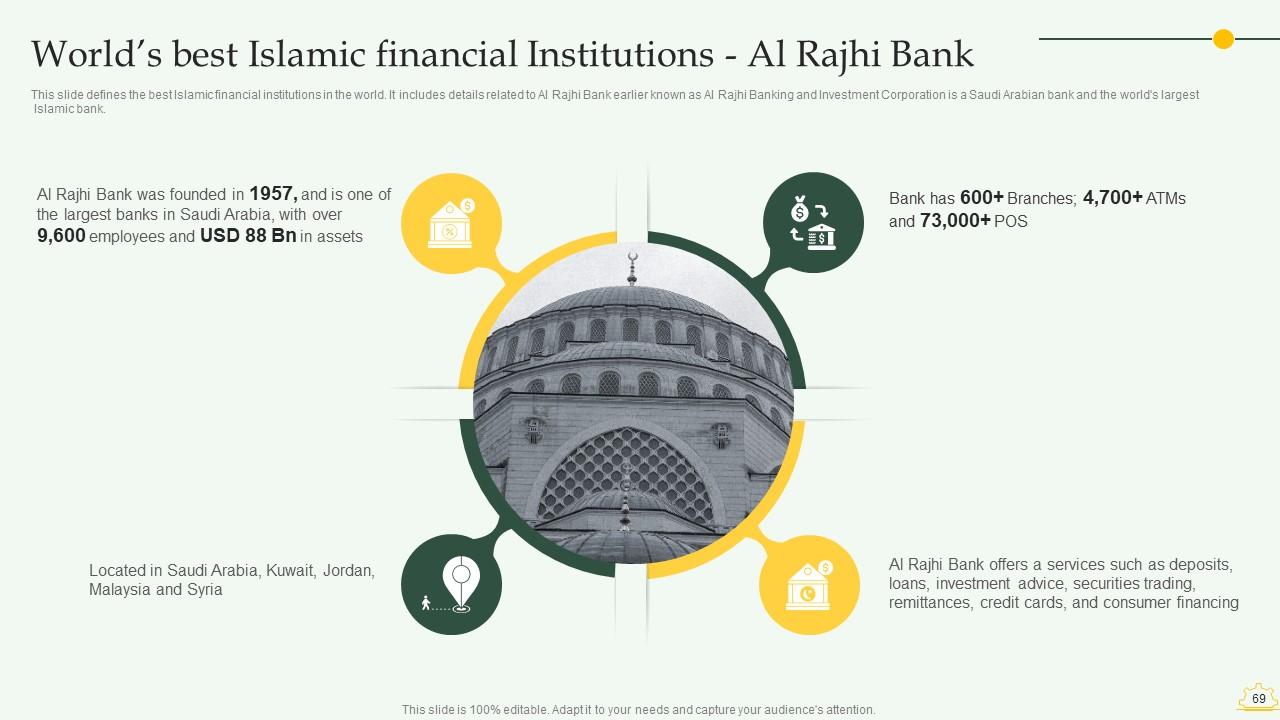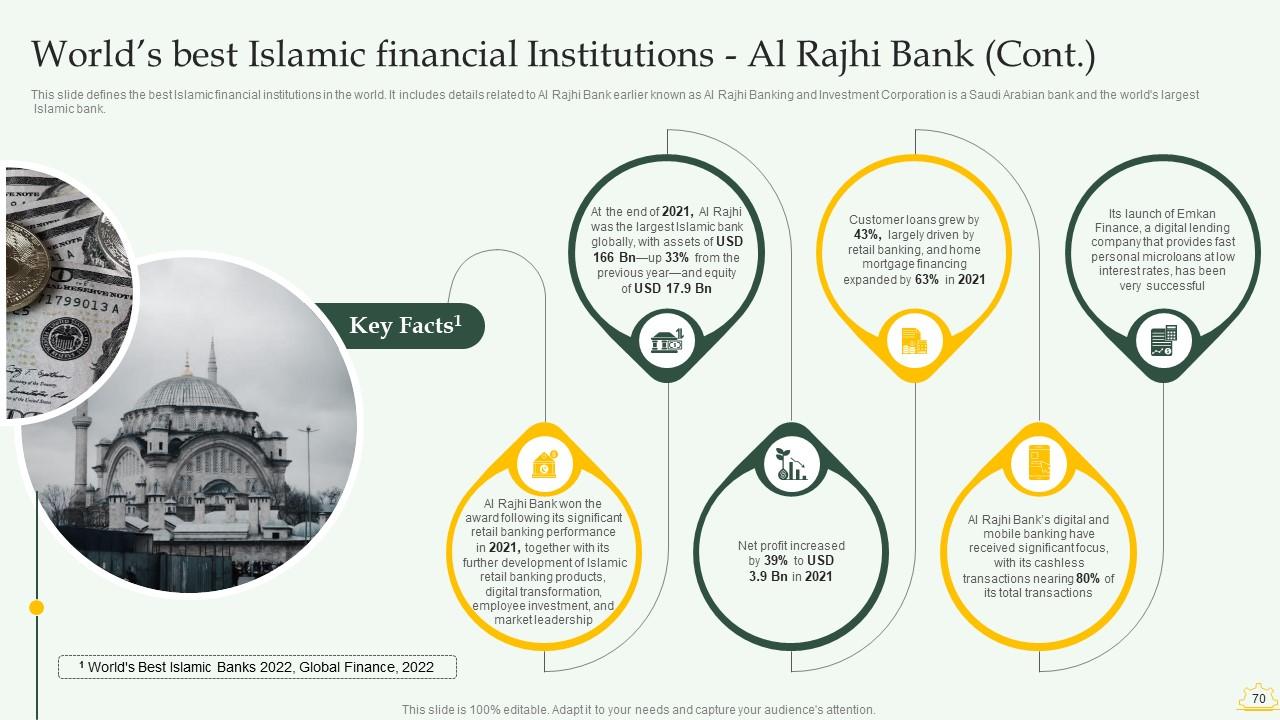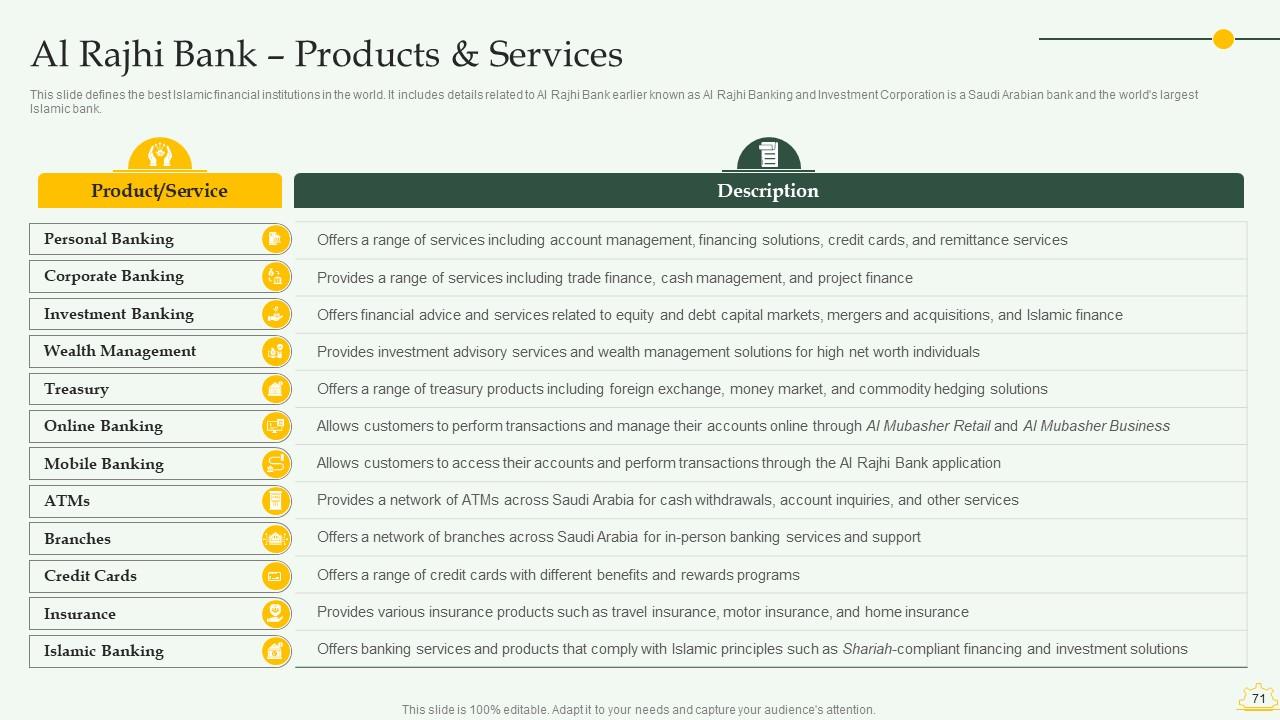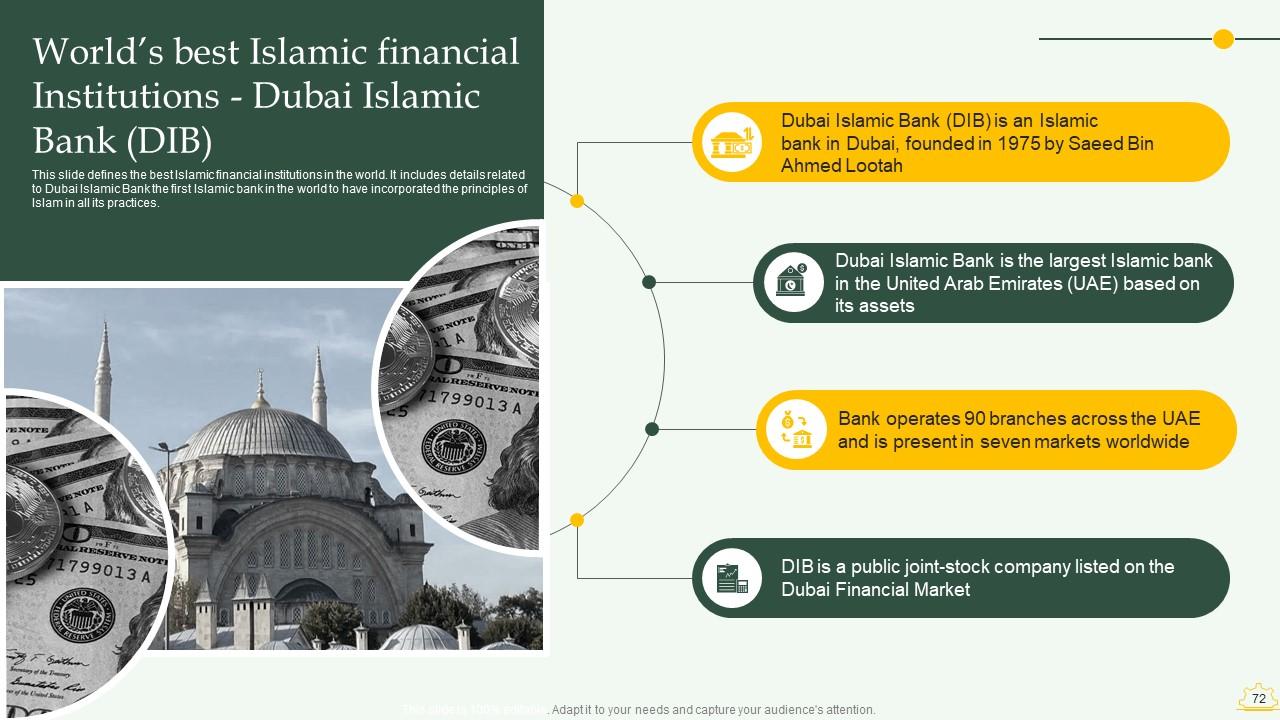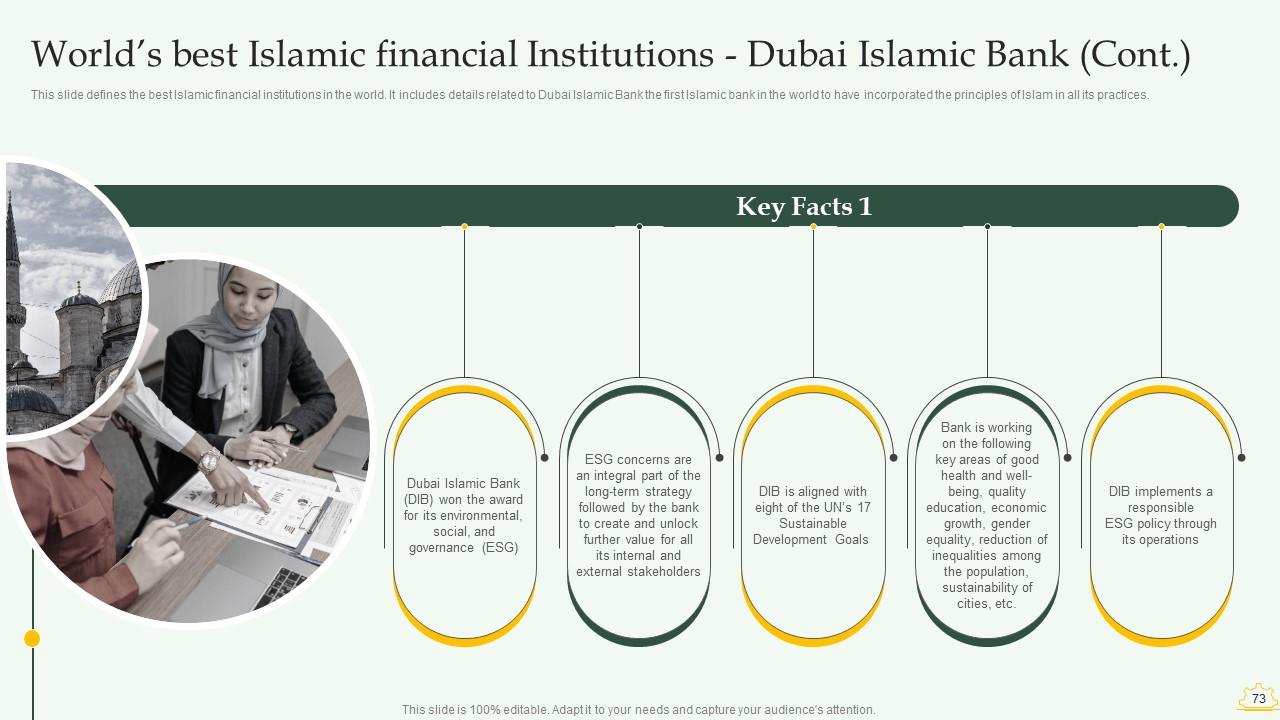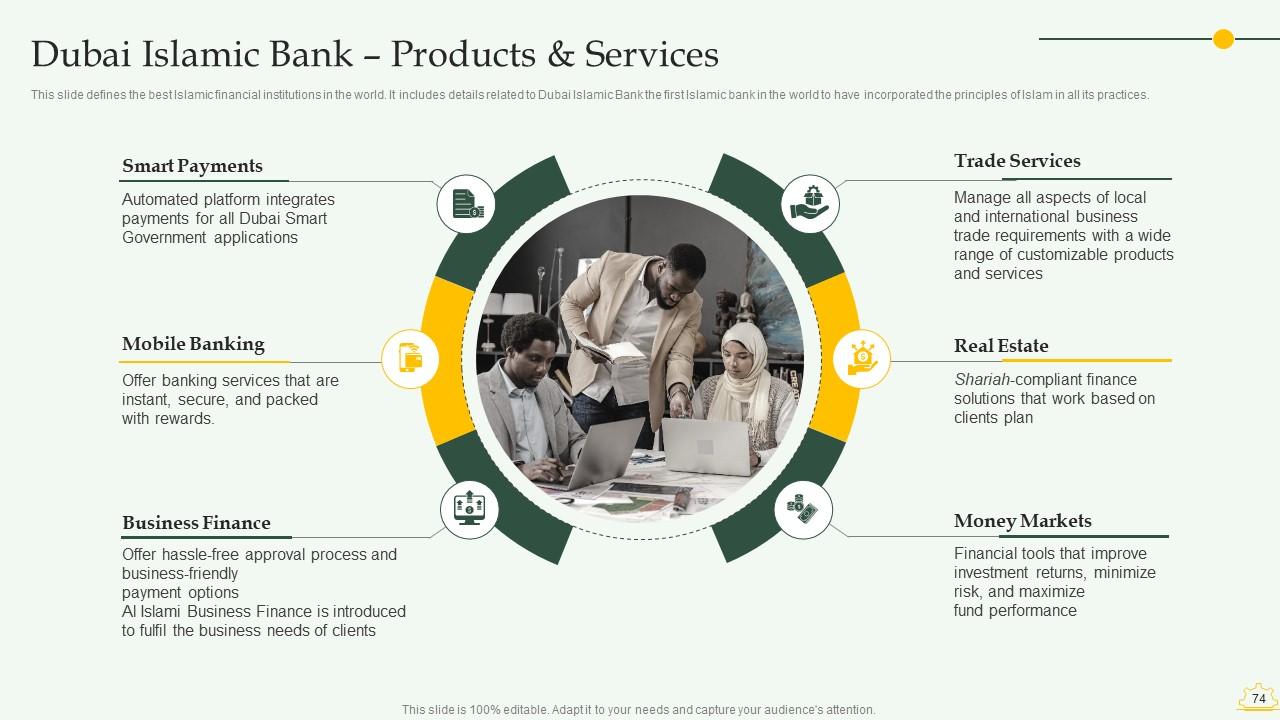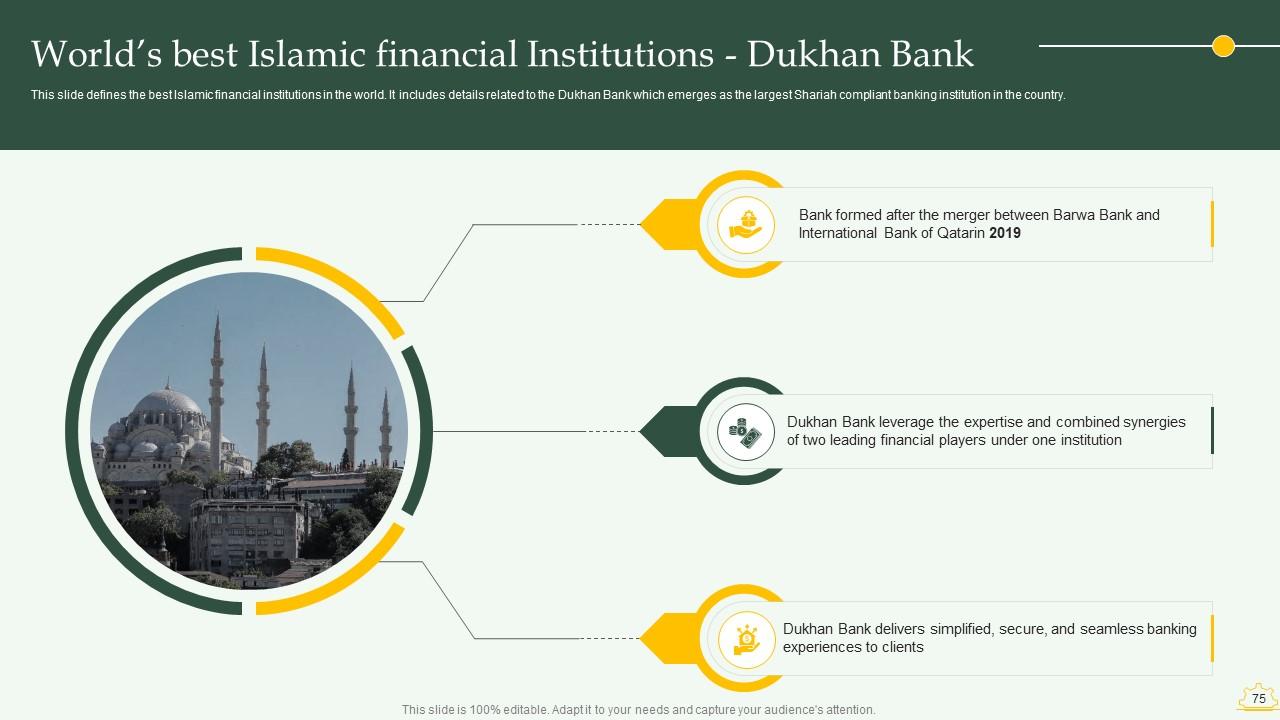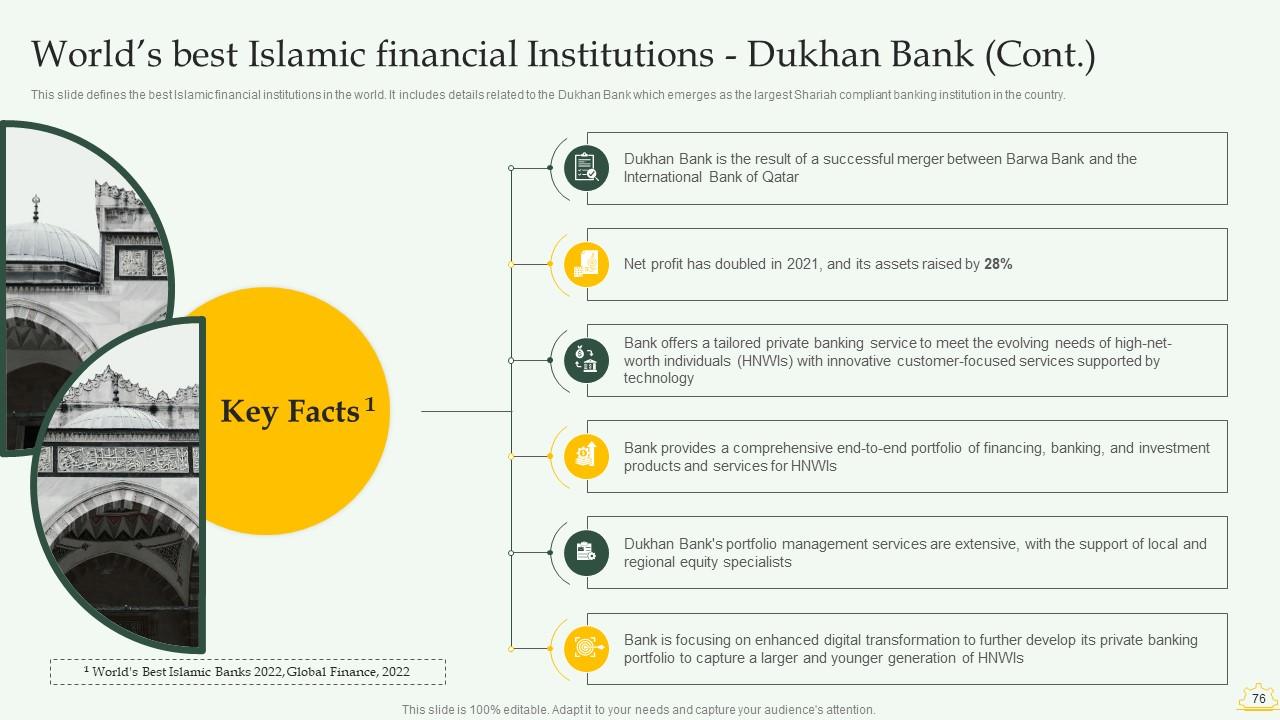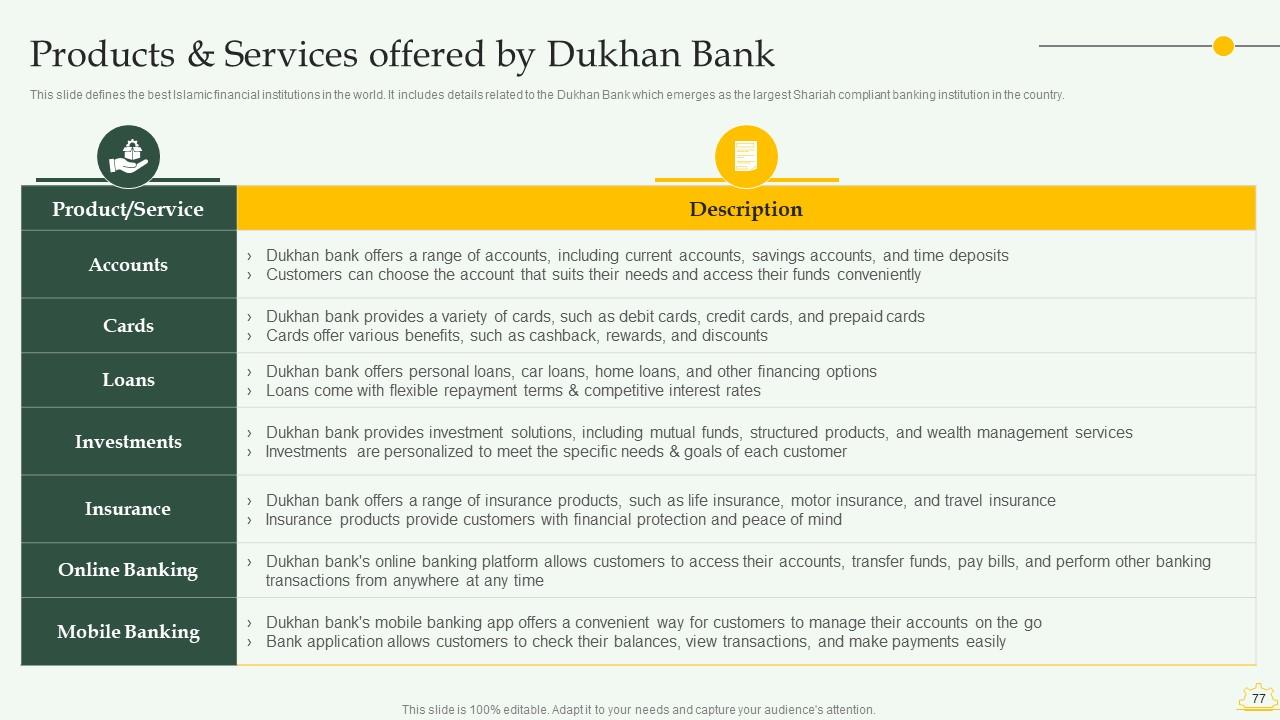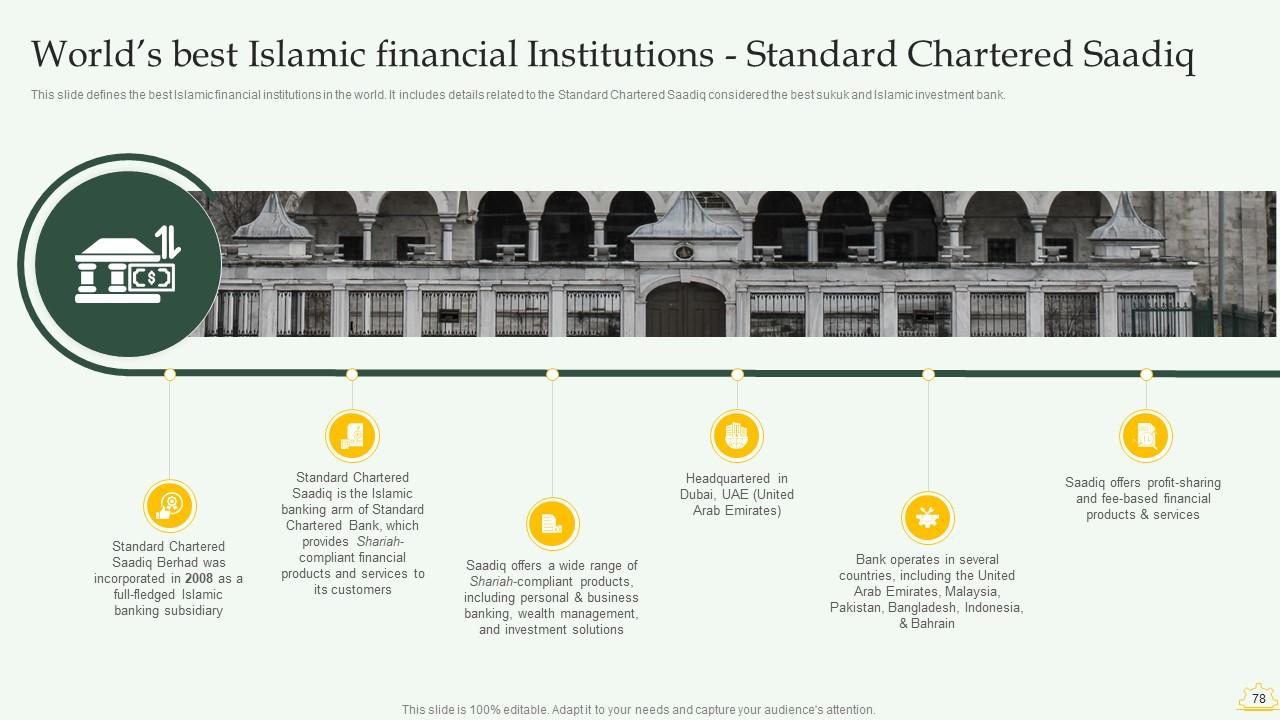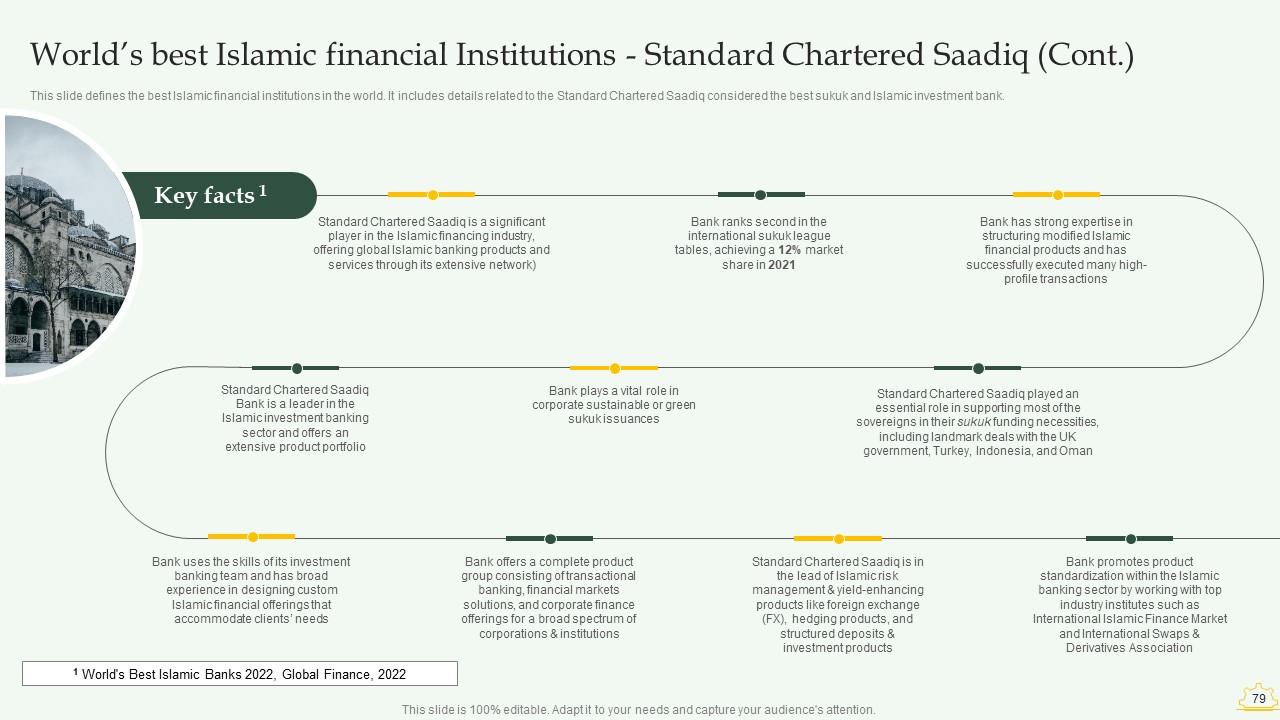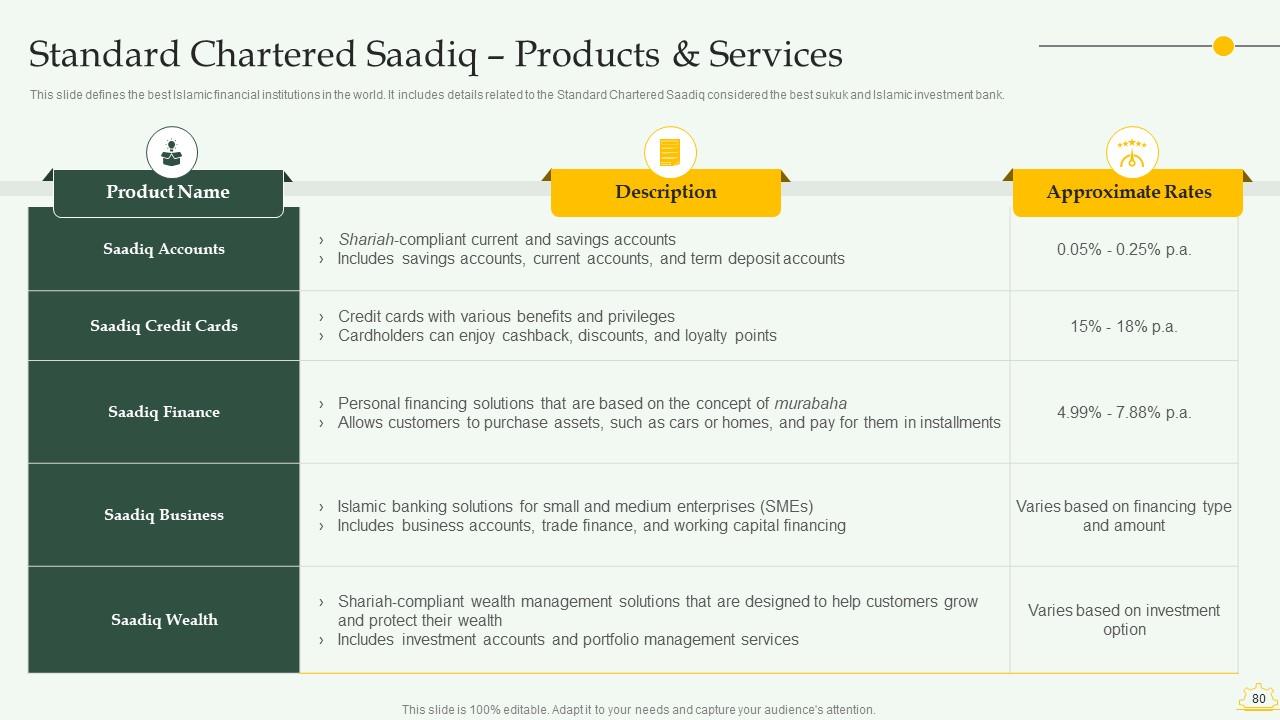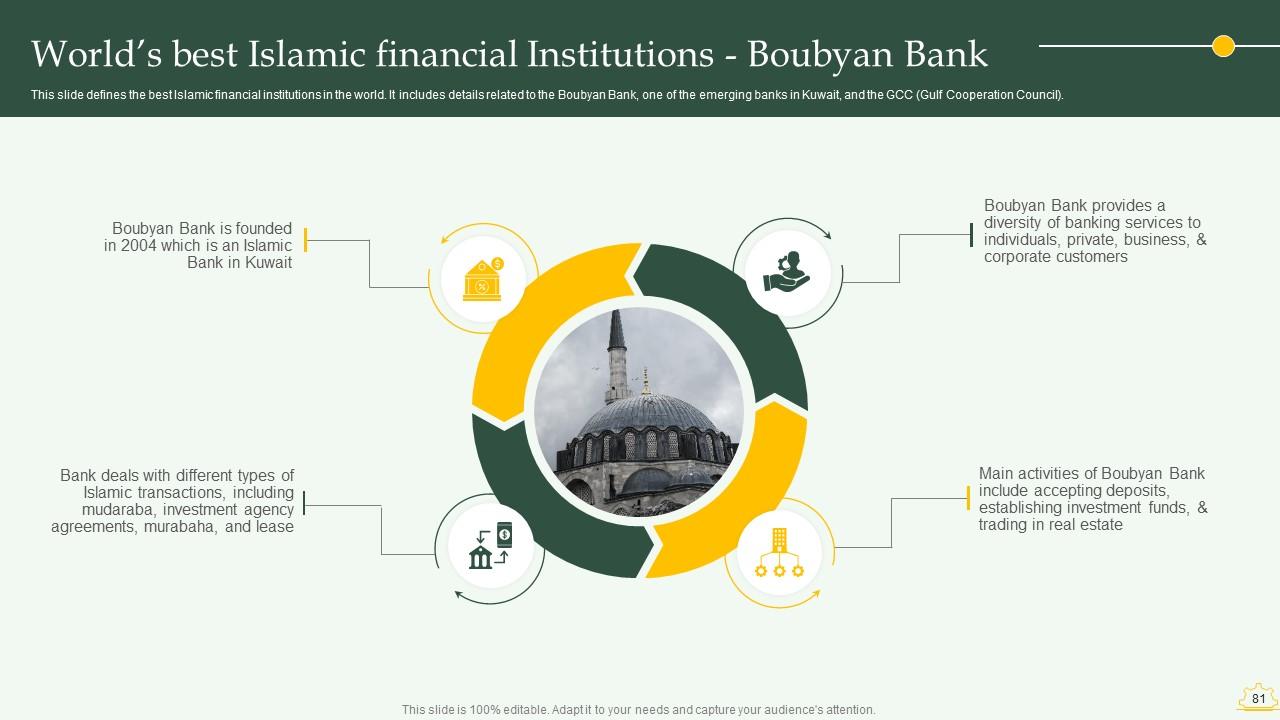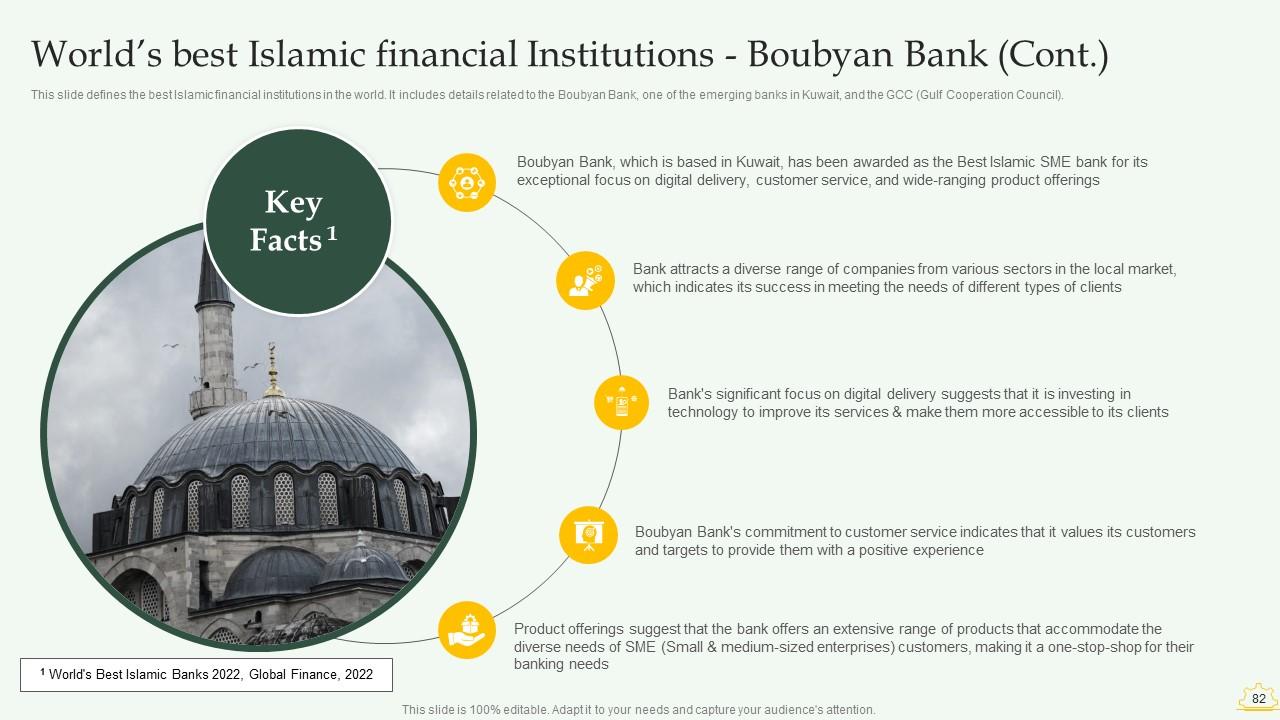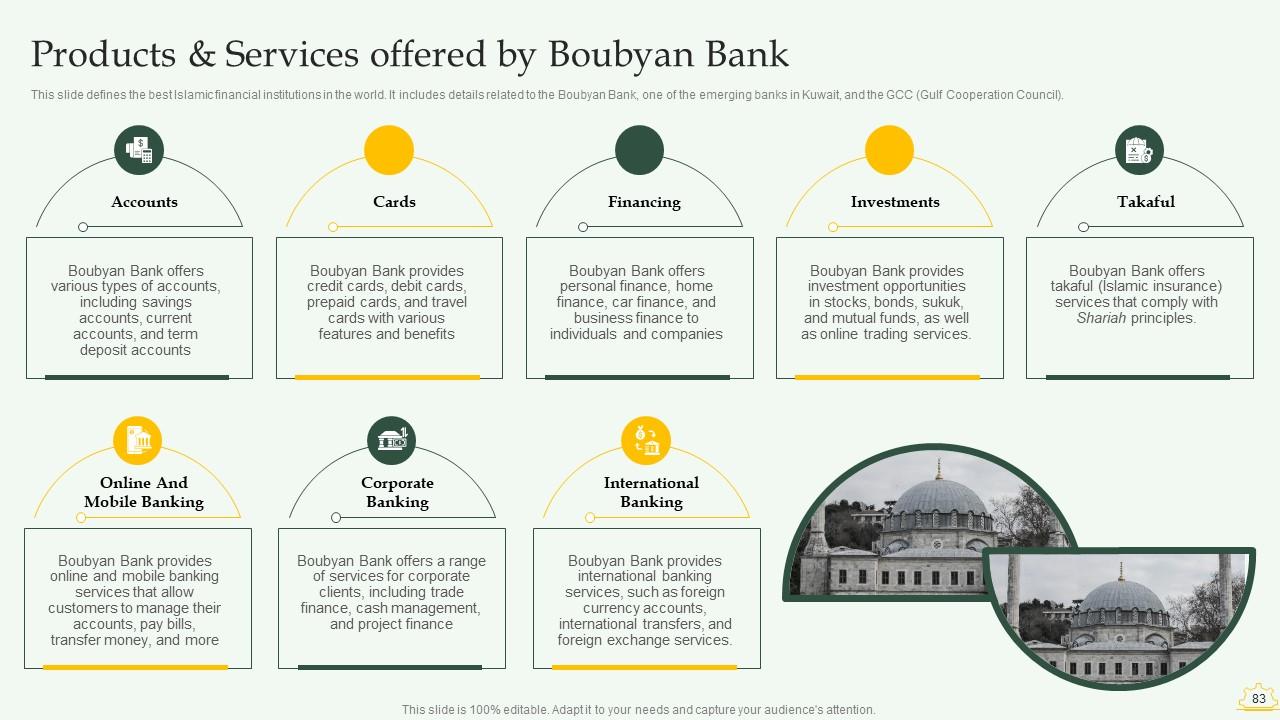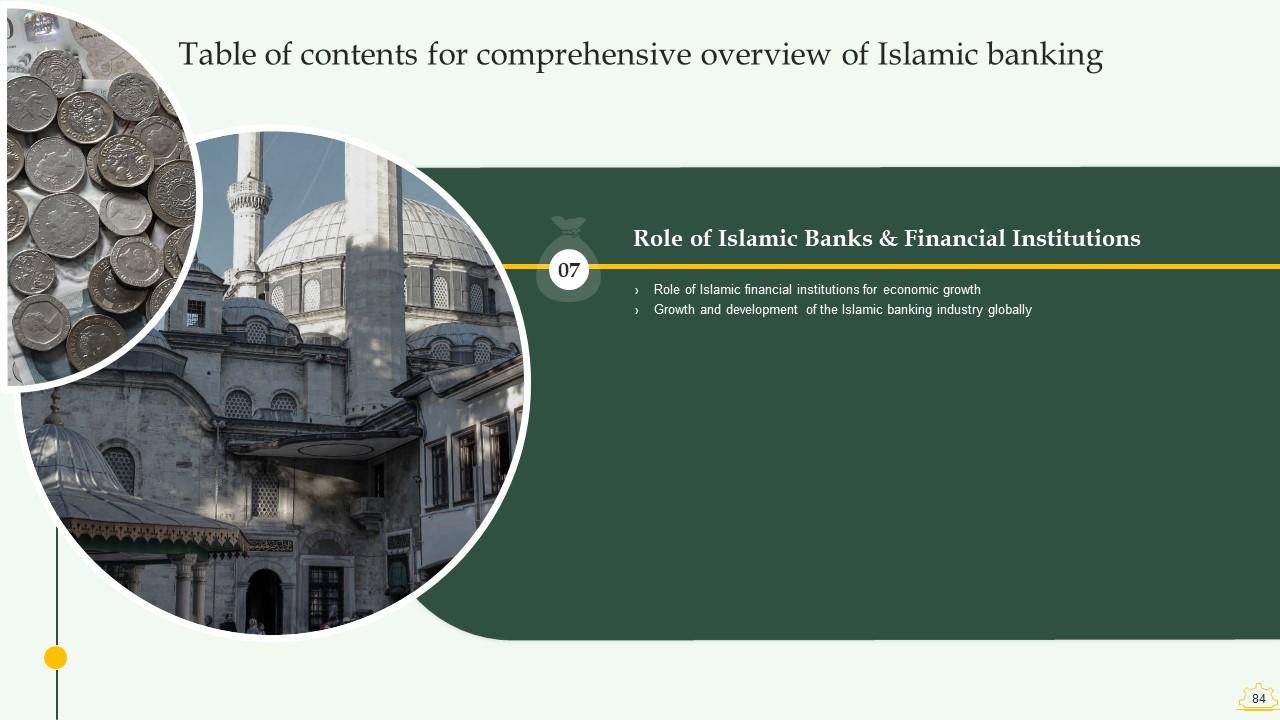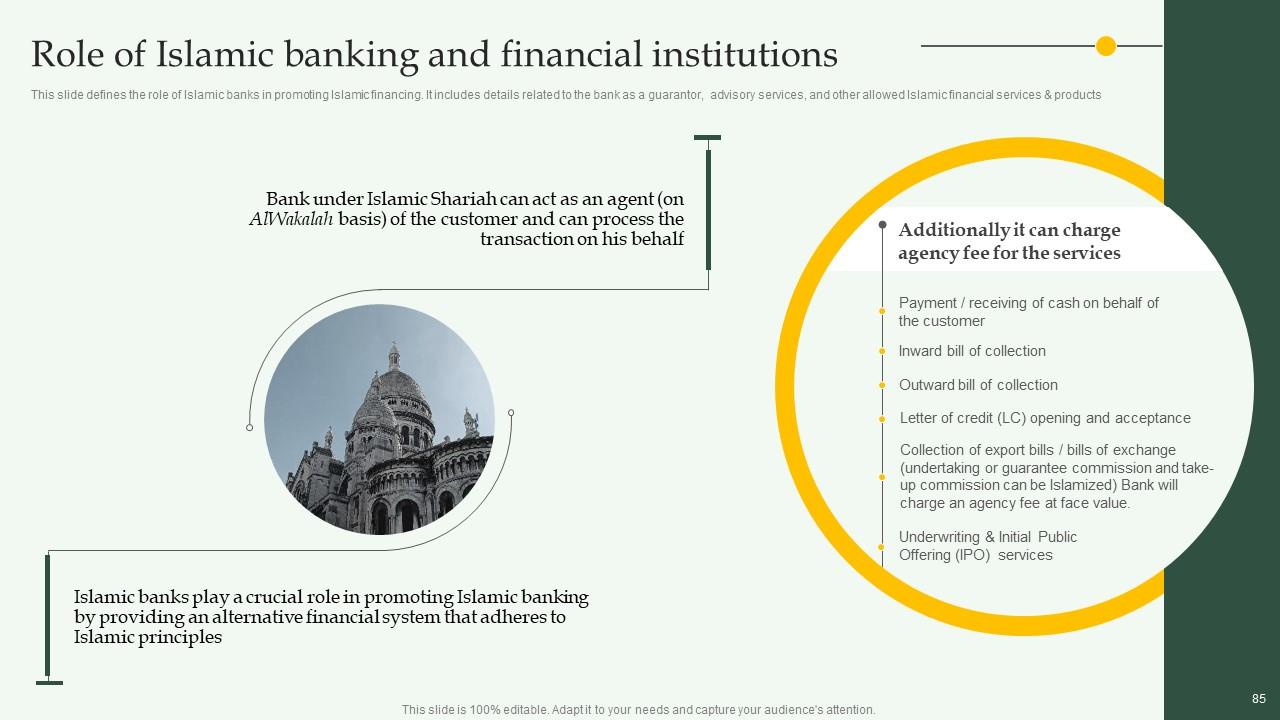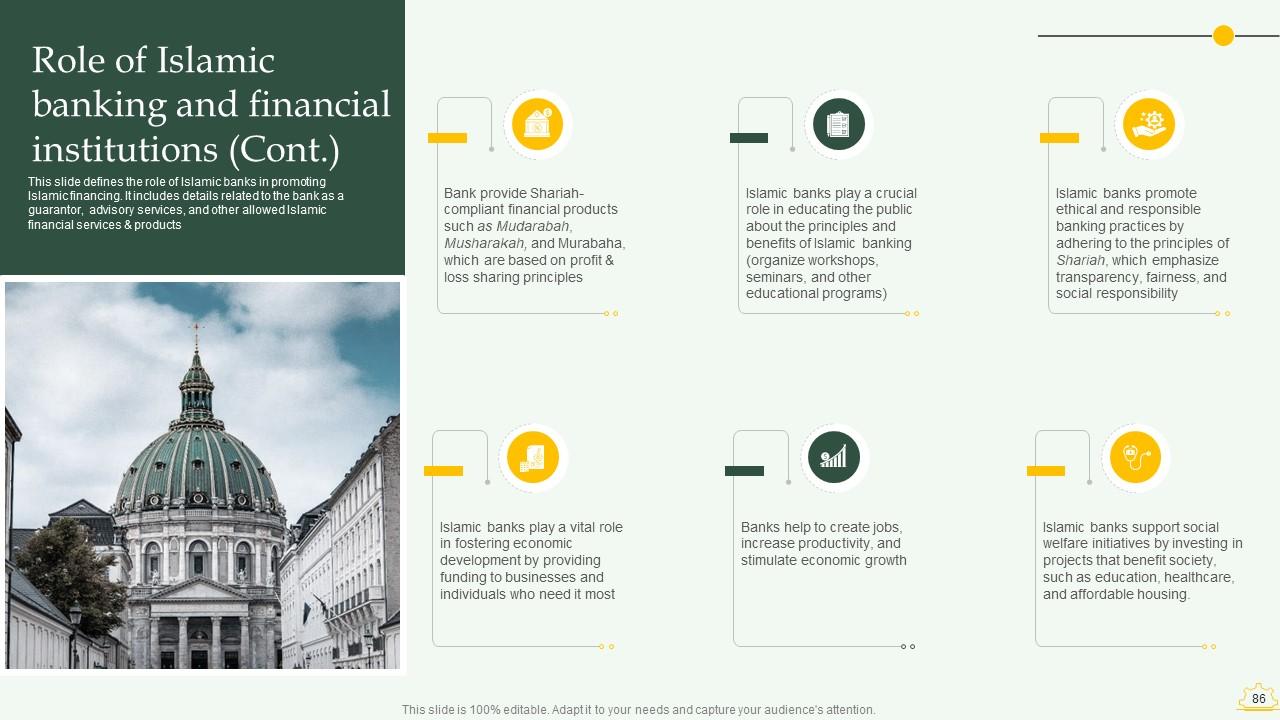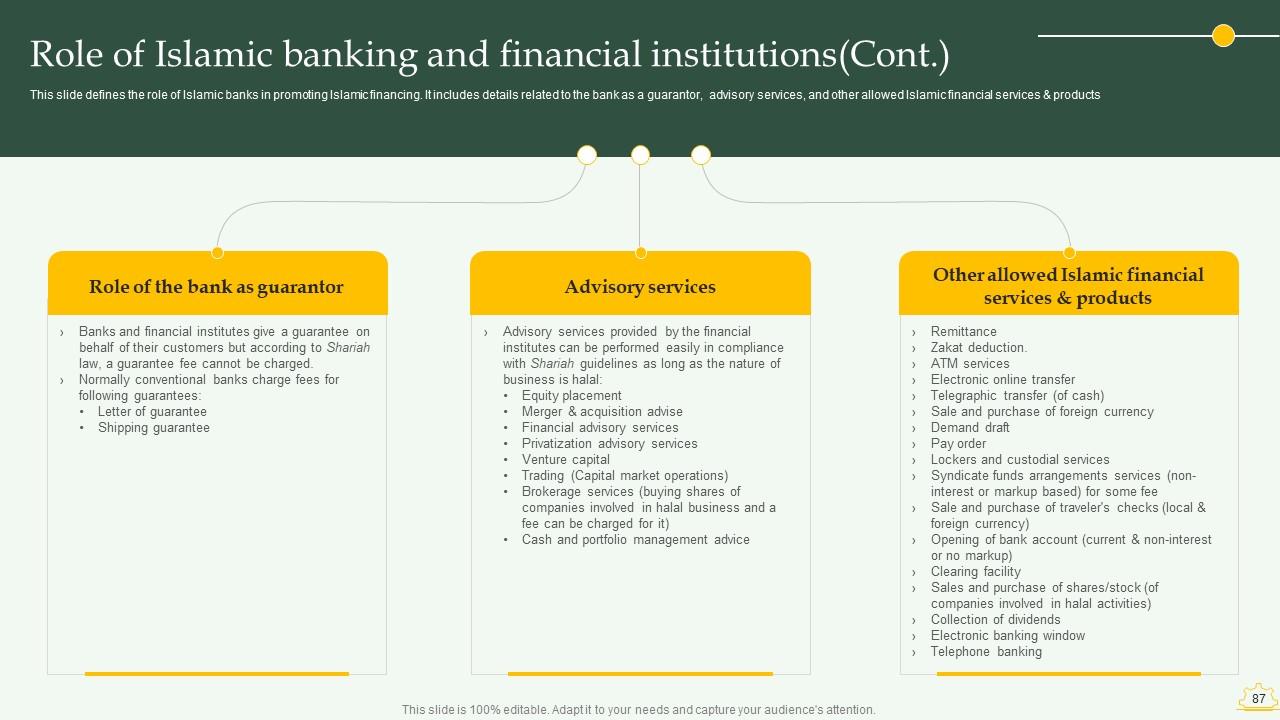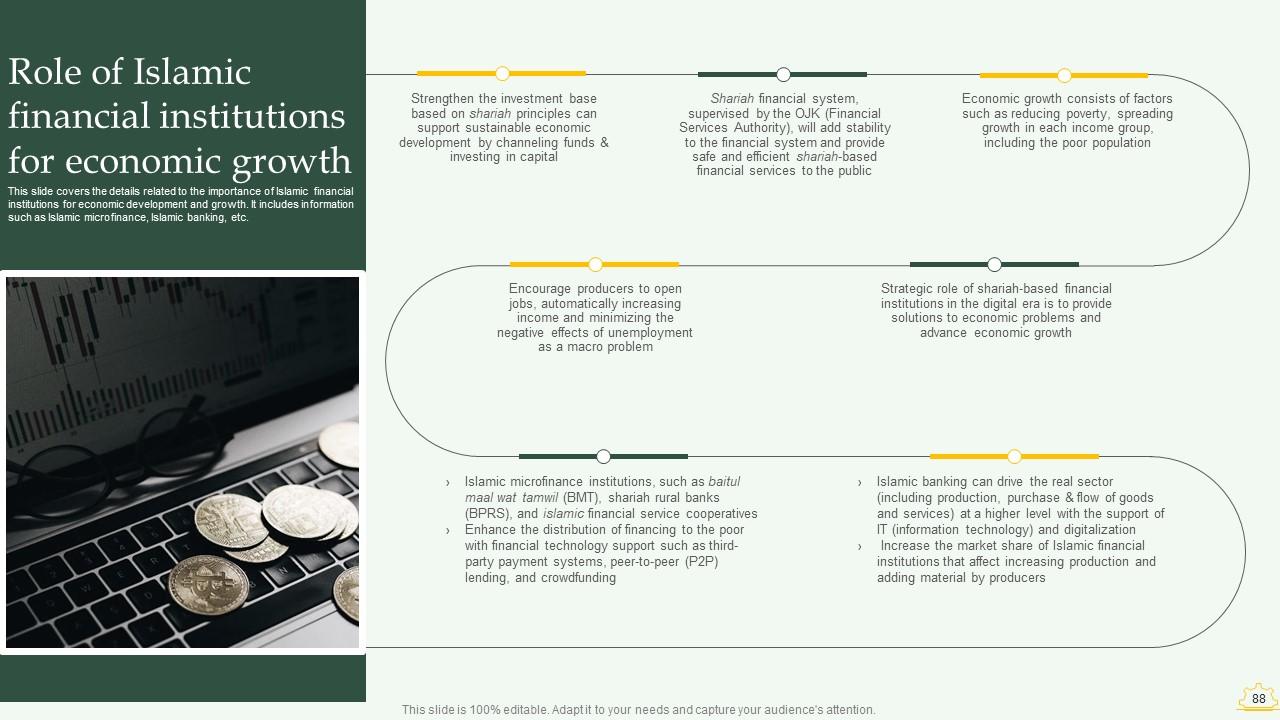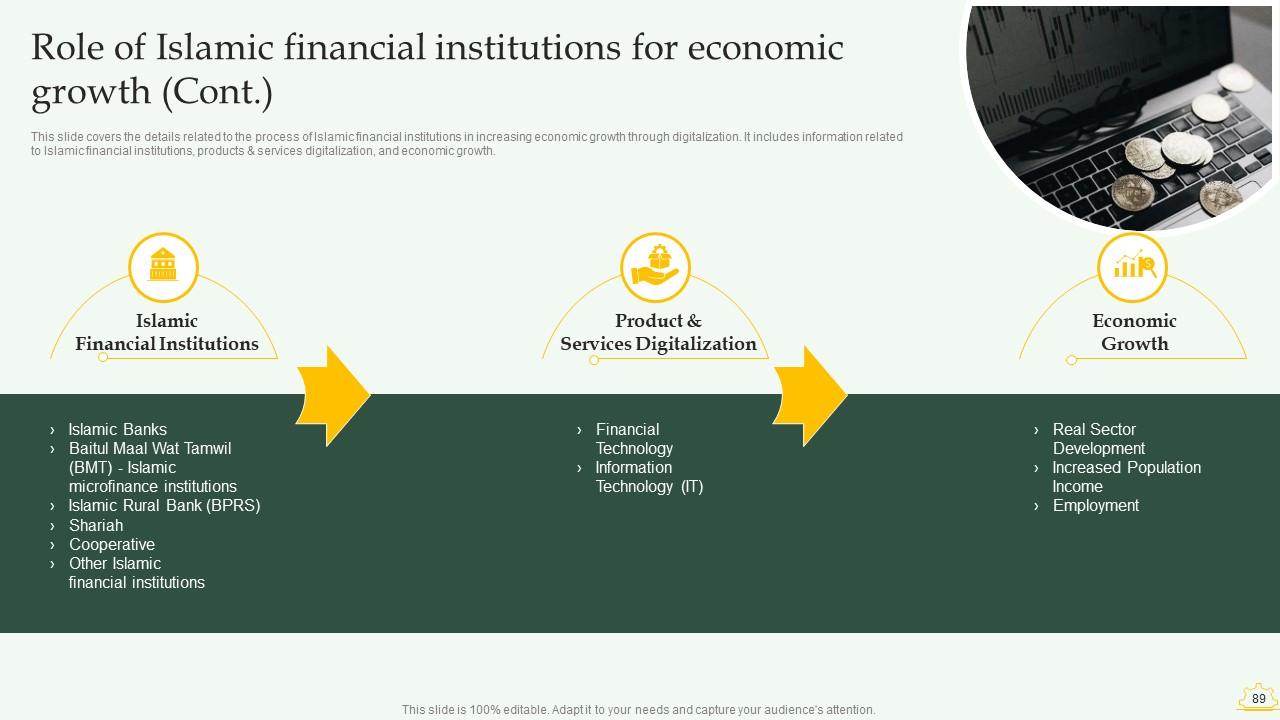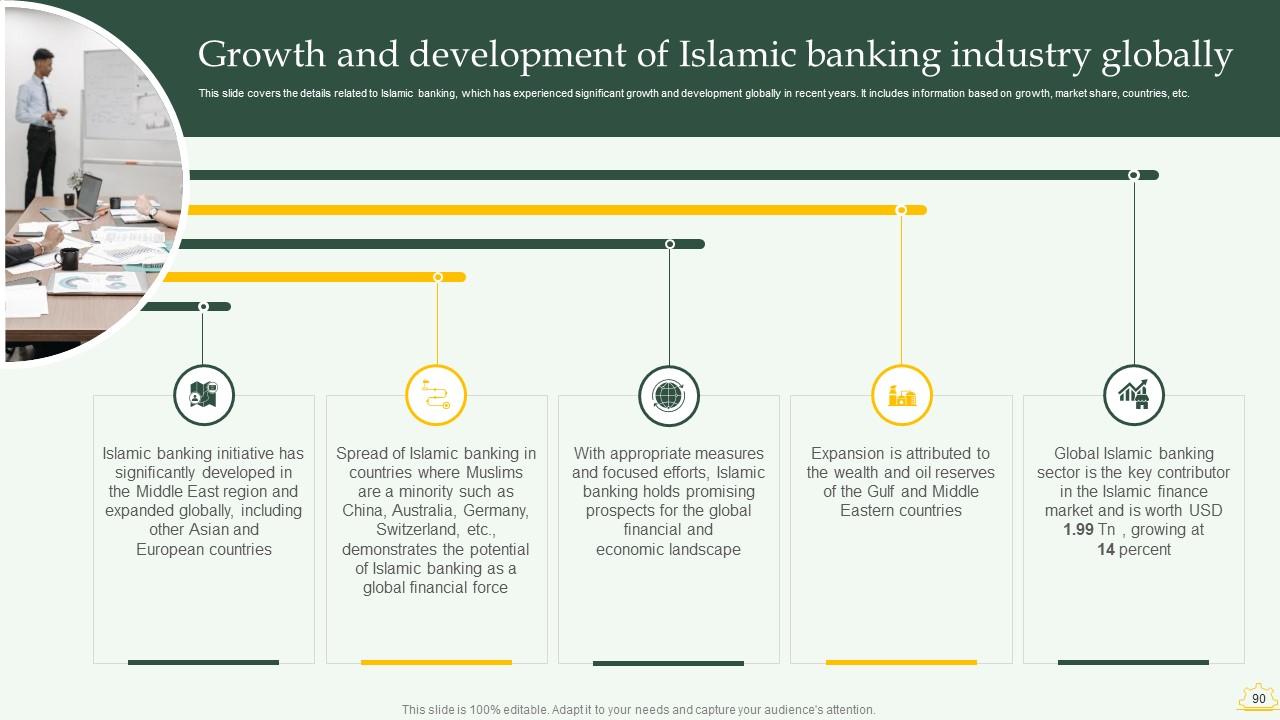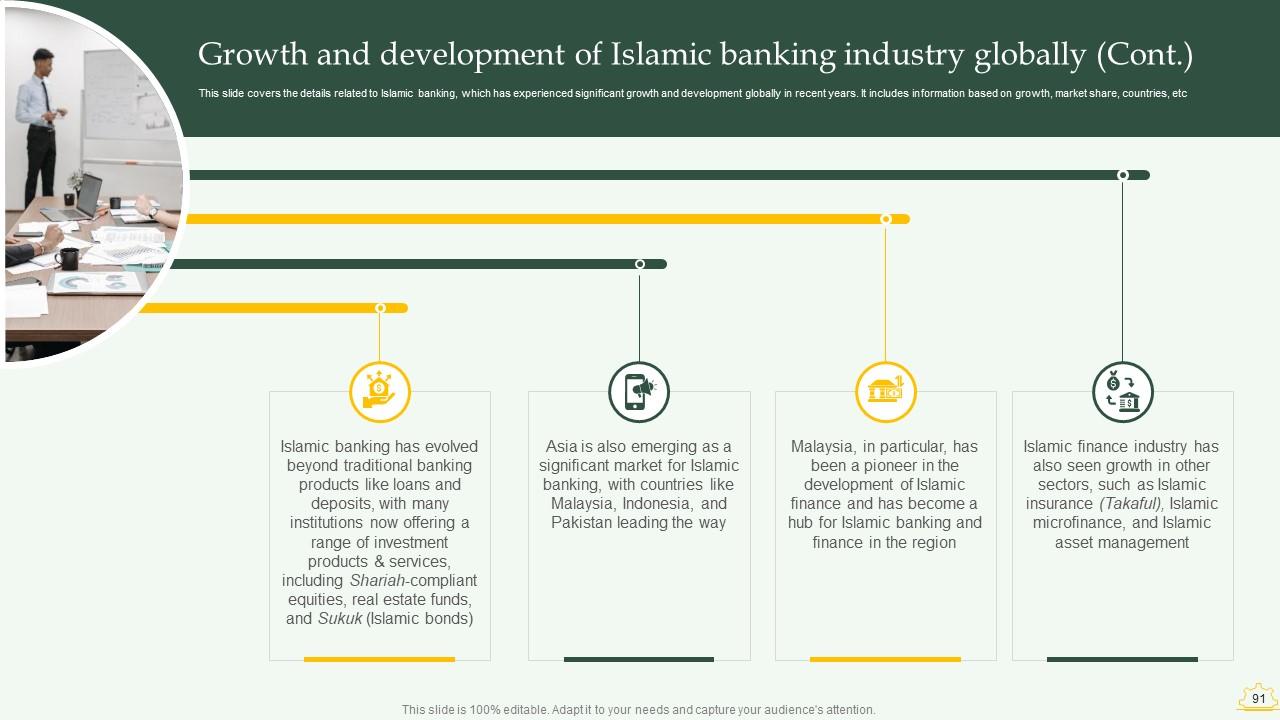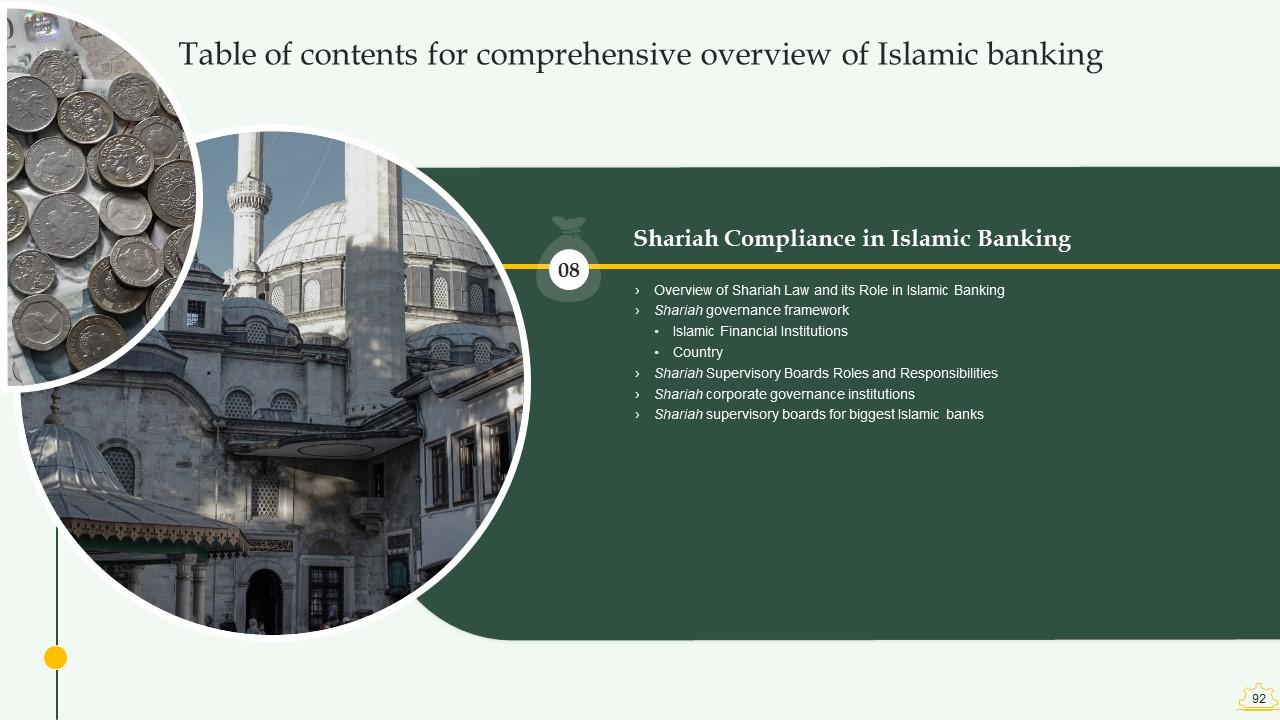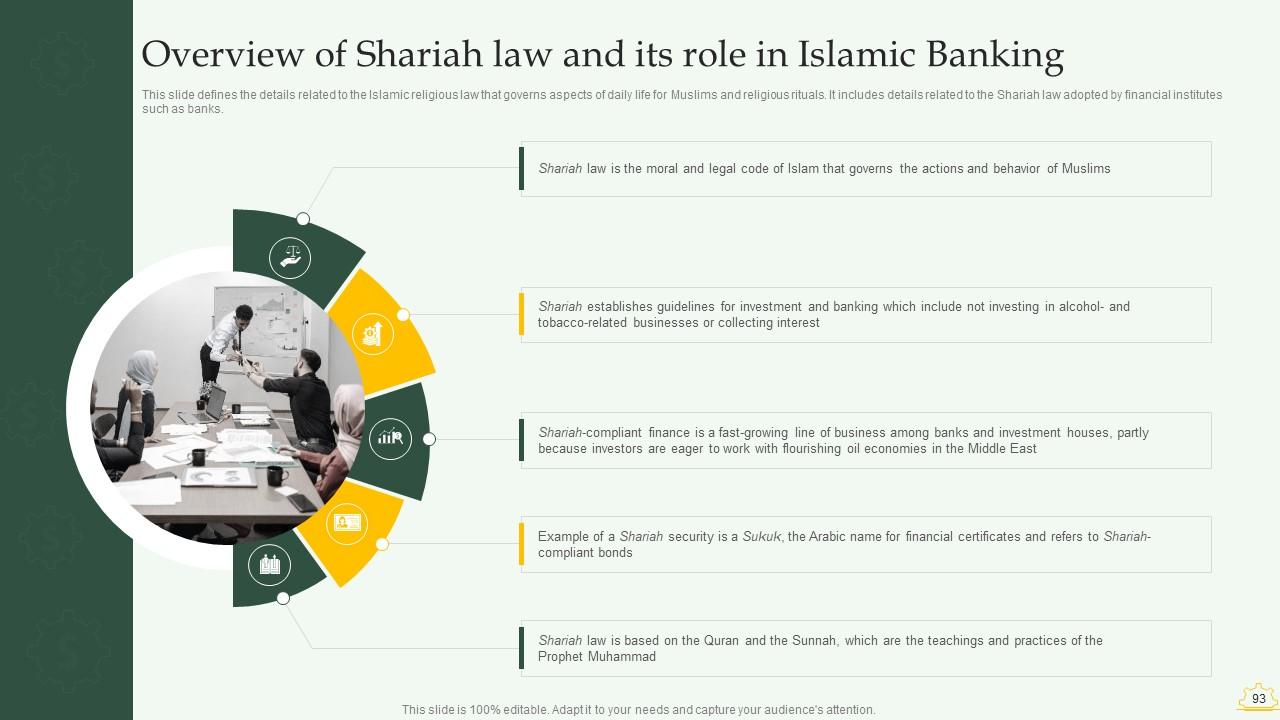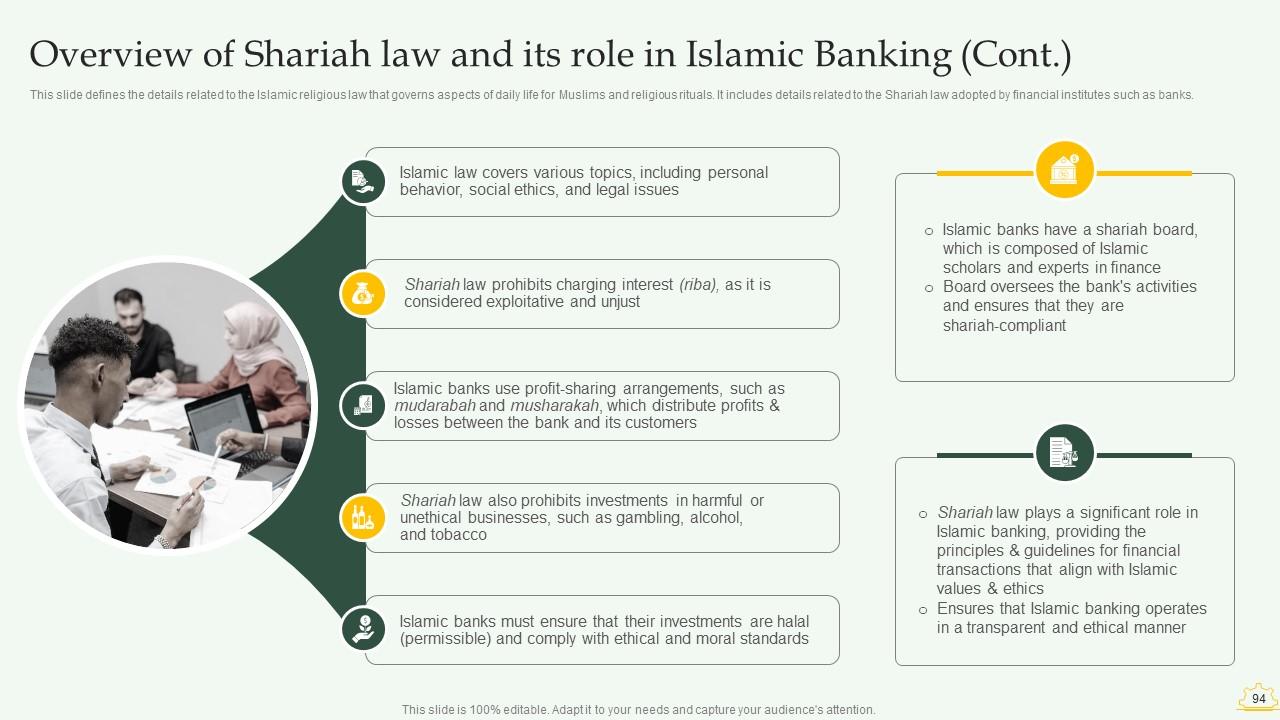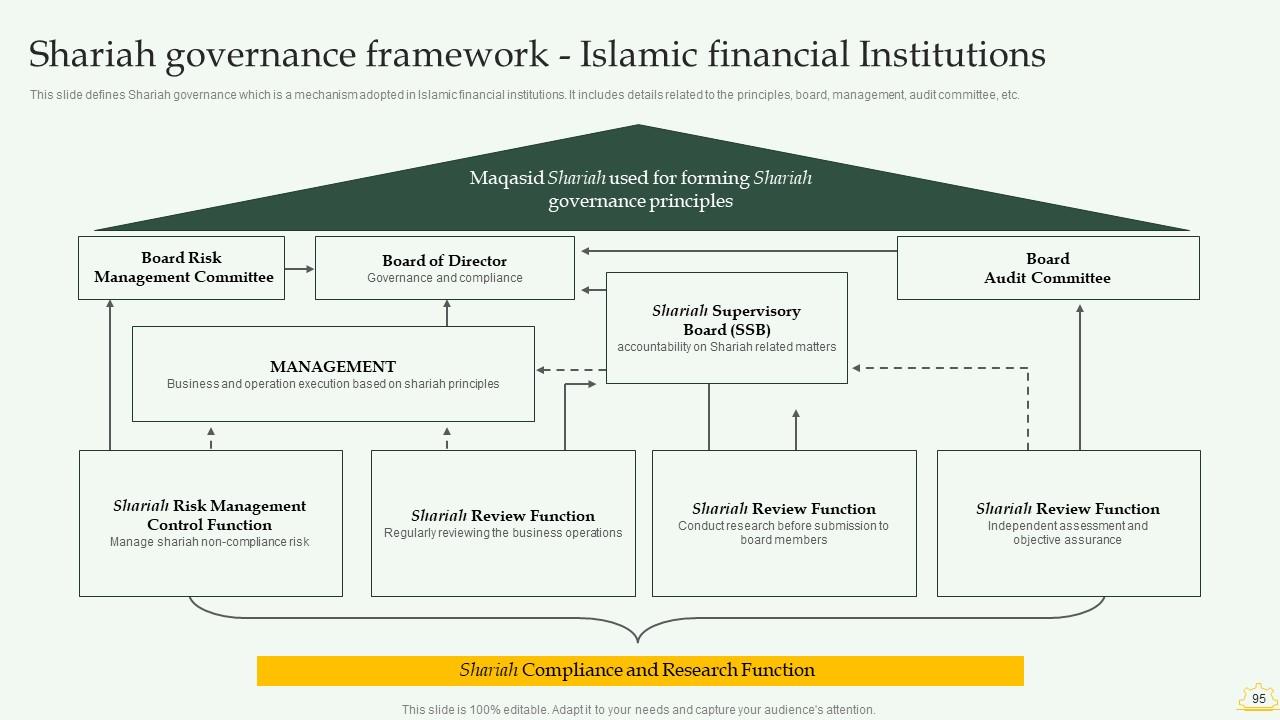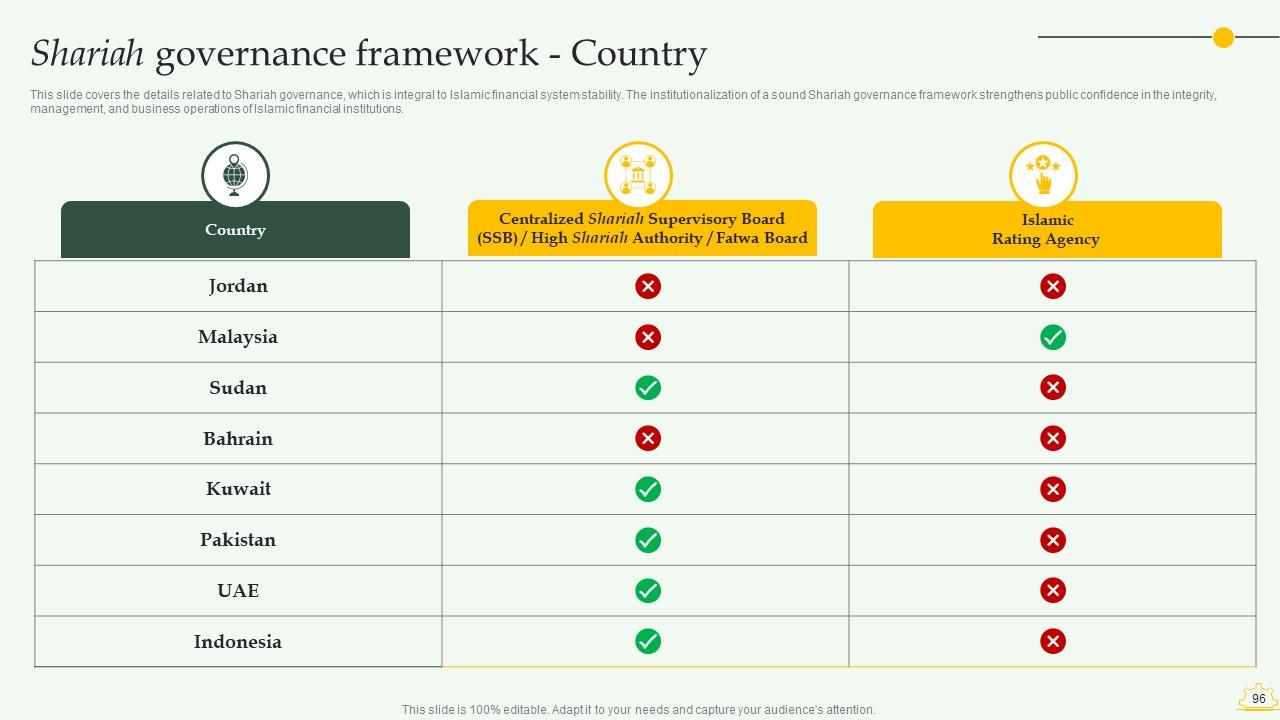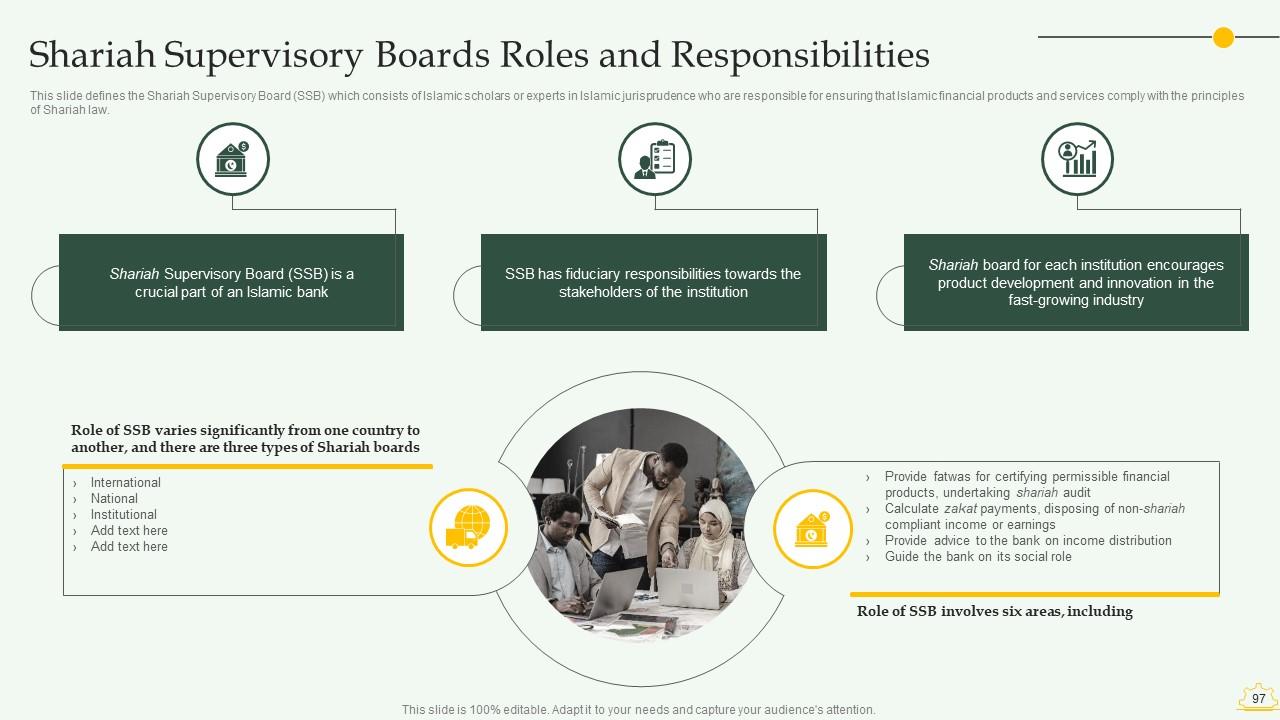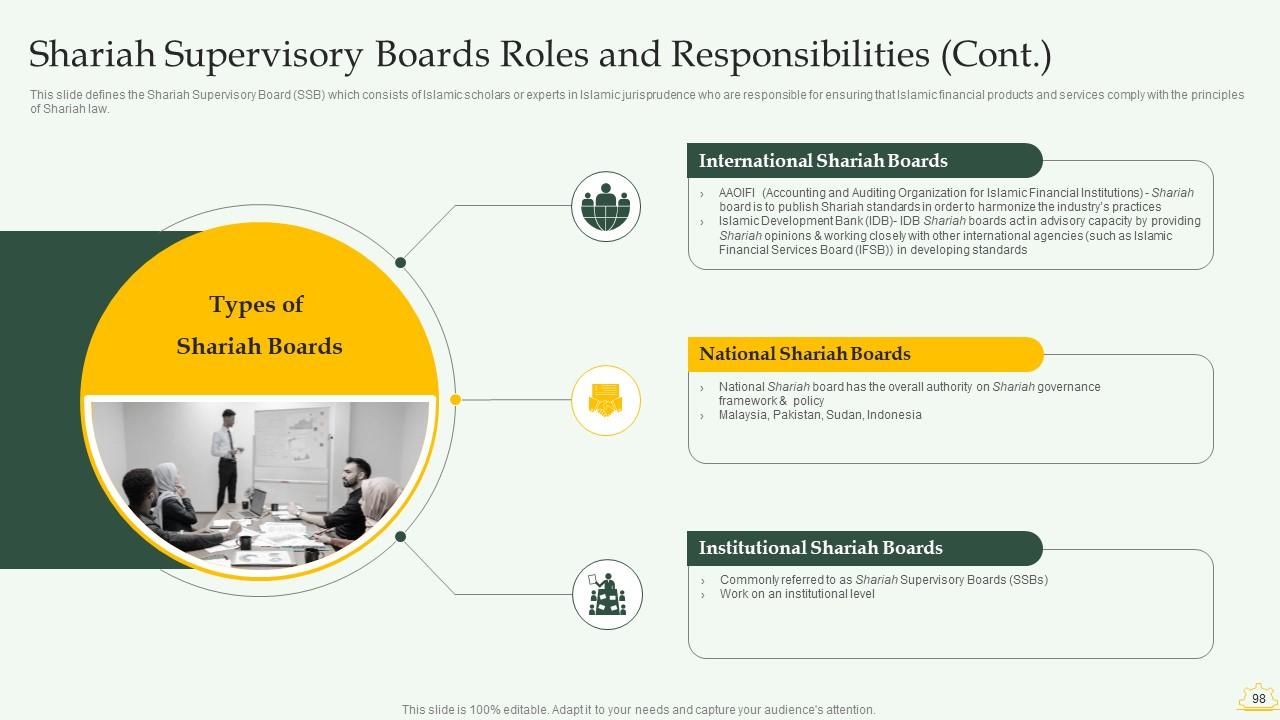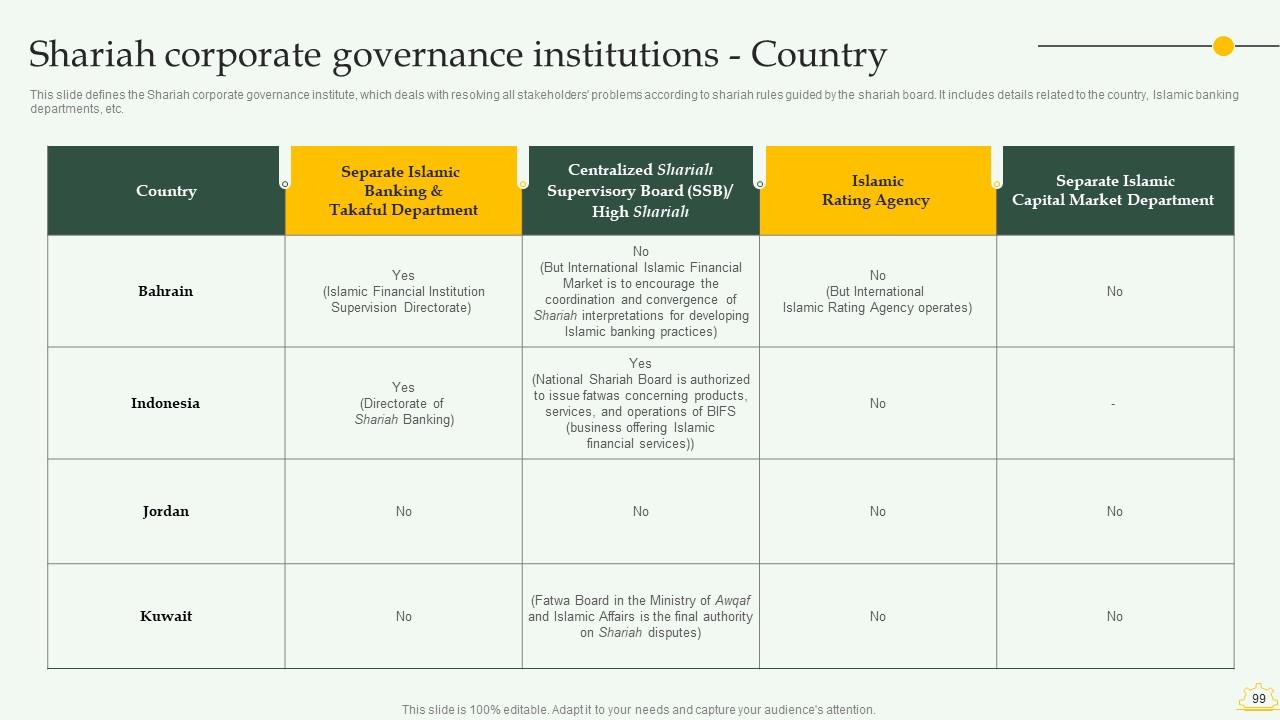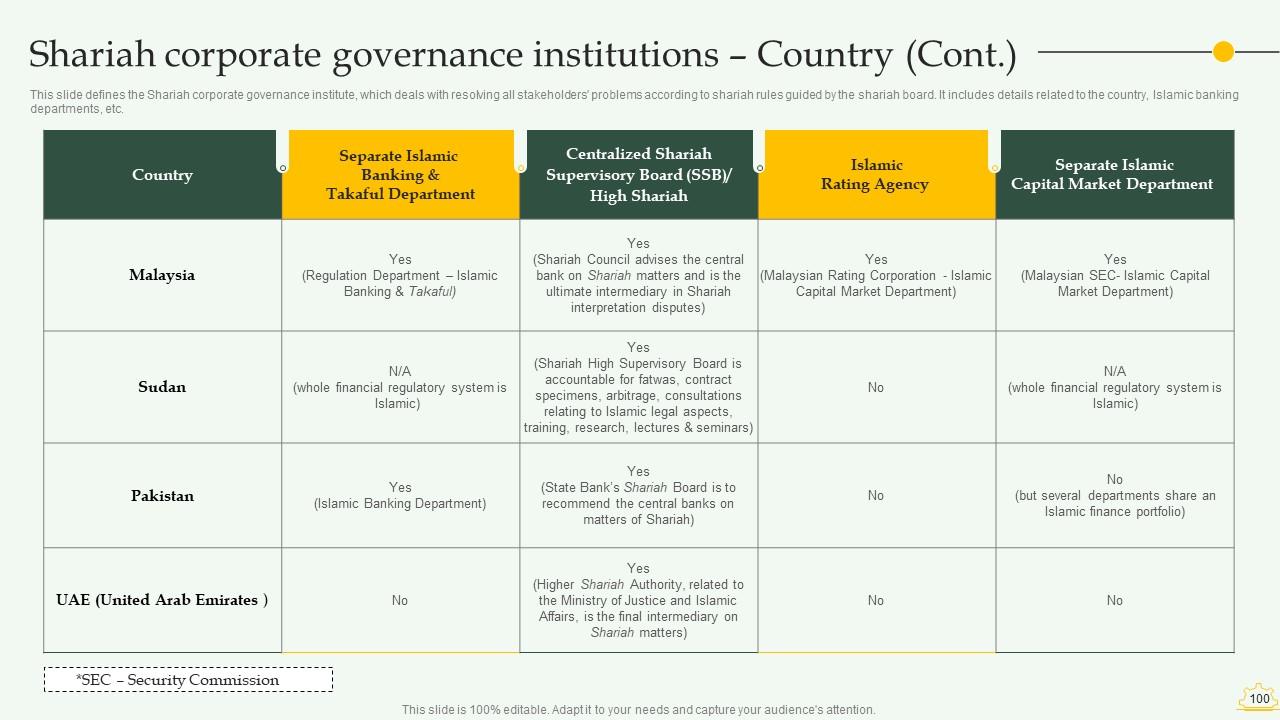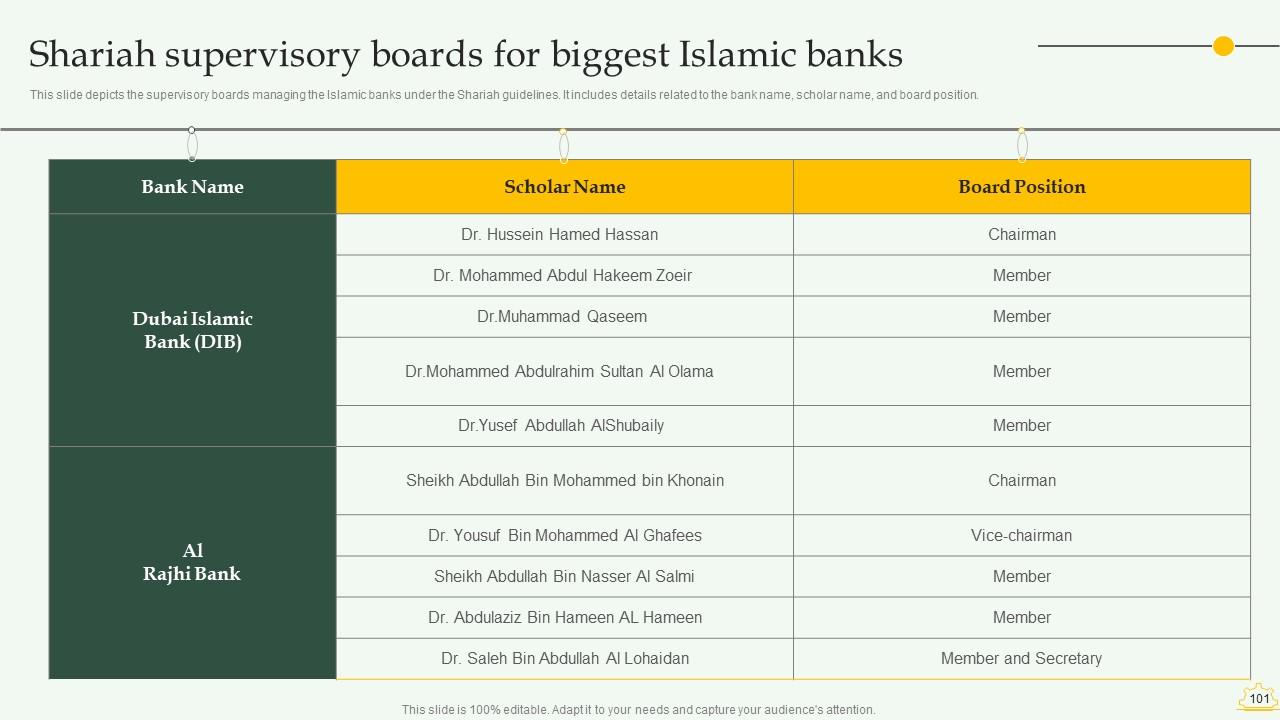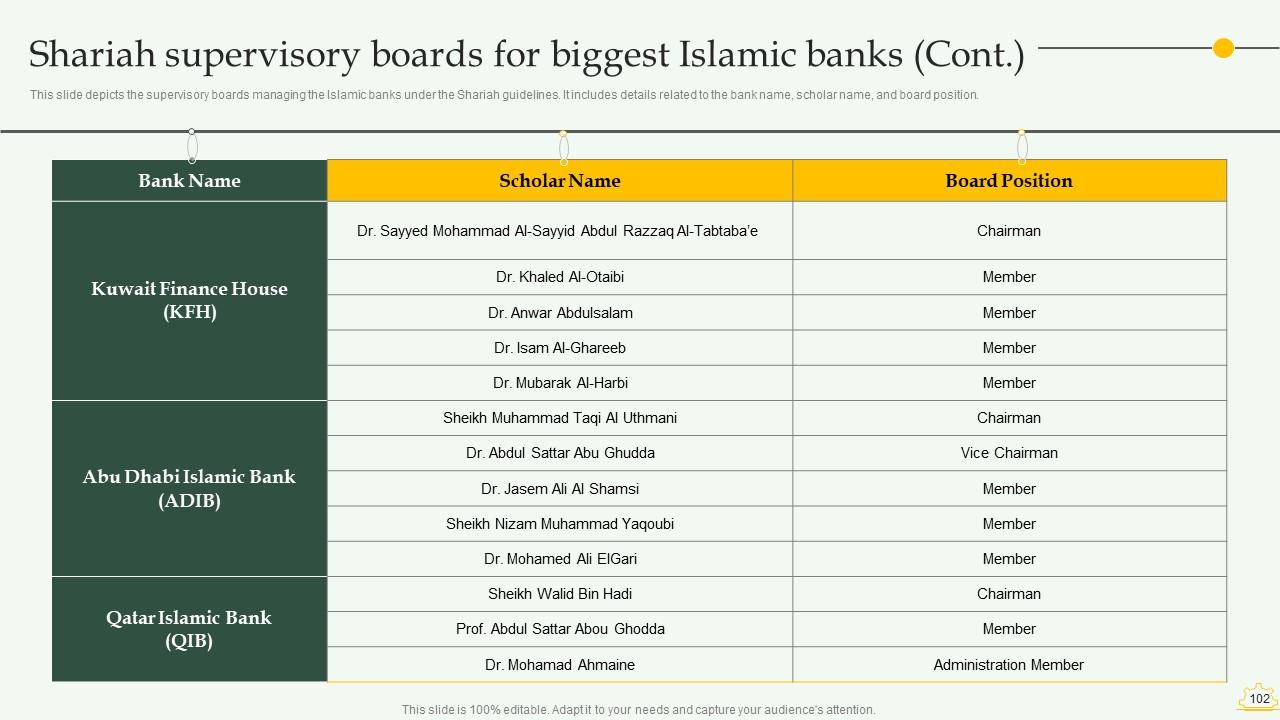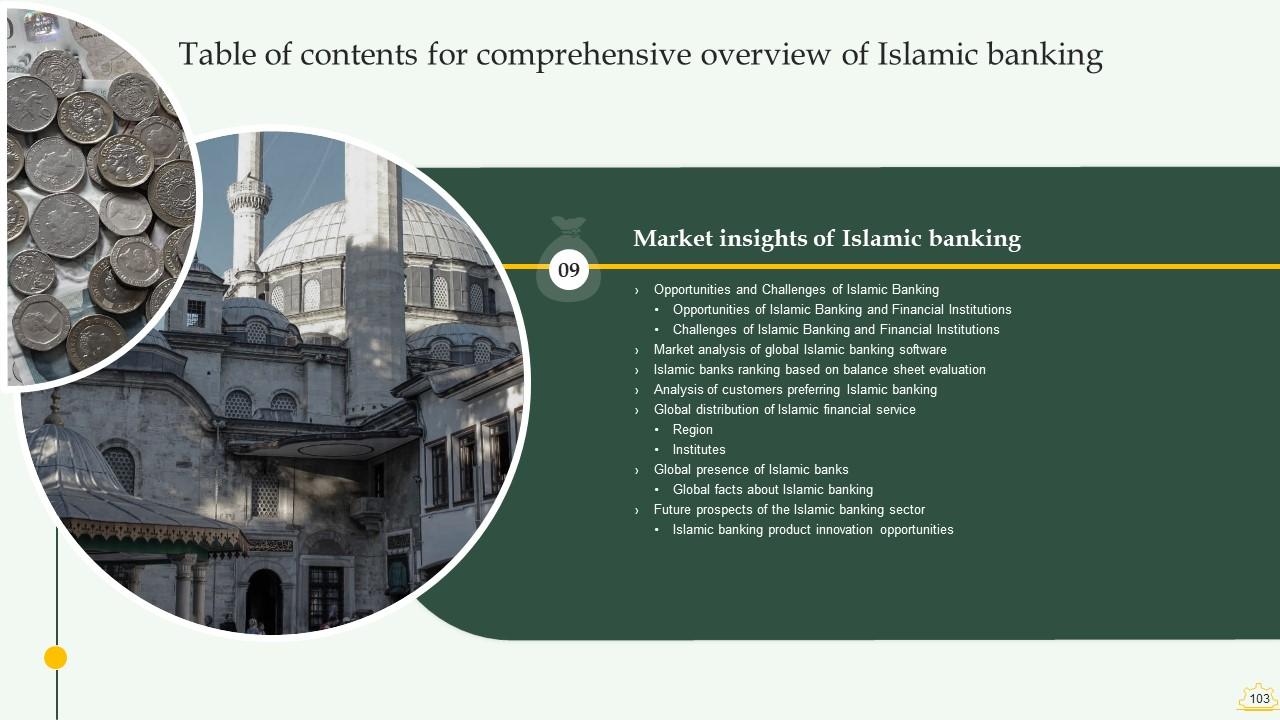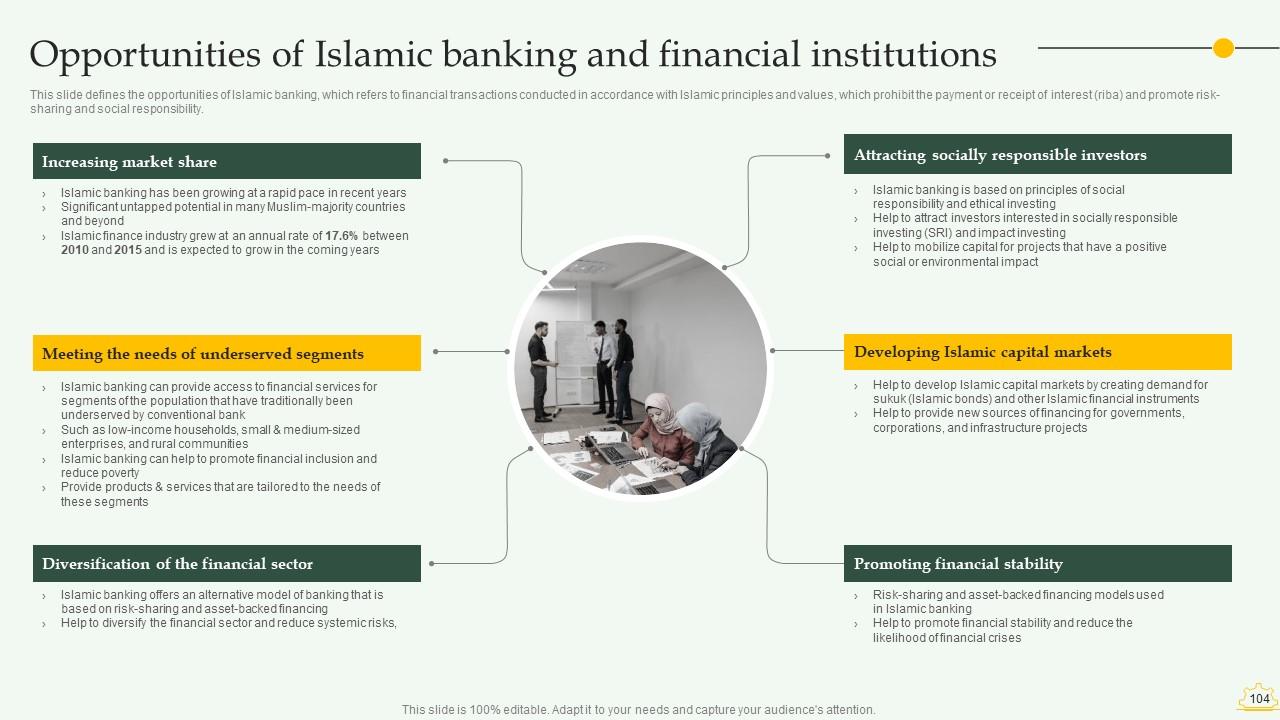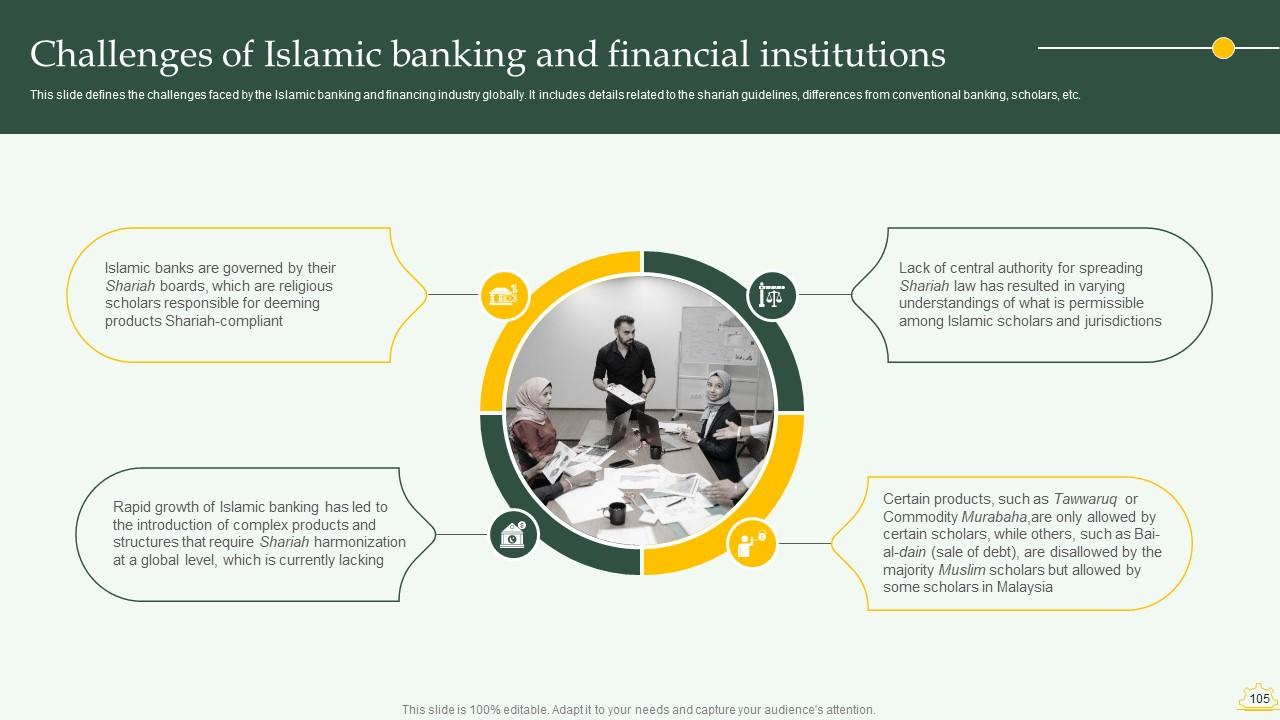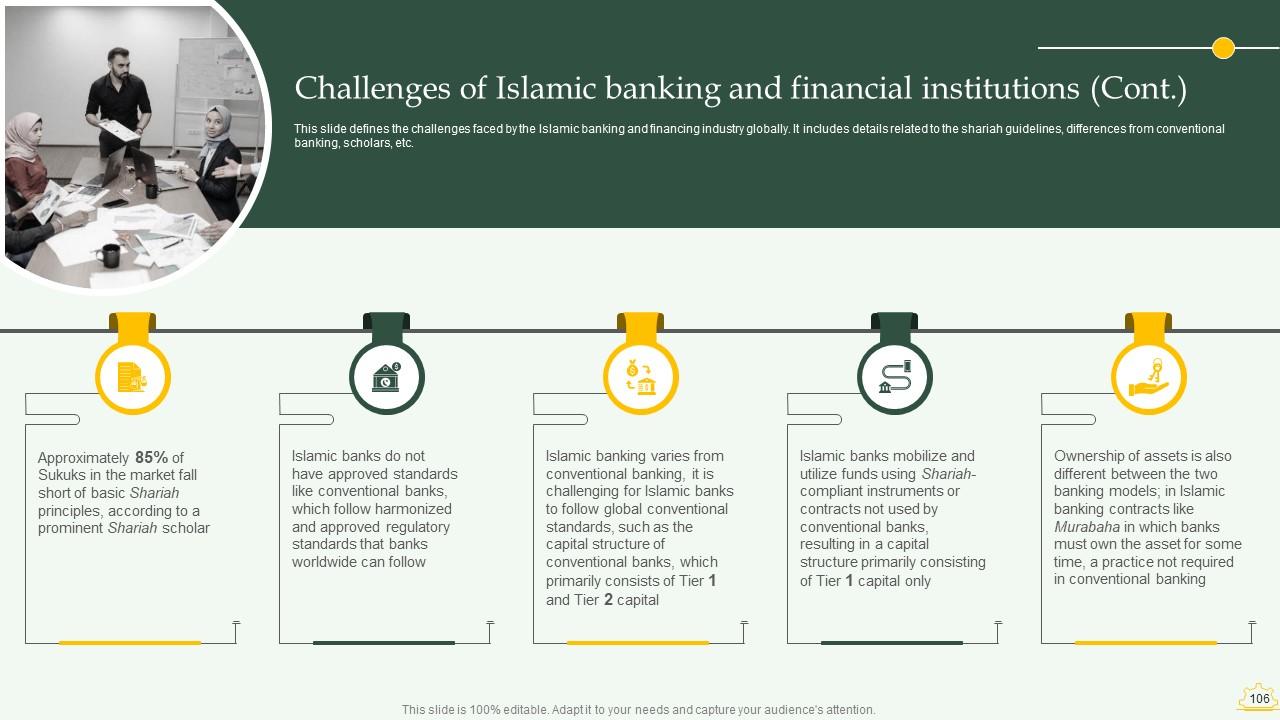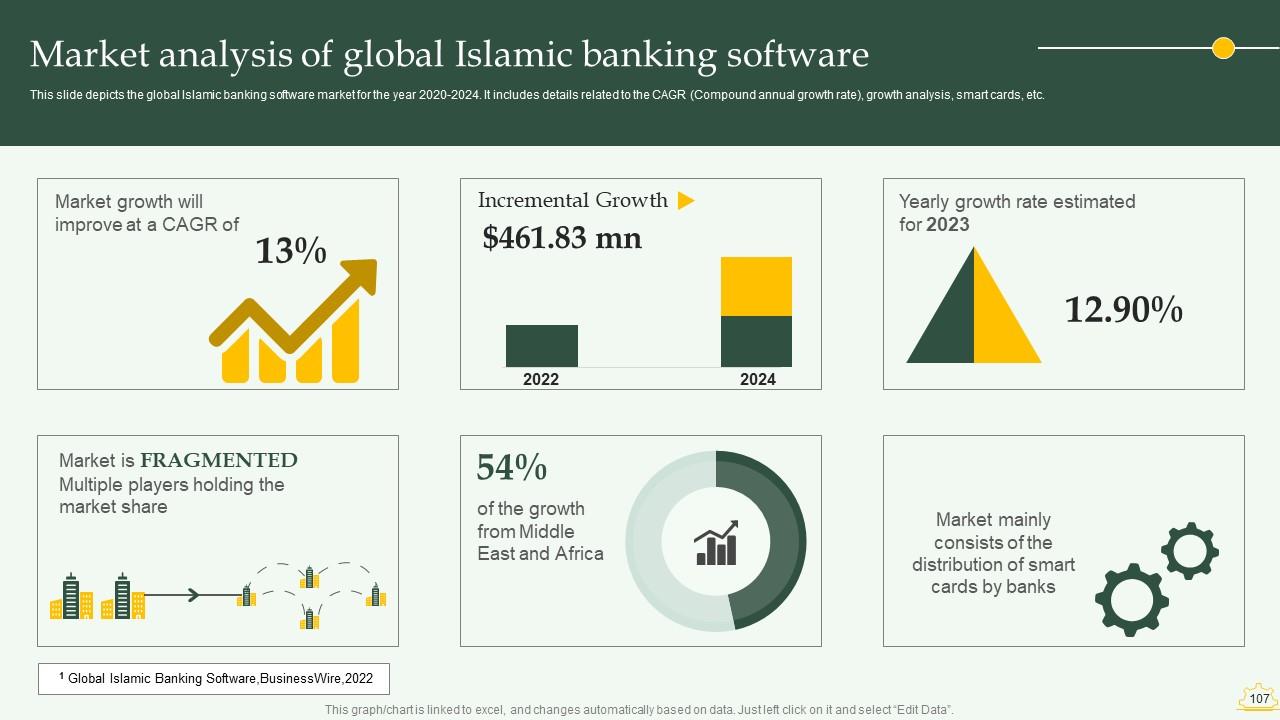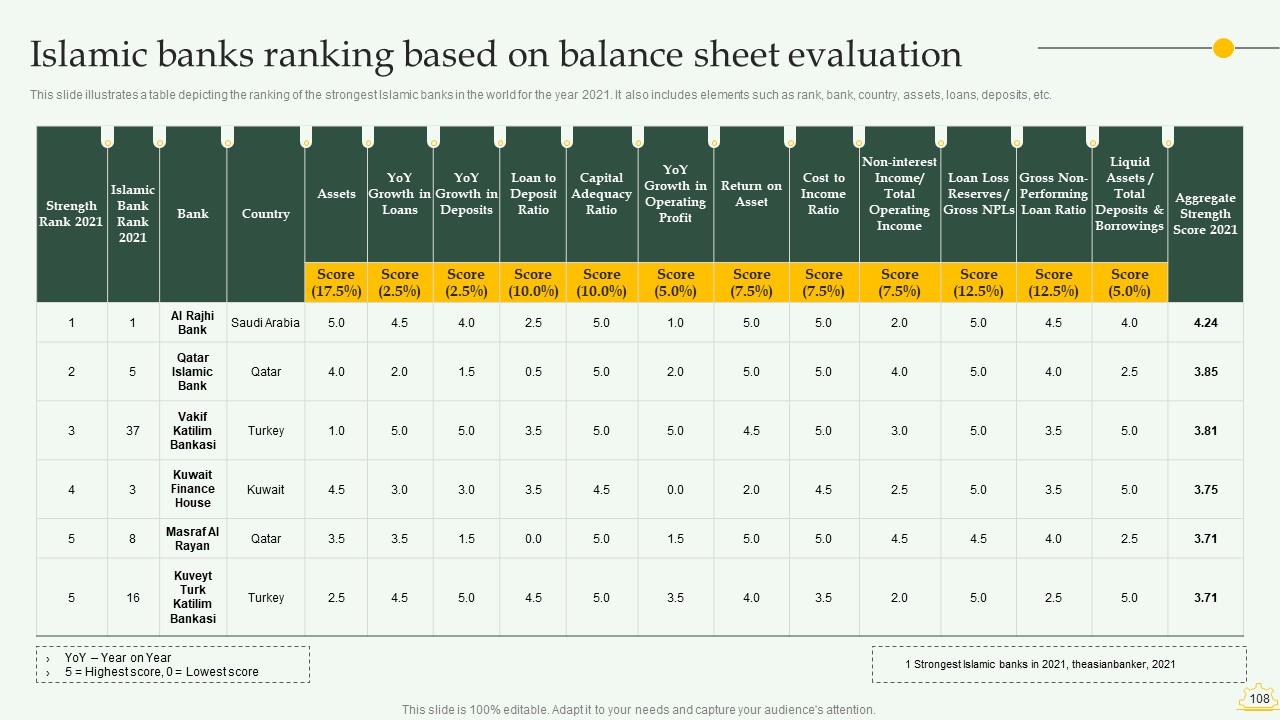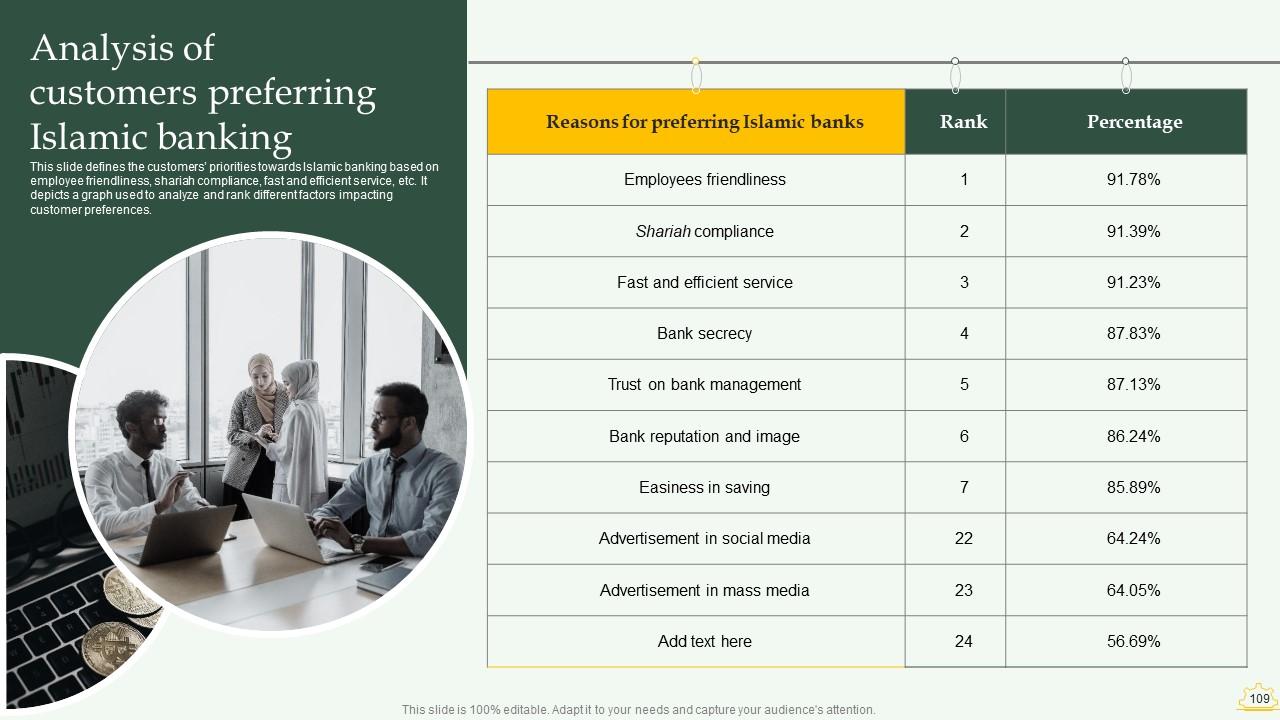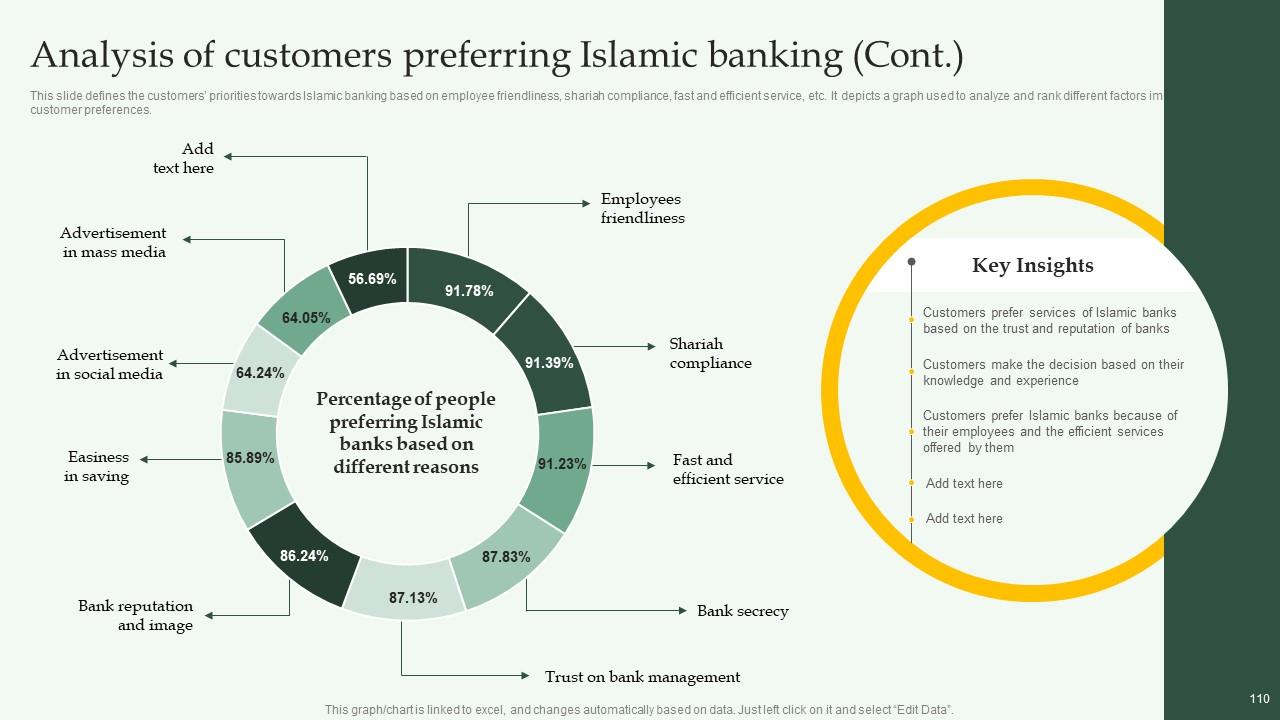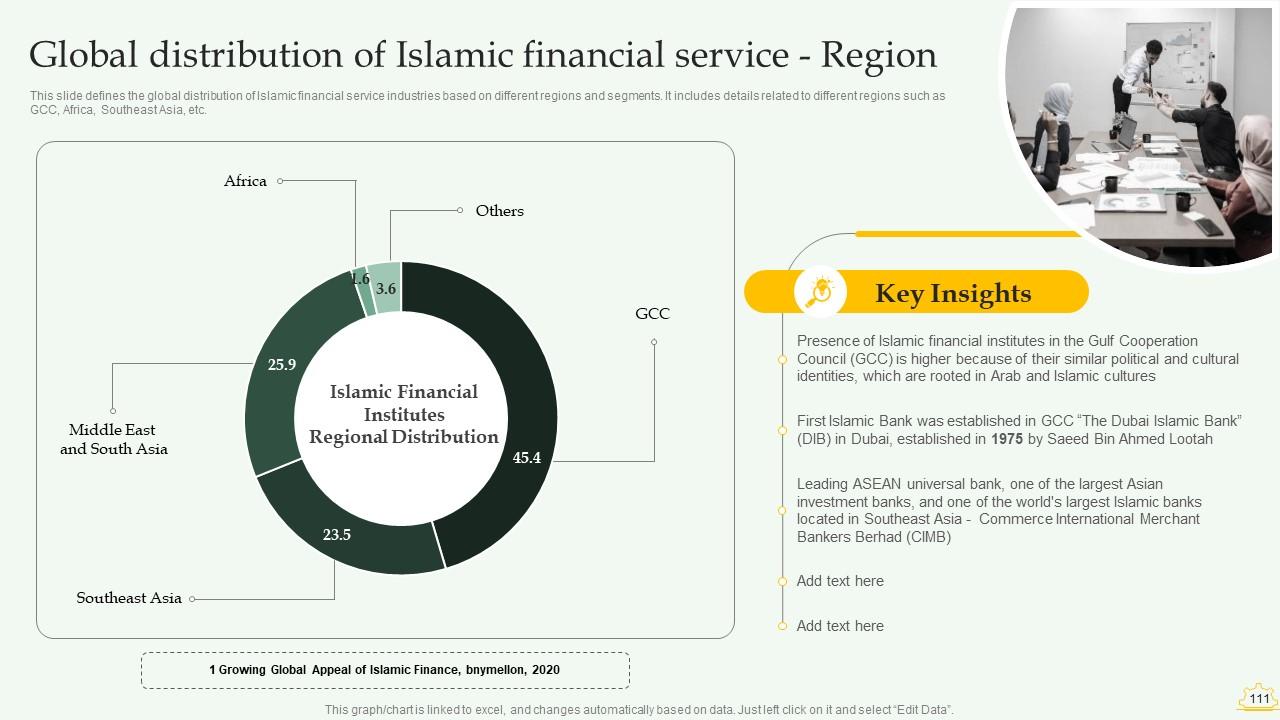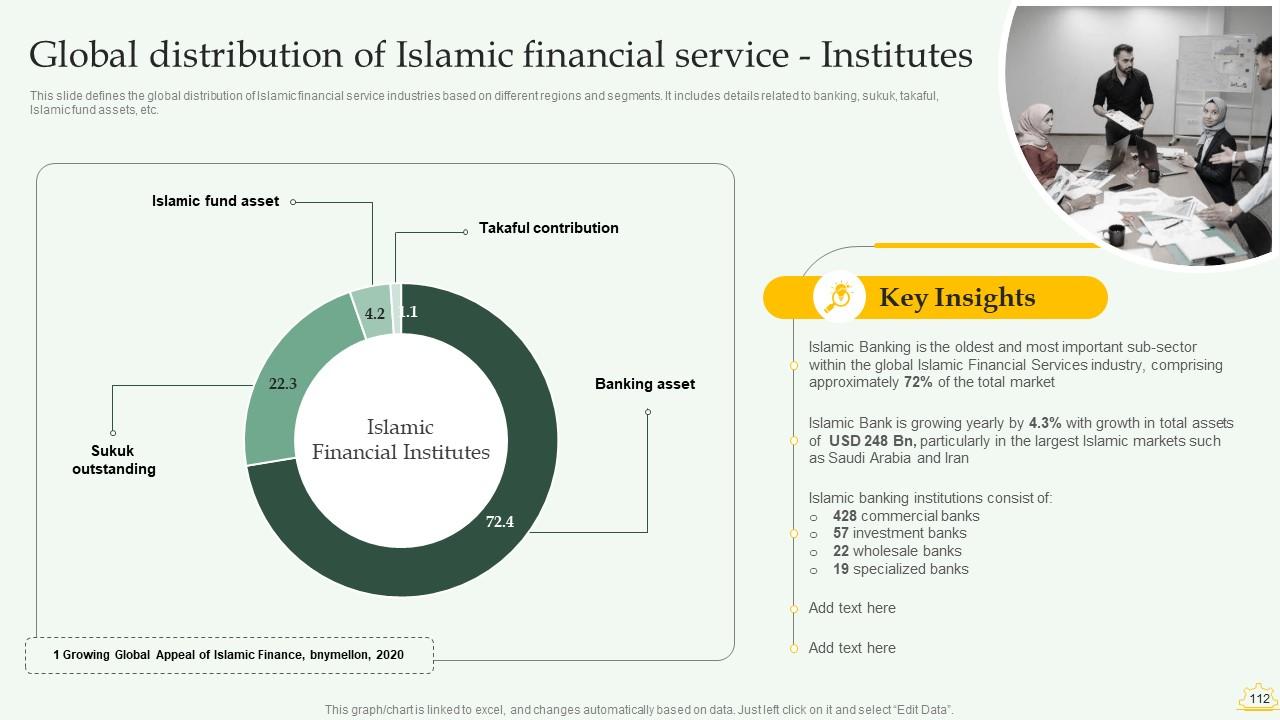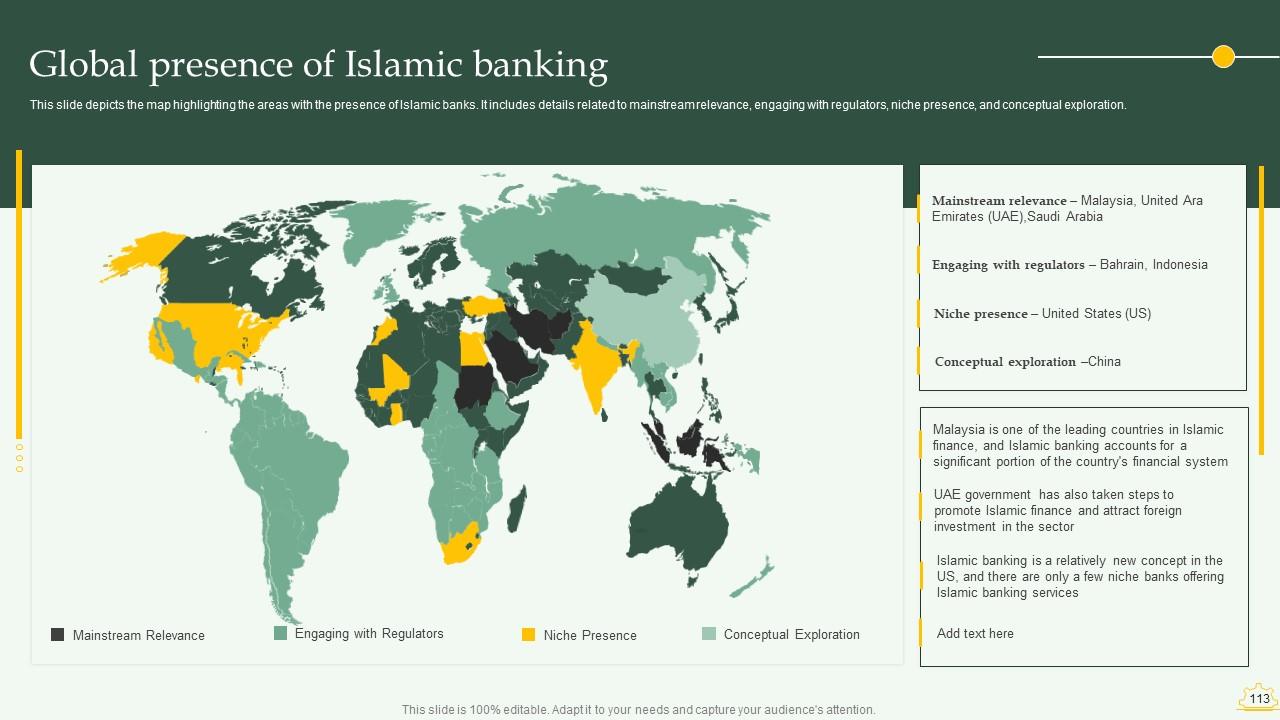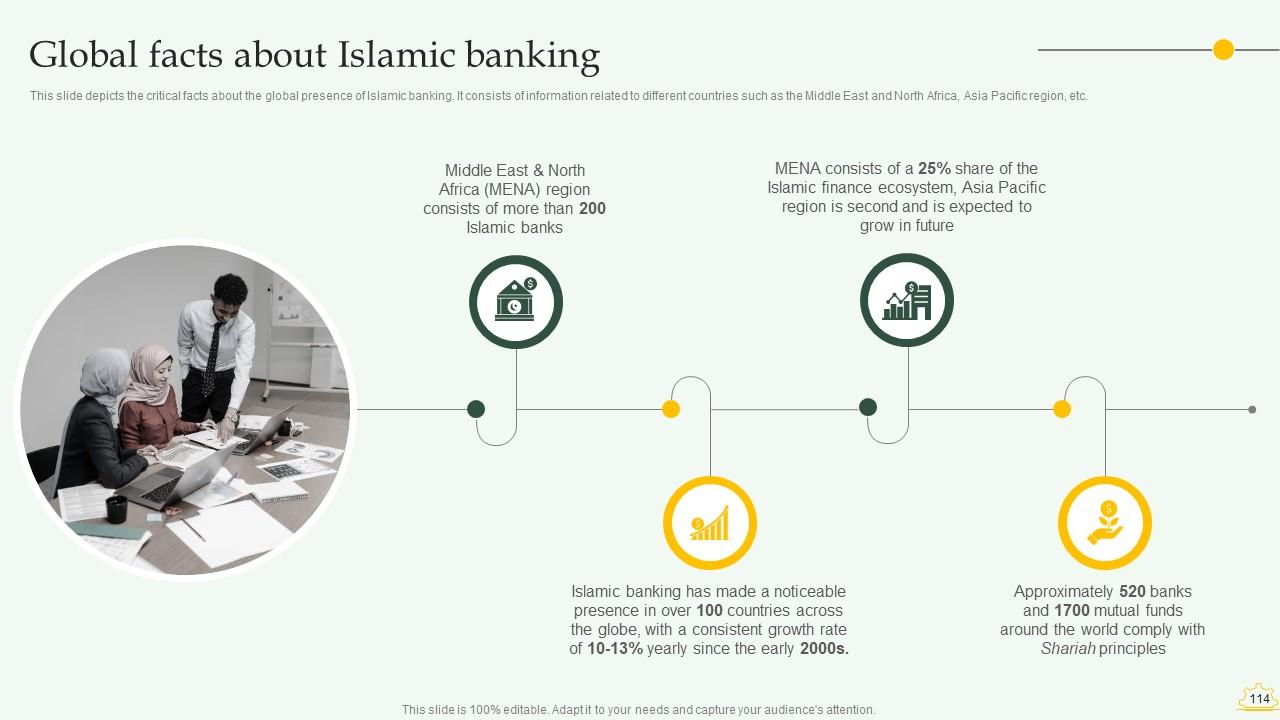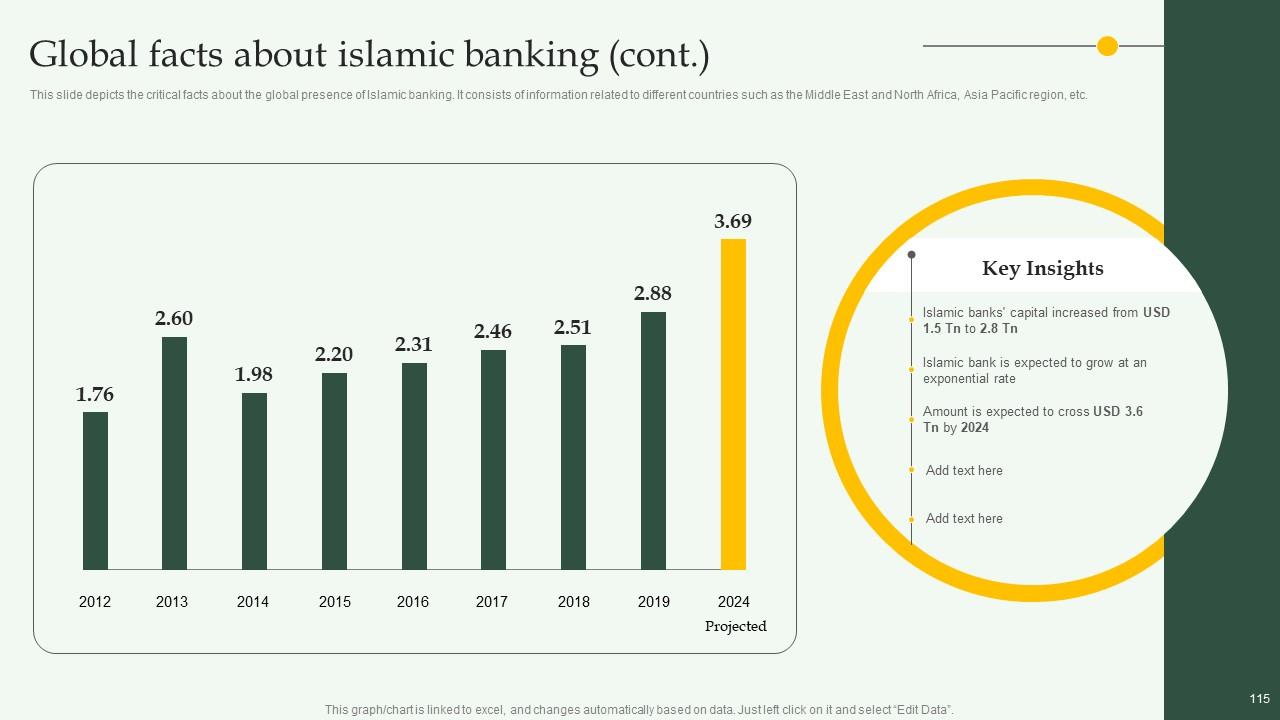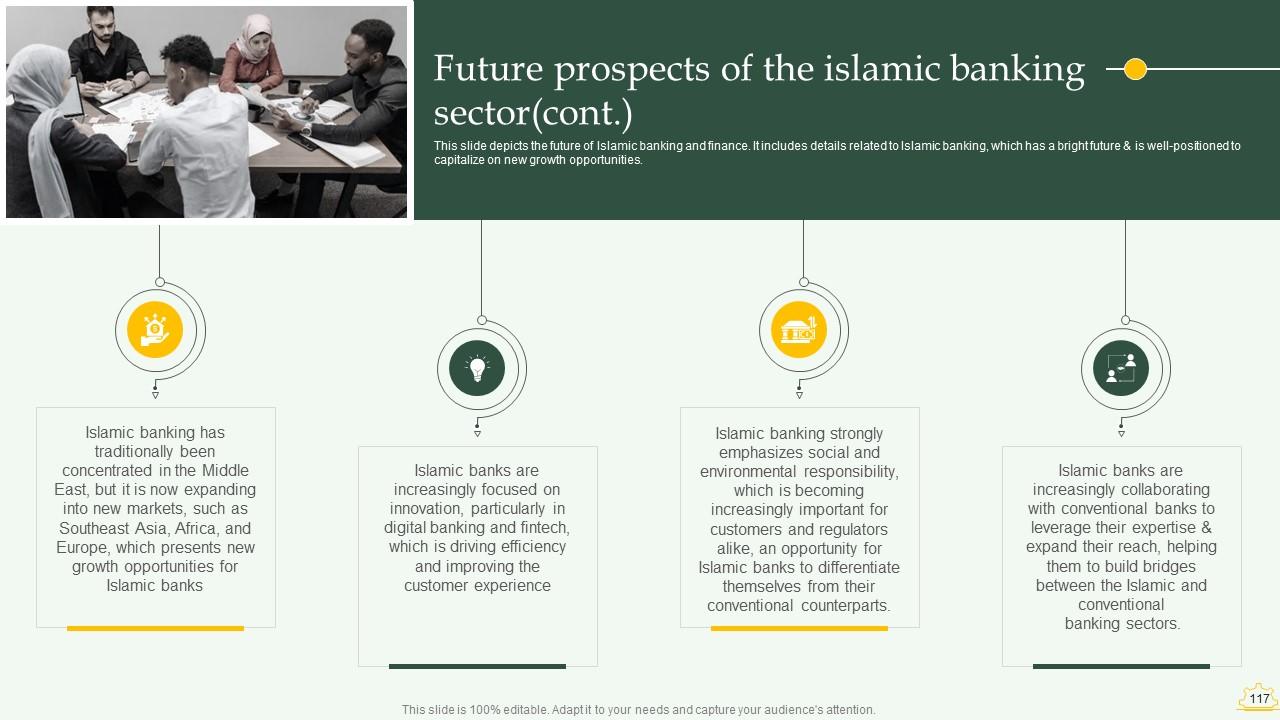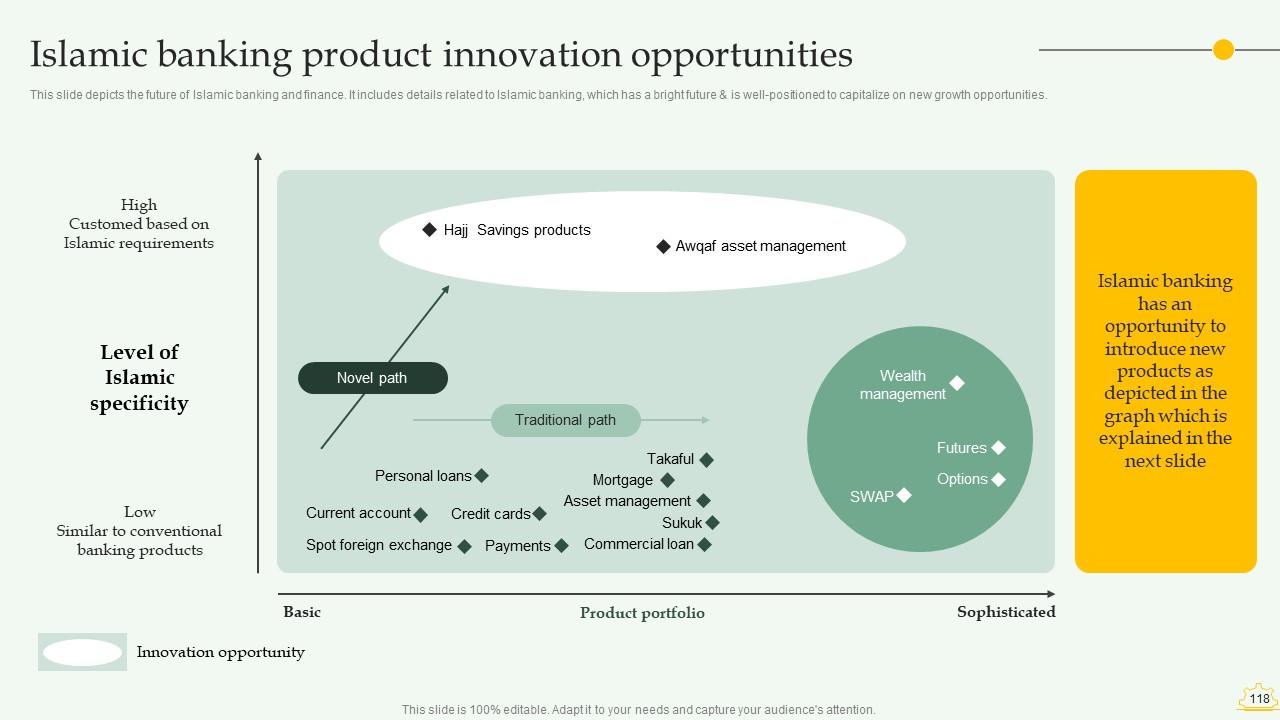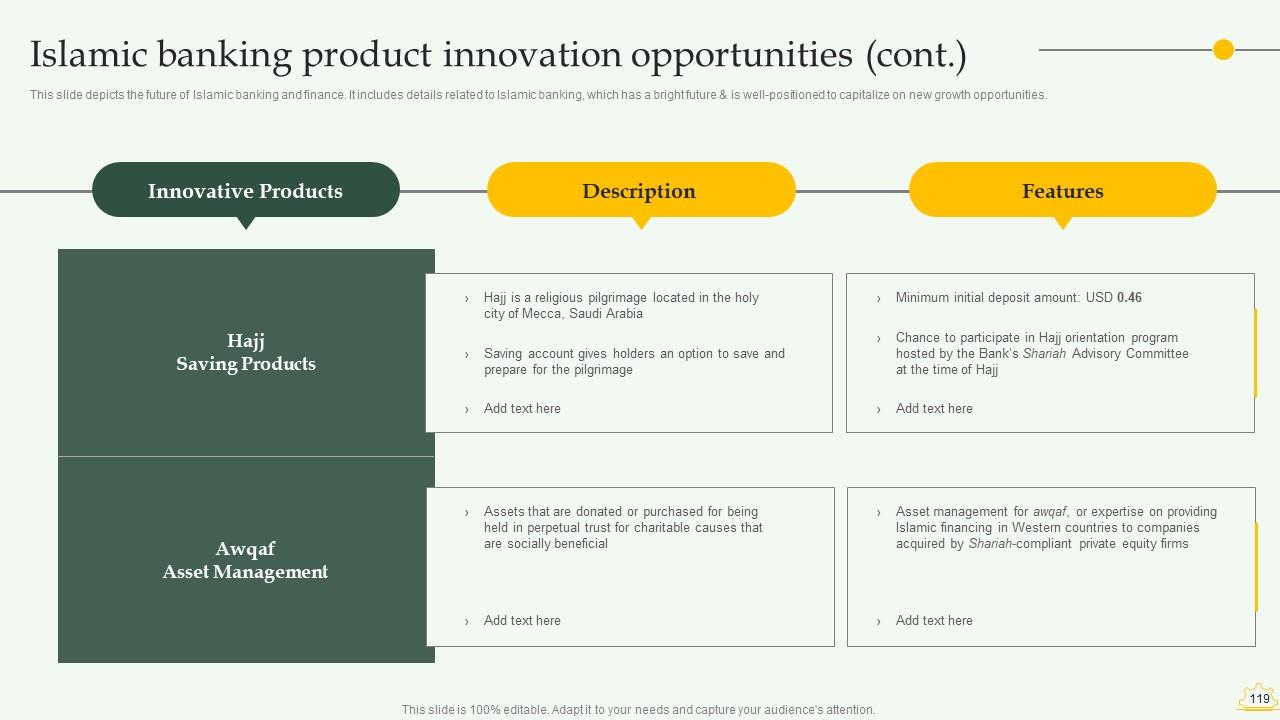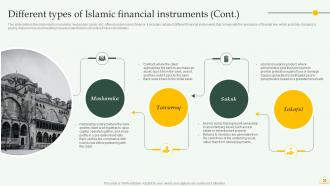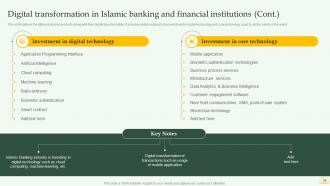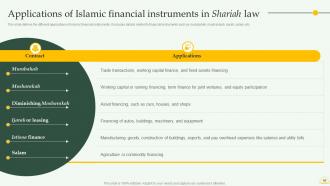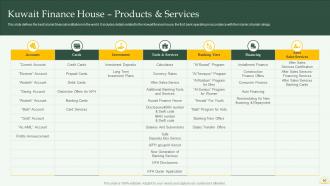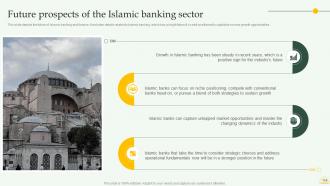Comprehensive Overview Of Islamic Banking Financial Sector Powerpoint Presentation Slides Fin CD
Islamic Banking is a financial system based on Islamic principles and values. Grab our Comprehensive Overview of Islamic Banking template. It offers an alternative way of banking that promotes social and ethical responsibility while avoiding interest-based transactions. Islamic Banking is based on profit and loss sharing, making it a more equitable financial system. Our Islamic Banking Deck is an essential tool for anyone interested in understanding the principles and practices of Islamic Banking. It provides a comprehensive overview of the key concepts, regulations, and instruments used in Islamic Banking. Our Sharia-compliant banking PPT covers various topics, like the prohibition of interest, risk-sharing, and the role of ethics in financial transactions. It also explains the different modes of financing in Islamic Banking, including Mudarabah, Musharakah, and Murabaha, among others. Additionally, our Ethical banking module with clear and concise explanations, is perfect for anyone seeking a better understanding of Islamic Banking. Whether you are an aspiring Banking professional, an entrepreneur, or simply curious about this growing field, the Islamic Banking Deck is an essential resource that will deepen your understanding and knowledge of Islamic Banking. Get access now.
Islamic Banking is a financial system based on Islamic principles and values. Grab our Comprehensive Overview of Islamic Ba..
- Google Slides is a new FREE Presentation software from Google.
- All our content is 100% compatible with Google Slides.
- Just download our designs, and upload them to Google Slides and they will work automatically.
- Amaze your audience with SlideTeam and Google Slides.
-
Want Changes to This PPT Slide? Check out our Presentation Design Services
- WideScreen Aspect ratio is becoming a very popular format. When you download this product, the downloaded ZIP will contain this product in both standard and widescreen format.
-

- Some older products that we have may only be in standard format, but they can easily be converted to widescreen.
- To do this, please open the SlideTeam product in Powerpoint, and go to
- Design ( On the top bar) -> Page Setup -> and select "On-screen Show (16:9)” in the drop down for "Slides Sized for".
- The slide or theme will change to widescreen, and all graphics will adjust automatically. You can similarly convert our content to any other desired screen aspect ratio.
Compatible With Google Slides

Get This In WideScreen
You must be logged in to download this presentation.
PowerPoint presentation slides
Enthrall your audience with this Comprehensive Overview Of Islamic Banking Financial Sector Powerpoint Presentation Slides Fin CD. Increase your presentation threshold by deploying this well-crafted template. It acts as a great communication tool due to its well-researched content. It also contains stylized icons, graphics, visuals etc, which make it an immediate attention-grabber. Comprising one hundred twenty slides, this complete deck is all you need to get noticed. All the slides and their content can be altered to suit your unique business setting. Not only that, other components and graphics can also be modified to add personal touches to this prefabricated set.
People who downloaded this PowerPoint presentation also viewed the following :
Content of this Powerpoint Presentation
Slide 1: This slide introduces Comprehensive Overview of Islamic Banking Financial Sector. Commence by stating Your Company Name.
Slide 2: This slide depicts the Agenda of the presentation.
Slide 3: This slide includes the Table of contents.
Slide 4: This slide highlights the Title for the Topics to be discussed further.
Slide 5: This slide presents the Overview of Islamic Economic System in Shariah law.
Slide 6: This slide states the Principles and Characteristics of the Islamic Economic System.
Slide 7: This slide covers the details related to the economic system based on guidelines given in the shariah law.
Slide 8: This slide shows the economic system based on guidelines given in the shariah law.
Slide 9: This slide contains the Heading for the Contents to be discsussed further.
Slide 10: This slide depicts the Overview of Islamic banking in Shariah law.
Slide 11: Thisb slide continues the Overview of Islamic banking in Shariah law.
Slide 12: This slide defines the principles and social responsibilities of Islamic banks.
Slide 13: This slide reveals the History of Islamic banking.
Slide 14: This slide covers the details related to Islamic banking as specified in Shariah or Islamic law.
Slide 15: This slide continues the History of Islamic banking.
Slide 16: This slide showcases the Principles and philosophy of Islamic banking.
Slide 17: This slide exhibits the Principles and philosophy of Islamic banking.
Slide 18: This slide continues the Principles and philosophy of Islamic banking.
Slide 19: This slide covers the details related to Islamic banking, a banking system that complies with Islamic law (shariah).
Slide 20: This slide defines the benefits of Islamic banking to its clients.
Slide 21: This slide defines the two concepts Riba and Gharar, of Islamic finance that are prohibited under Sharia law.
Slide 22: This slide talks about the Prohibition of Riba in Shariah law.
Slide 23: This slide defines the prohibition of Gharar, an essential aspect of Islamic finance that aims to promote fairness, transparency, and responsible business practices.
Slide 24: This slide continues the Prohibition of Gharar in Shariah law.
Slide 25: This slide depicts a flowchart representing Islamic banks’ transactions.
Slide 26: This slide highlights the Key differences between Islamic and conventional banking.
Slide 27: This slide states the Different types of Islamic financial instruments.
Slide 28: This slide continues the Different types of Islamic financial instruments.
Slide 29: This slide covers the details related to Islamic finance, a system of financial transactions that complies with Shariah law.
Slide 30: This slide portrays the Different types of Islamic banking model.
Slide 31: This slide defines Islamic finance and banking's external atmosphere based on the PESTEL analysis.
Slide 32: This slide continues the Islamic finance and banking PESTEL analysis.
Slide 33: This slide defines Islamic finance and banking’s internal and external atmosphere based on the SWOT analysis.
Slide 34: This slide talks about the Digital transformation in Islamic banking and financial institutions.
Slide 35: This slide continues the Digital transformation in Islamic banking and financial institutions.
Slide 36: This slide highlights the Title for the Ideas to be covered further.
Slide 37: This slide focuses on Comparing the governance structure of Islamic and conventional institutions.
Slide 38: This slide states the Differences between Conventional Bank and Islamic Bank.
Slide 39: This slide highlights the Differences between Conventional Bank and Islamic Bank.
Slide 40: This slide covers the details related to the differences between Islamic and conventional banking based on financial instruments.
Slide 41: This slide states the Differences between Conventional Bank and Islamic Bank.
Slide 42: This slide continues the Differences between Conventional Bank and Islamic Bank.
Slide 43: This slide portrays the Heading for the Ideas to be discussed next.
Slide 44: This slide exhibits the Modes of Islamic banking and financing in Shariah law.
Slide 45: This slide defines the different types of Islamic banking or Islamic finance which is a form of shariah (Islamic law)-compliant finance.
Slide 46: This slide presents the Applications of Islamic financial instruments in Shariah law.
Slide 47: This slide depicts the flowchart defining the process of transacting in Islamic financial instruments.
Slide 48: This slide states the Title for the Contents to be covered in the Upcoming template.
Slide 49: This slide covers the details related to the different categories of financial contracts offered by Islamic banks.
Slide 50: This slide shows the details related to the different categories of financial contracts offered by Islamic banks.
Slide 51: This slide presents the different categories of financial contracts offered by Islamic banks.
Slide 52: This slide displays the Islamic bank offerings across geographical regions.
Slide 53: This slide covers the details related to the different categories of financial contracts offered by Islamic banks.
Slide 54: This slide continues the different categories of financial contracts offered by Islamic banks.
Slide 55: This slide presents the details related to the different categories of financial contracts offered by Islamic banks.
Slide 56: This slide shows the different categories of financial contracts offered by Islamic banks.
Slide 57: This slide continues the Islamic bank offerings across geographical regions.
Slide 58: This slide portrays the different categories of financial contracts offered by Islamic banks.
Slide 59: This slide exhibits the Heading for the Topics to be discussed further.
Slide 60: This slide depicts the list of the largest Islamic banks based on their assets and net income.
Slide 61: EThis slide talks about the existence and presence of largest Islamic banks worldwide.
Slide 62: This slide defines the best Islamic financial institutions in the world for 2022.
Slide 63: This slide represents the best Islamic financial institutions in the world.
Slide 64: This slide continues the World’s best Islamic financial Institutions.
Slide 65: This slide defines the best Islamic financial institutions in the world.
Slide 66: This slide defines the best Islamic financial institutions in the world.
Slide 67: This slide continues the World’s best Islamic financial Institutions.
Slide 68: This slide presents the best Islamic financial institutions in the world.
Slide 69: This slide showcases the World’s best Islamic financial Institutions.
Slide 70: This slide continues the best Islamic financial institutions in the world.
Slide 71: This slide defines the best Islamic financial institutions in the world.
Slide 72: This slide states the best Islamic financial institutions in the world.
Slide 73: This slide continues the World’s best Islamic financial Institutions.
Slide 74: This slide defines the best Islamic financial institutions in the world.
Slide 75: This slide talks about the World’s best Islamic financial Institutions.
Slide 76: This slide continues the World’s best Islamic financial Institutions .
Slide 77: This slide defines the best Islamic financial institutions in the world.
Slide 78: This slide shows the World’s best Islamic financial Institutions.
Slide 79: This slide continues the World’s best Islamic financial Institutions.
Slide 80: This slide defines the best Islamic financial institutions in the world.
Slide 81: This slide presents the best Islamic financial institutions in the world.
Slide 82: This slide continues the best Islamic financial institutions in the world.
Slide 83: This slide defines the best Islamic financial institutions in the world.
Slide 84: This slide highlights the Title for the Topics to be covered in the upcoming template.
Slide 85: This slide exhibits the Role of Islamic banking and financial institutions.
Slide 86: This slide defines the role of Islamic banks in promoting Islamic financing.
Slide 87: This slide continues the Role of Islamic banking and financial institutions.
Slide 88: This slide presents the Role of Islamic financial institutions for economic growth.
Slide 89: This slide continues the Role of Islamic financial institutions for economic growth.
Slide 90: This slide covers the details related to Islamic banking.
Slide 91: This slide continues the Growth and development of Islamic banking industry globally.
Slide 92: This slide includes the Heading for the Contents to be discussed further.
Slide 93: This slide displays the Overview of Shariah law and its role in Islamic Banking.
Slide 94: This slide continues the Overview of Shariah law and its role in Islamic Banking.
Slide 95: This slide defines Shariah governance which is a mechanism adopted in Islamic financial institutions.
Slide 96: This slide covers the details related to Shariah governance, which is integral to Islamic financial system stability.
Slide 97: This slide presents Shariah Supervisory Boards Roles and Responsibilities.
Slide 98: This slide continues Shariah Supervisory Boards Roles and Responsibilities.
Slide 99: This slide defines the Shariah corporate governance institut.
Slide 100: This slide continues Shariah corporate governance institutions.
Slide 101: This slide depicts the supervisory boards managing the Islamic banks under the Shariah guidelines.
Slide 102: This slide shows the supervisory boards managing the Islamic banks under the Shariah guidelines.
Slide 103: This slide includes the Heading for the Contents to be covered in the next template.
Slide 104: This slide defines the opportunities of Islamic banking.
Slide 105: This slide exhibits the Challenges of Islamic banking and financial institutions.
Slide 106: This slide continues the Challenges of Islamic banking and financial institutions.
Slide 107: This slide depicts the global Islamic banking software market for the year 2020-2024.
Slide 108: This slide illustrates a table depicting the ranking of the strongest Islamic banks in the world for the year 2021.
Slide 109: This slide defines the customers’ priorities towards Islamic banking.
Slide 110: This slide continues the Analysis of customers preferring Islamic banking.
Slide 111: This slide highlights the Global distribution of Islamic financial service.
Slide 112: This slide defines the global distribution of Islamic financial service industries based on different regions and segments.
Slide 113: This slide depicts the map highlighting the areas with the presence of Islamic banks.
Slide 114: This slide mentions the Global facts about Islamic banking.
Slide 115: This slide continues the Global facts about islamic banking.
Slide 116: This slide displays the future of Islamic banking and finance.
Slide 117: This slide continues the Future prospects of the islamic banking sector.
Slide 118: This slide shows the future of Islamic banking and finance.
Slide 119: This slide continues the Islamic banking product innovation opportunities.
Slide 120: This is the Thank You slide for acknowledgement.
Comprehensive Overview Of Islamic Banking Financial Sector Powerpoint Presentation Slides Fin CD with all 125 slides:
Use our Comprehensive Overview Of Islamic Banking Financial Sector Powerpoint Presentation Slides Fin CD to effectively help you save your valuable time. They are readymade to fit into any presentation structure.
FAQs
The five pillars of Islamic banking are: •Sharia compliance: All activities of Islamic banks must be compliant with Sharia. •Profit-sharing: Islamic banks share profits and losses with their customers. •Asset-backed financing: Islamic banks only finance assets that have real economic value. •Risk-sharing: Islamic banks share risks with their customers. •Social responsibility: Islamic banks have a social responsibility to their customers and to the wider community.
The three main prohibitions in Islamic banking are: •Riba (interest): This is the most important prohibition in Islamic banking. Interest is considered to be a form of riba, which is forbidden under Sharia. •Maisir (speculation or gambling): This is also forbidden under Sharia. Islamic banks do not engage in any activities that involve speculation or gambling. •Gharar (uncertainty): This is a form of risk that is considered to be excessive or unacceptable under Sharia. Islamic banks avoid any transactions that involve gharar.
There are many different types of Islamic banking products, but some of the most common include: •Mudarabah (profit-sharing): This is a contract between an Islamic bank and a customer, where the bank provides the capital and the customer provides the expertise. The profits are shared between the bank and the customer, and the losses are borne by the customer. •Musharakah (joint venture): This is a contract between an Islamic bank and a customer, where both parties contribute capital and share profits and losses. •Murabaha (cost-plus financing): This is a contract where an Islamic bank buys an asset on behalf of a customer and then sells it to the customer at a profit. The profit is calculated on the basis of the cost of the asset and a mark-up. •Ijara (leasing): This is a contract where an Islamic bank leases an asset to a customer for a fixed period of time. The customer pays rent to the bank, and at the end of the lease period, in which the customer has the option to purchase the asset.
There are many benefits to Islamic banking, including: •It is compliant with Islamic law. •It shares profits and losses with customers. •It is based on real economic activity. •It is a more ethical and sustainable form of banking.
The key difference lies in the concept of interest (riba). Islamic banking prohibits the charging or paying of interest as it is considered exploitative. Instead, Islamic banks engage in profit-sharing arrangements, risk-sharing partnerships, and asset-based financing to ensure transactions are compliant with Sharia principles.
-
Easily Understandable slides.
-
The templates you provide are great! They have saved me tons of time and made my presentations come alive. Thank you for this awesome product. Keep up the good work!


